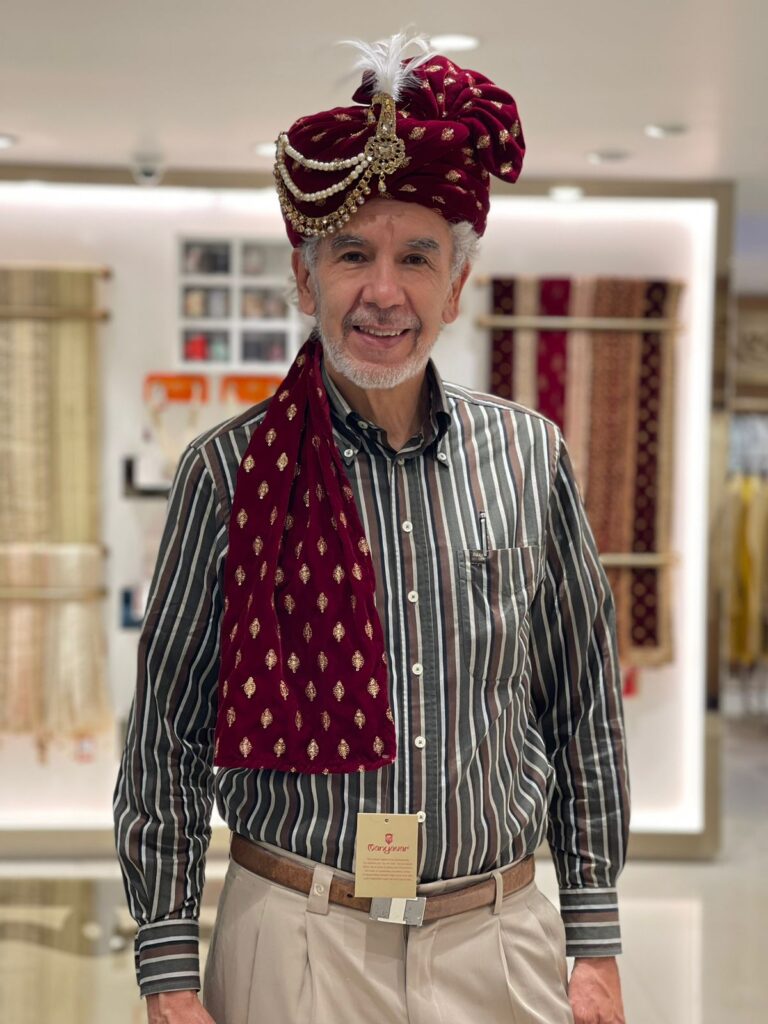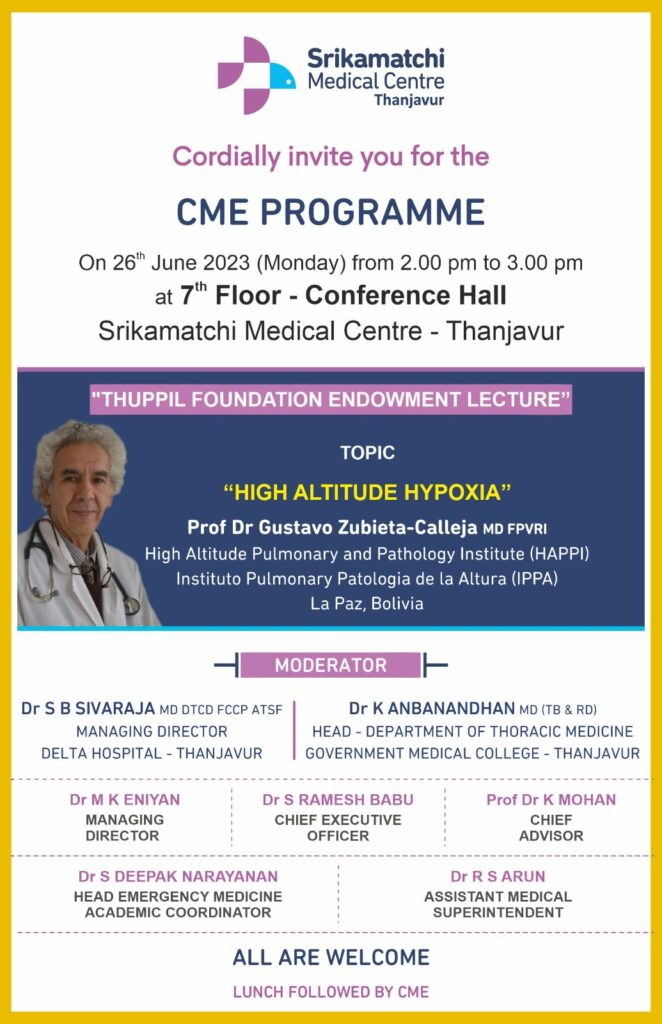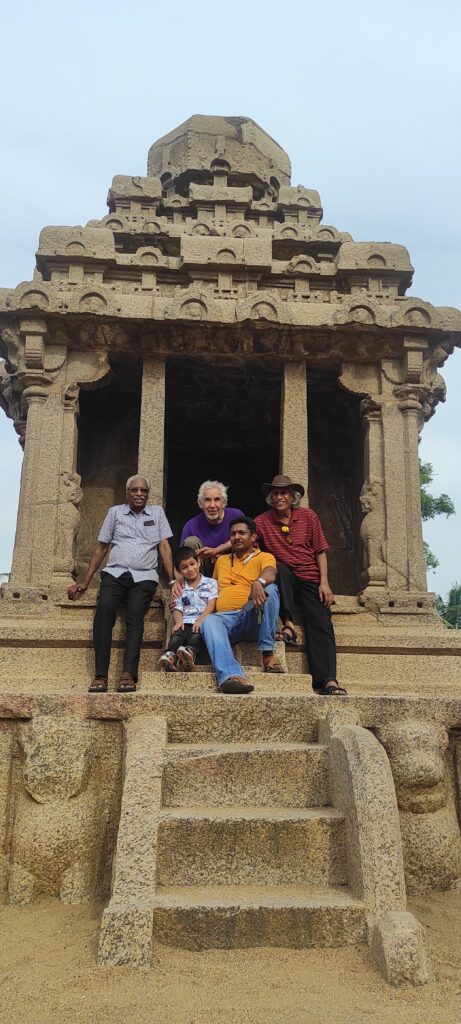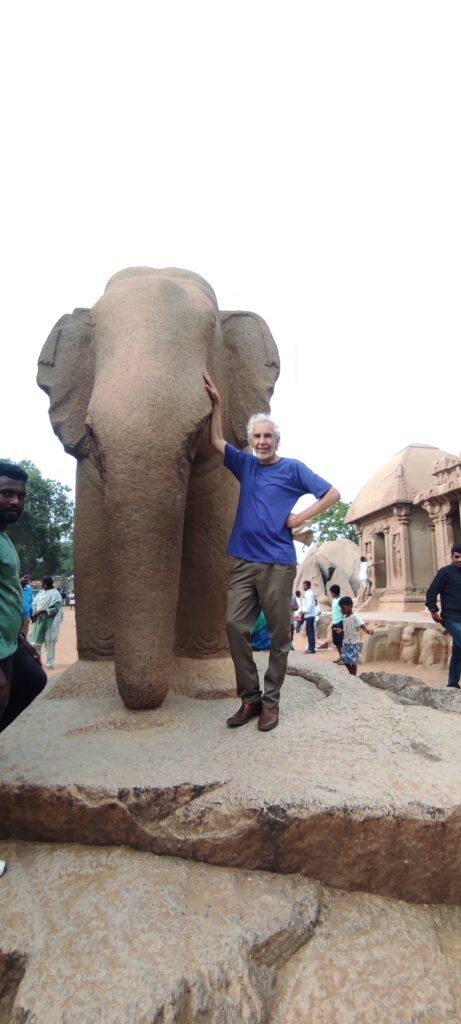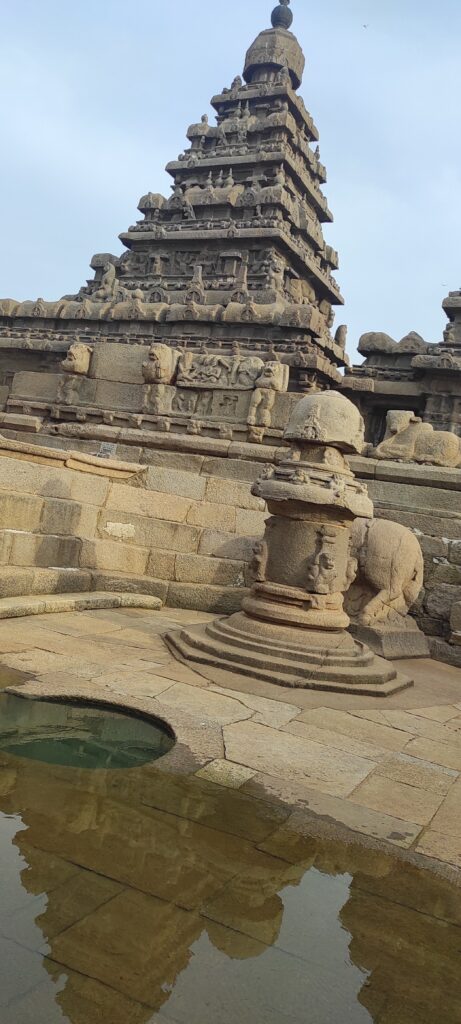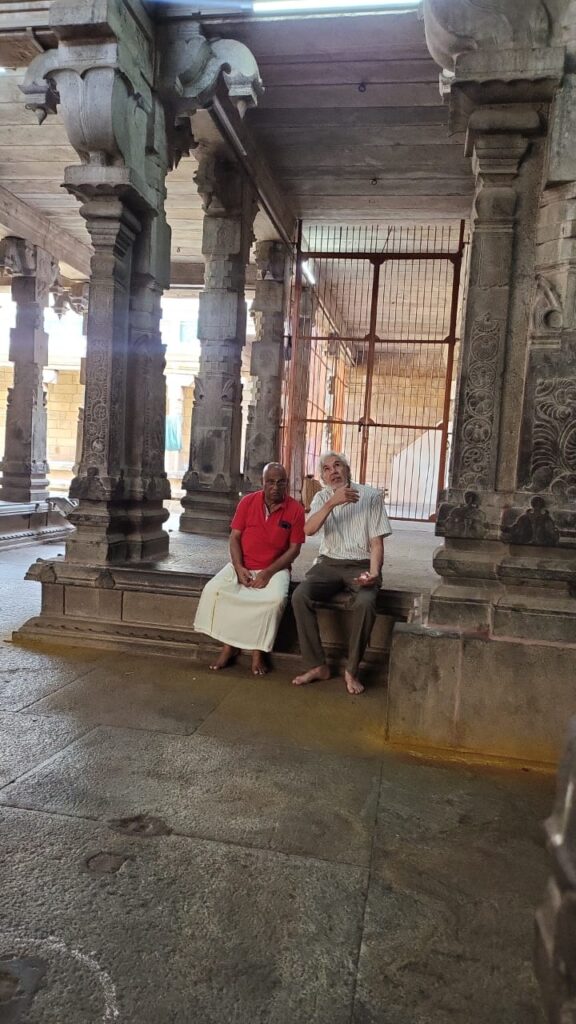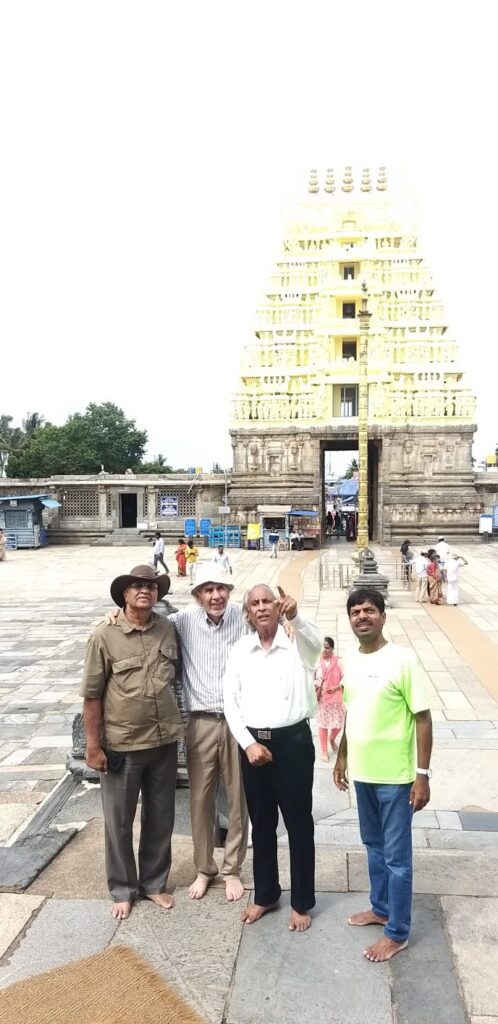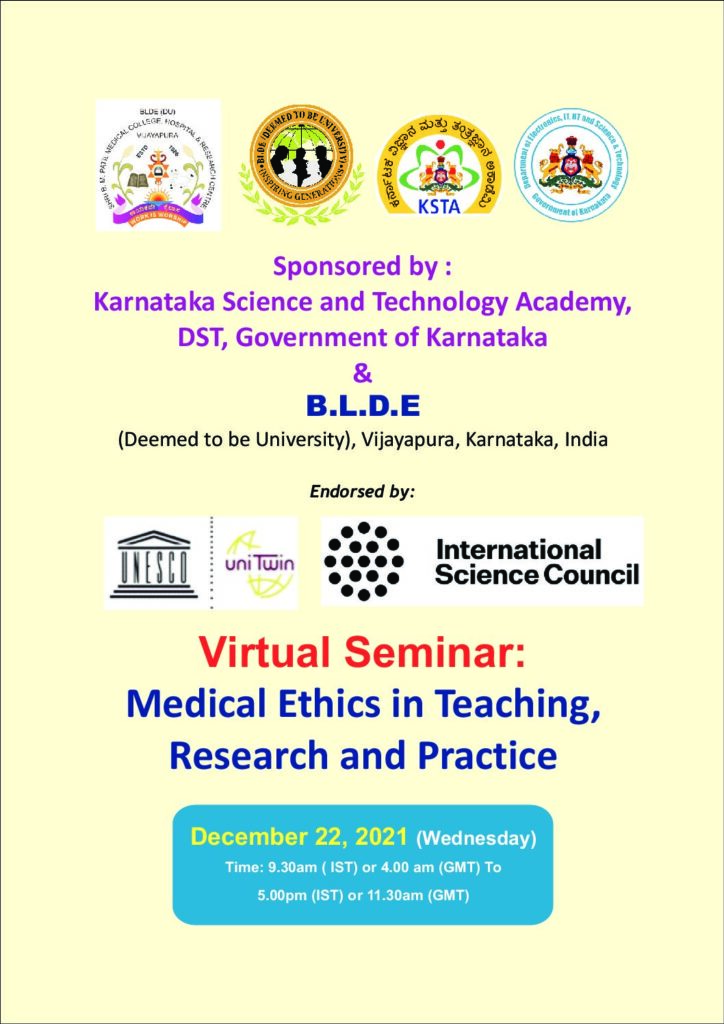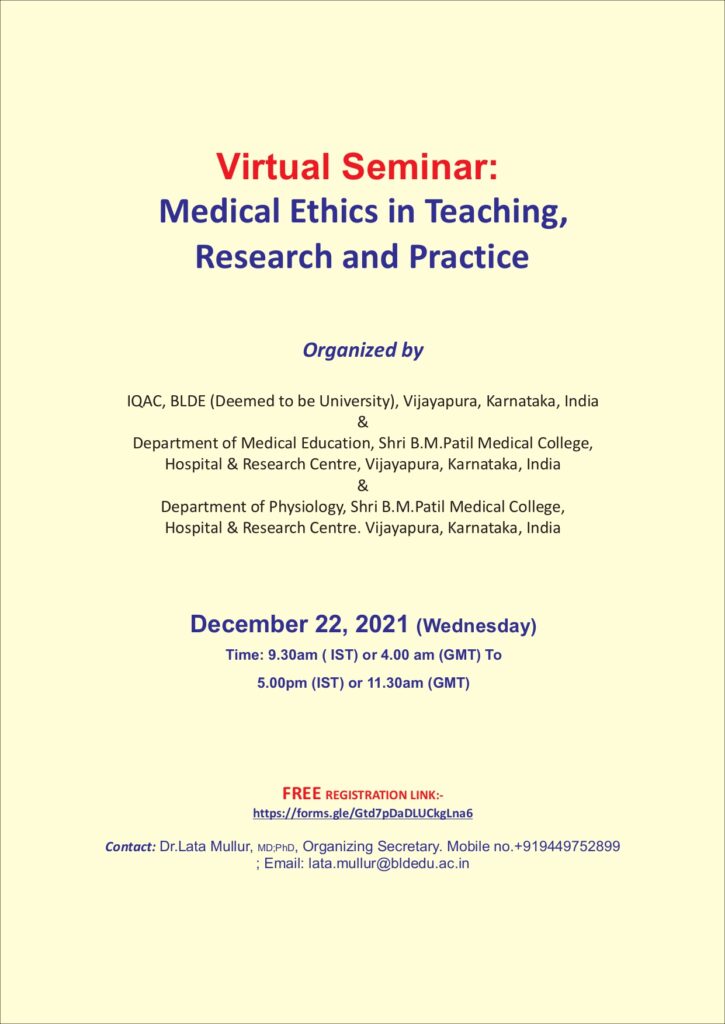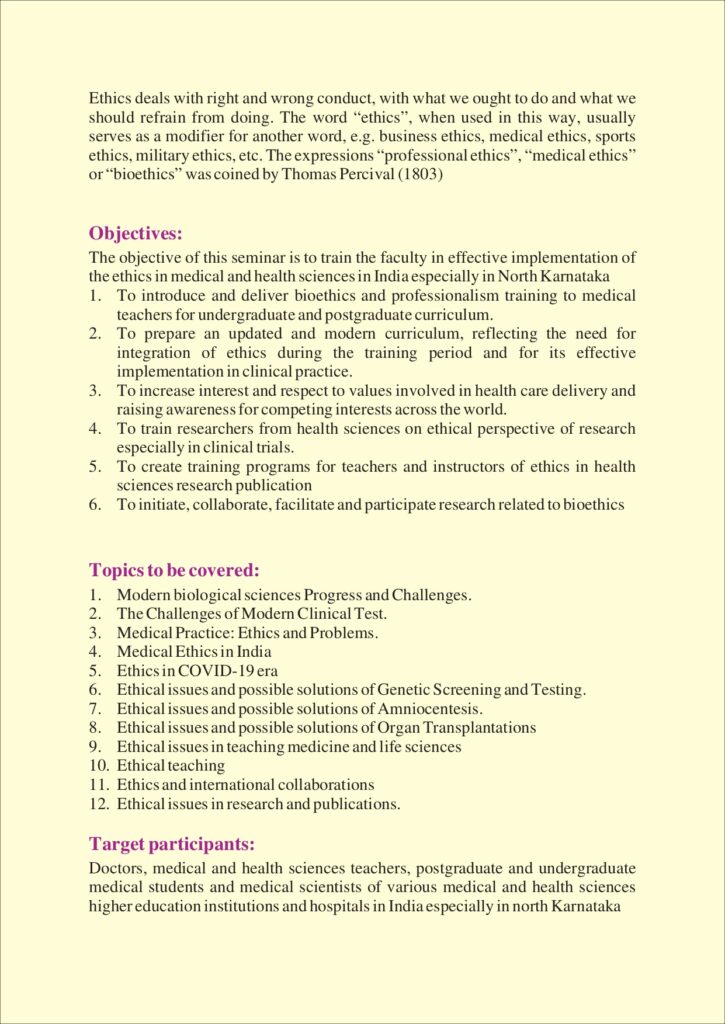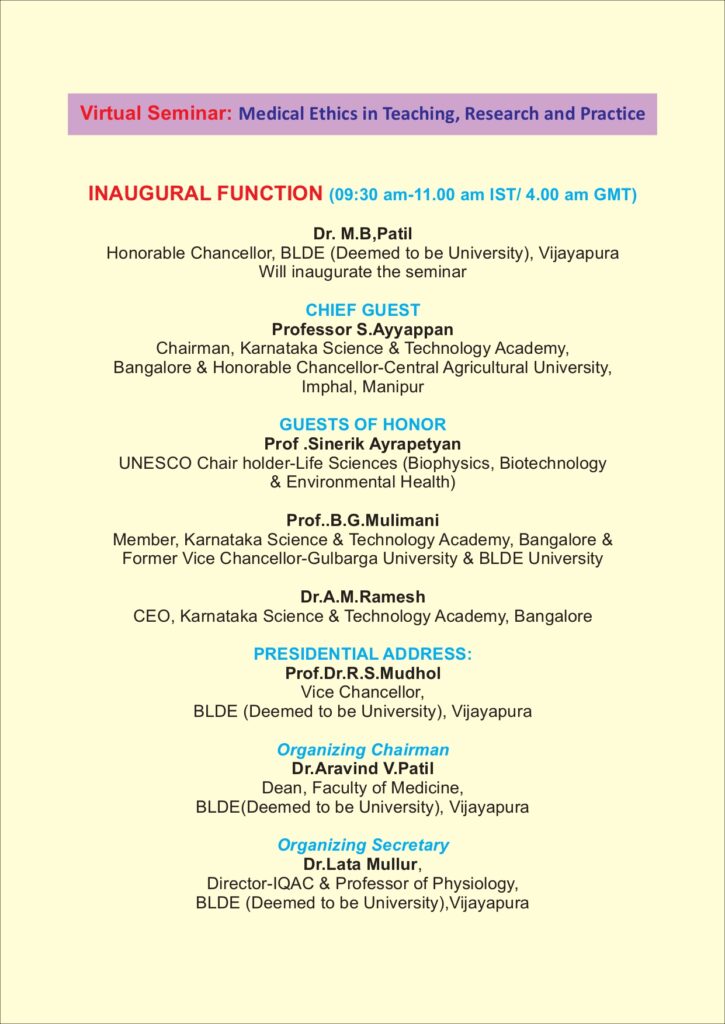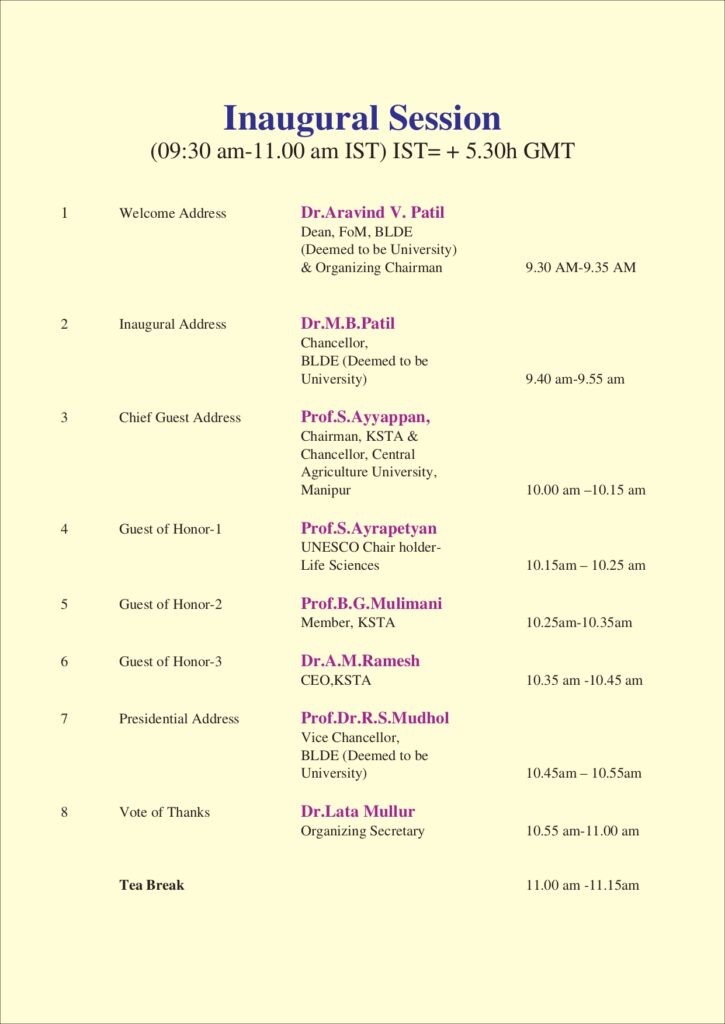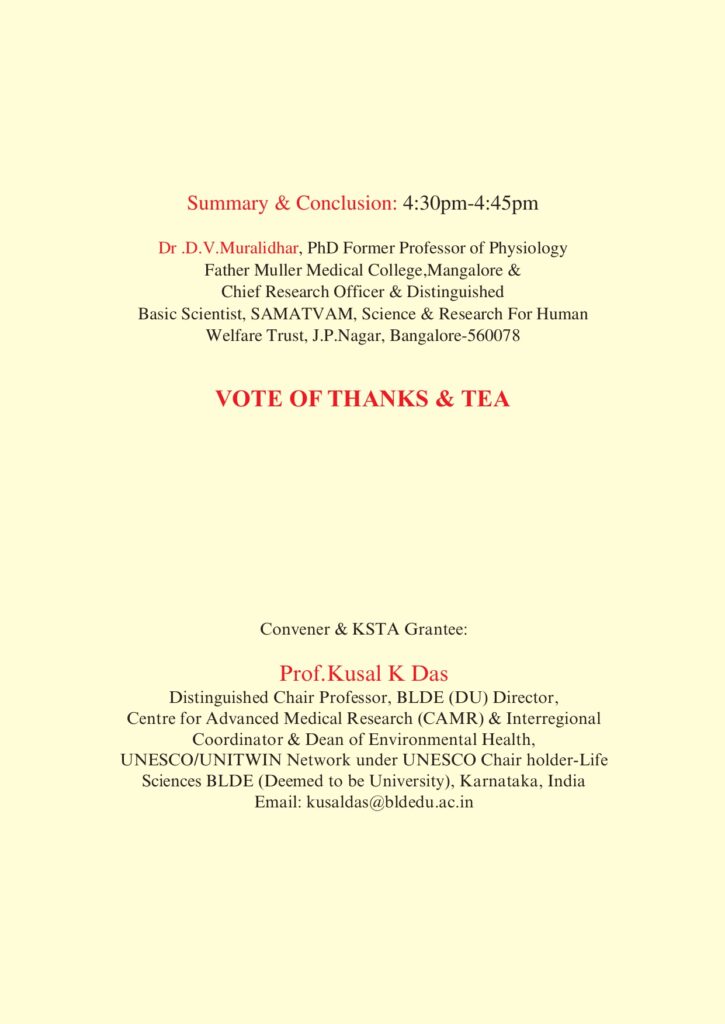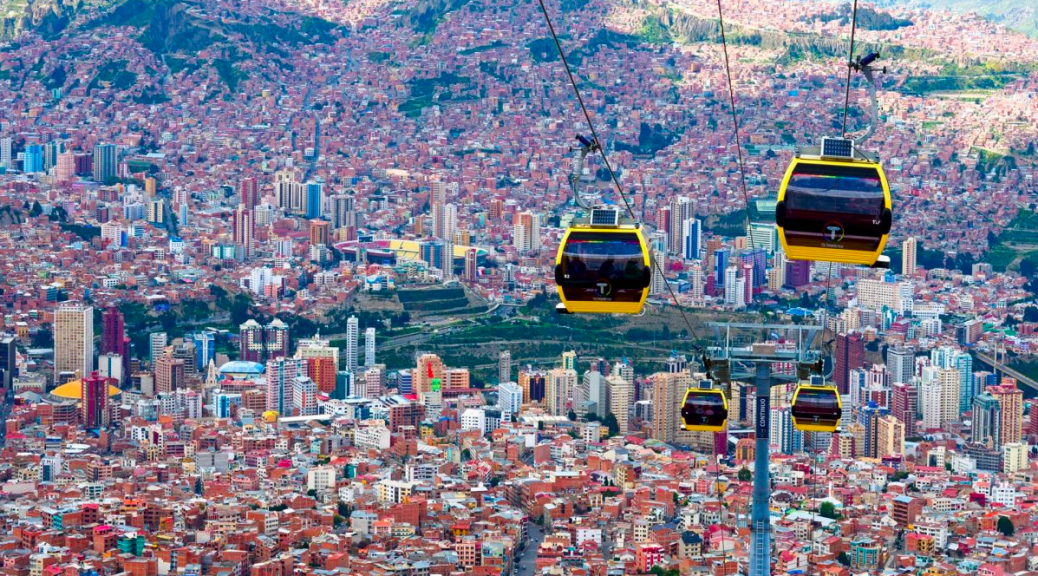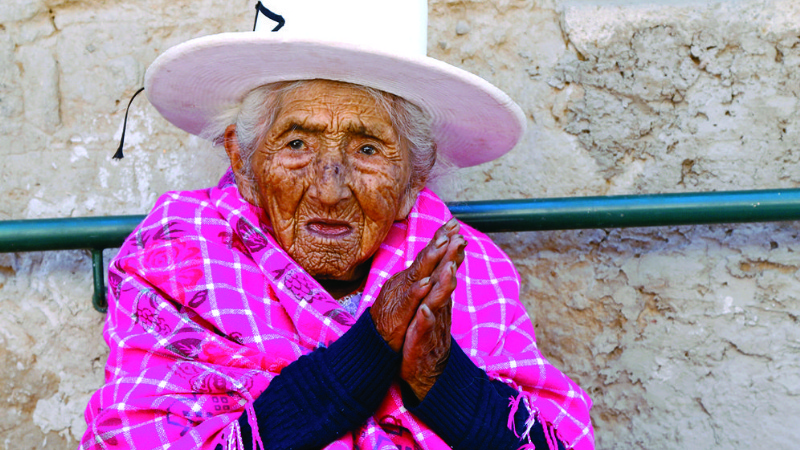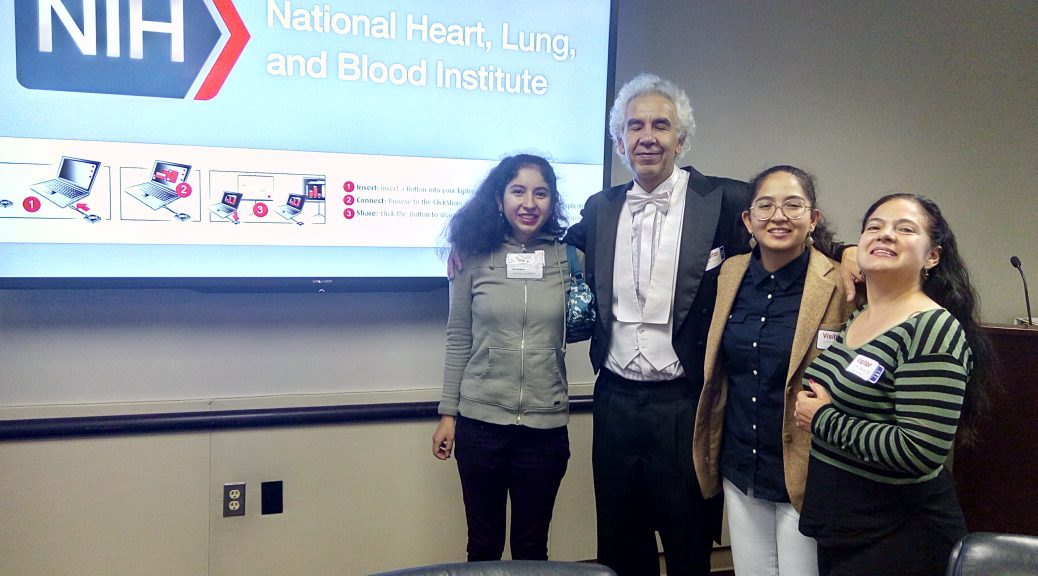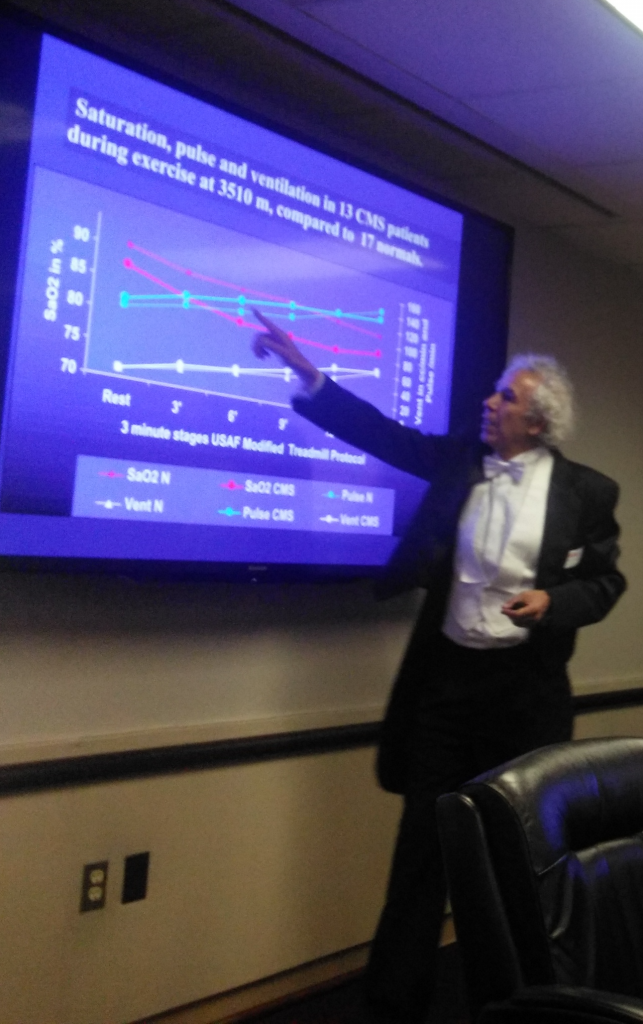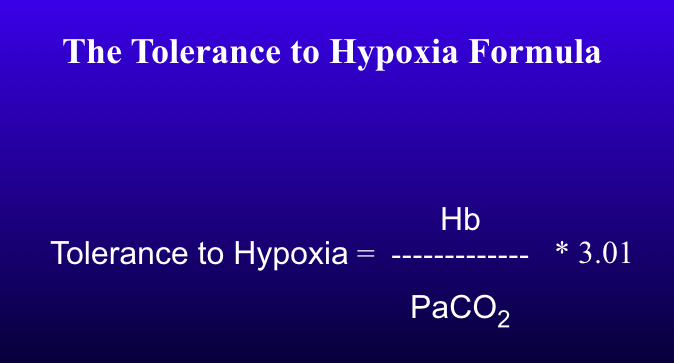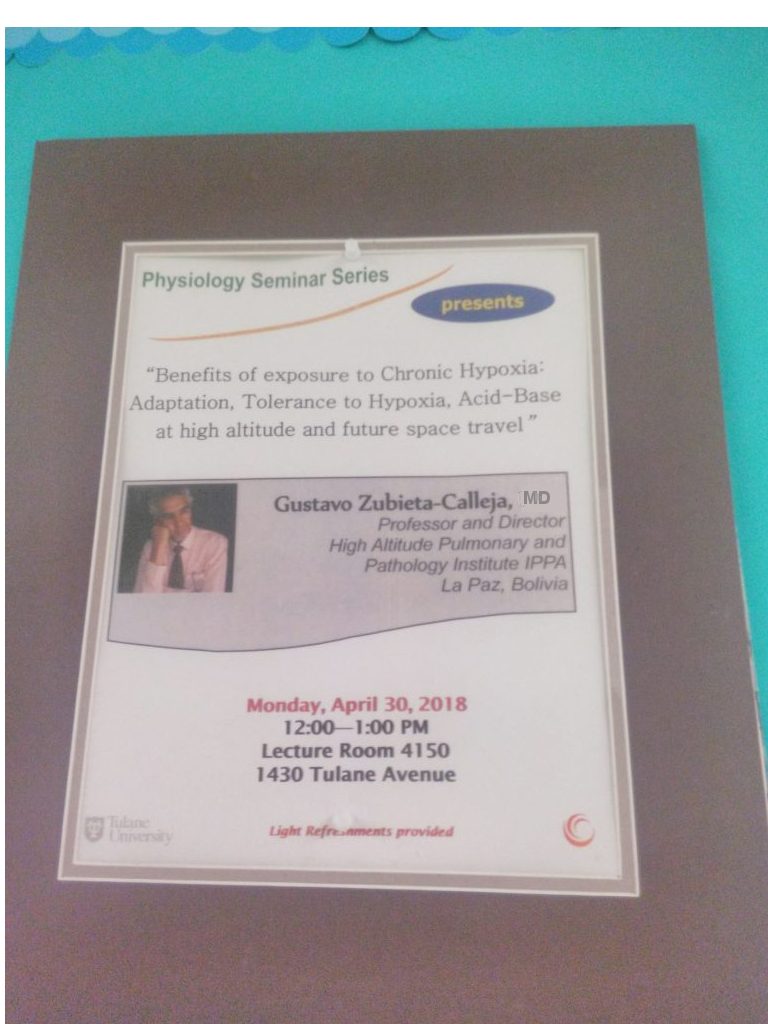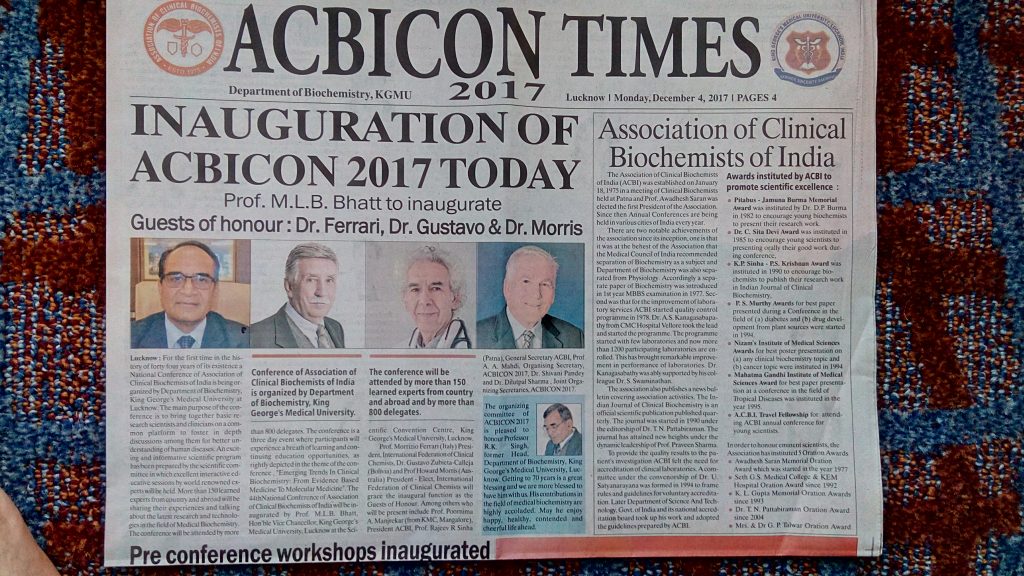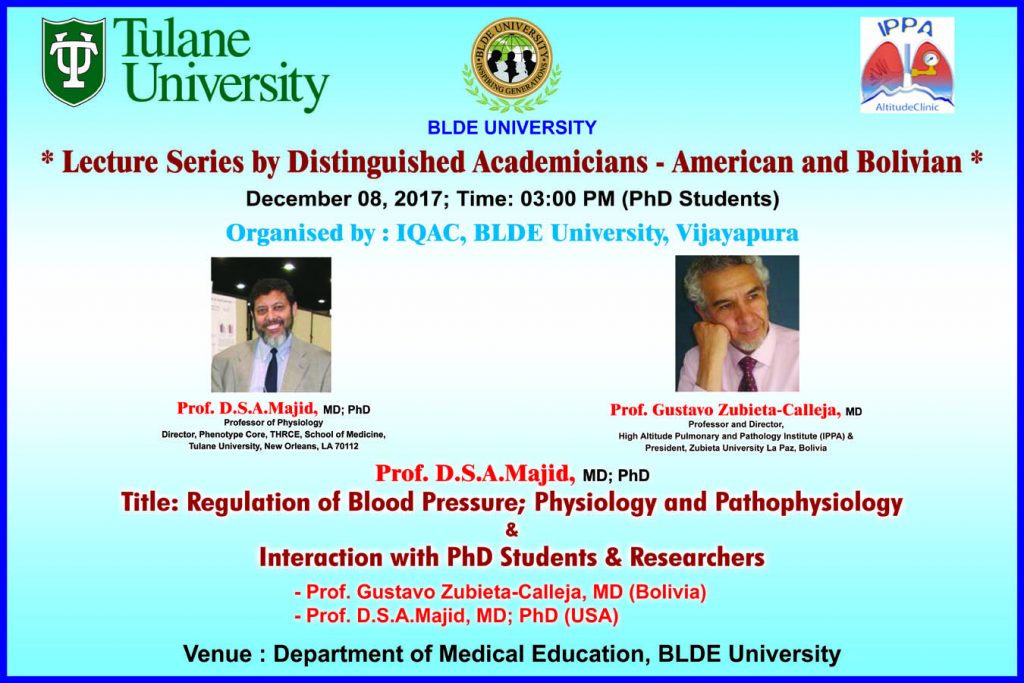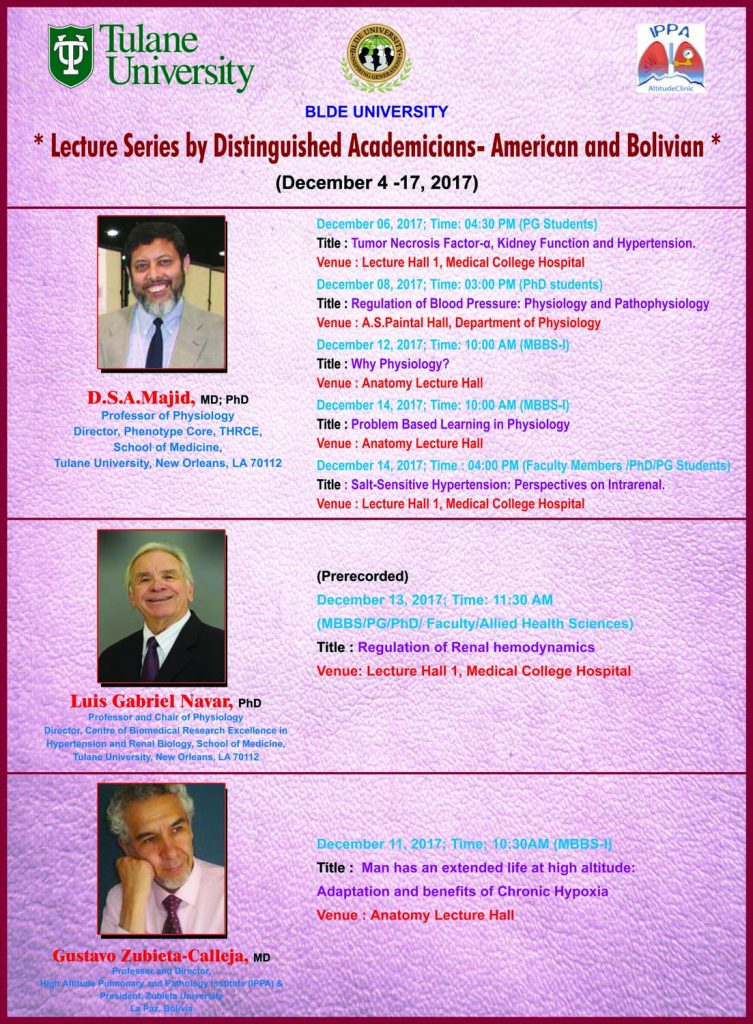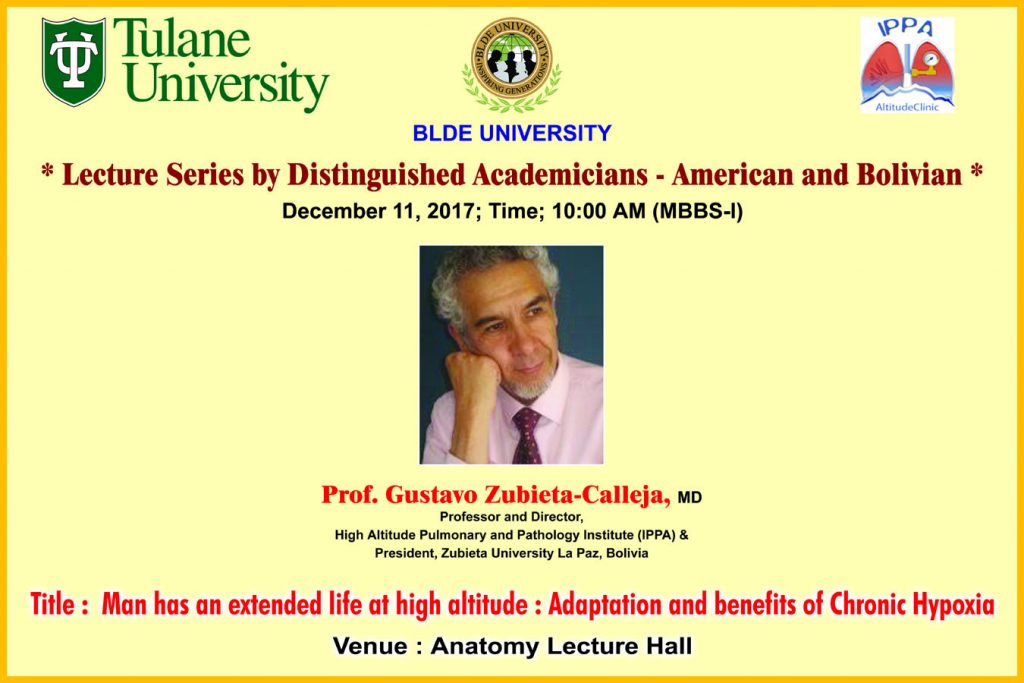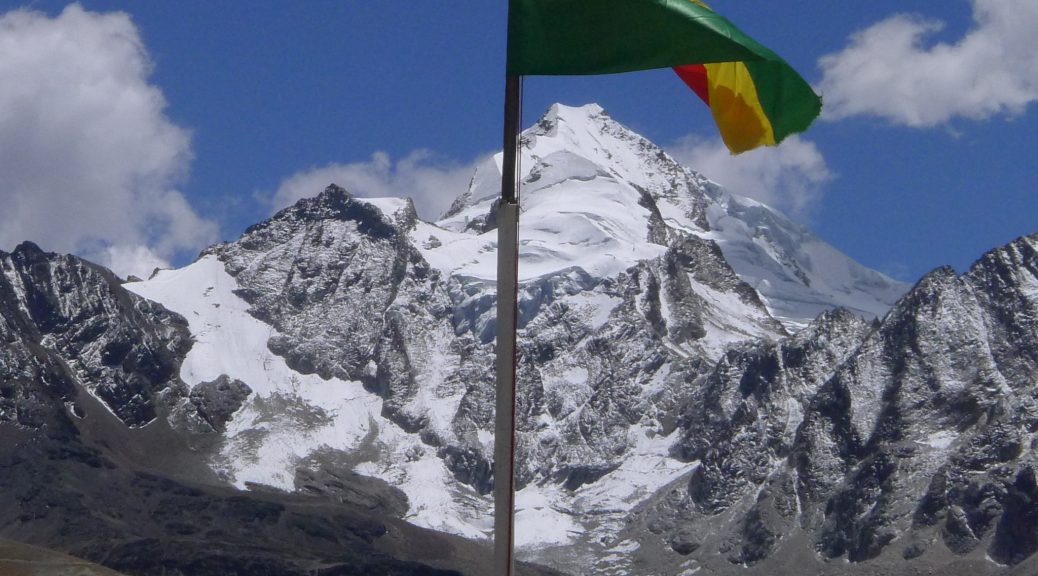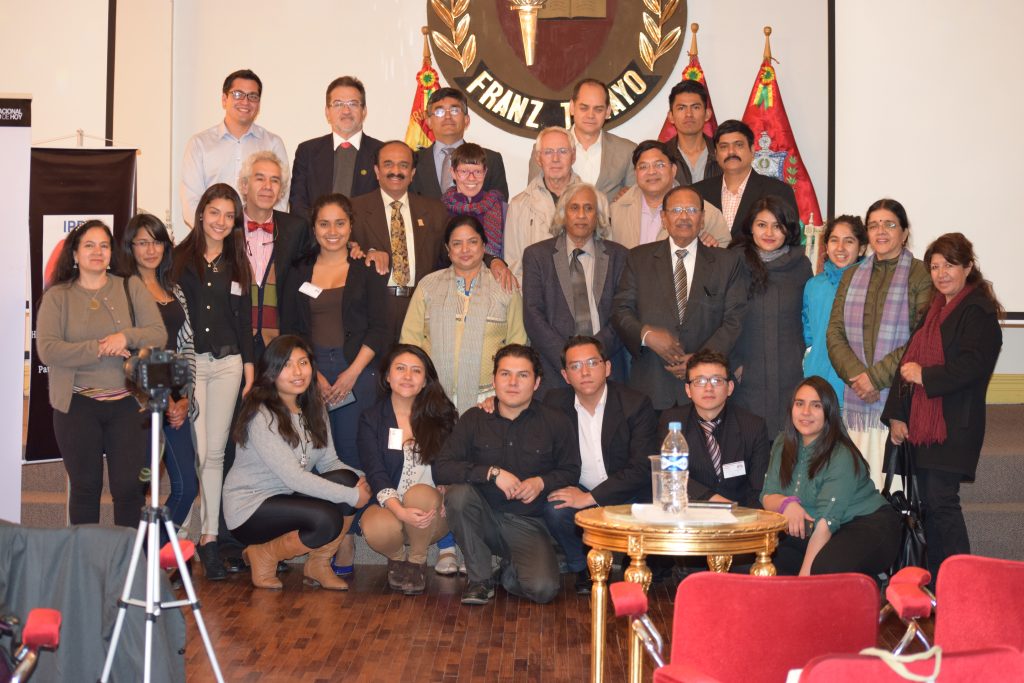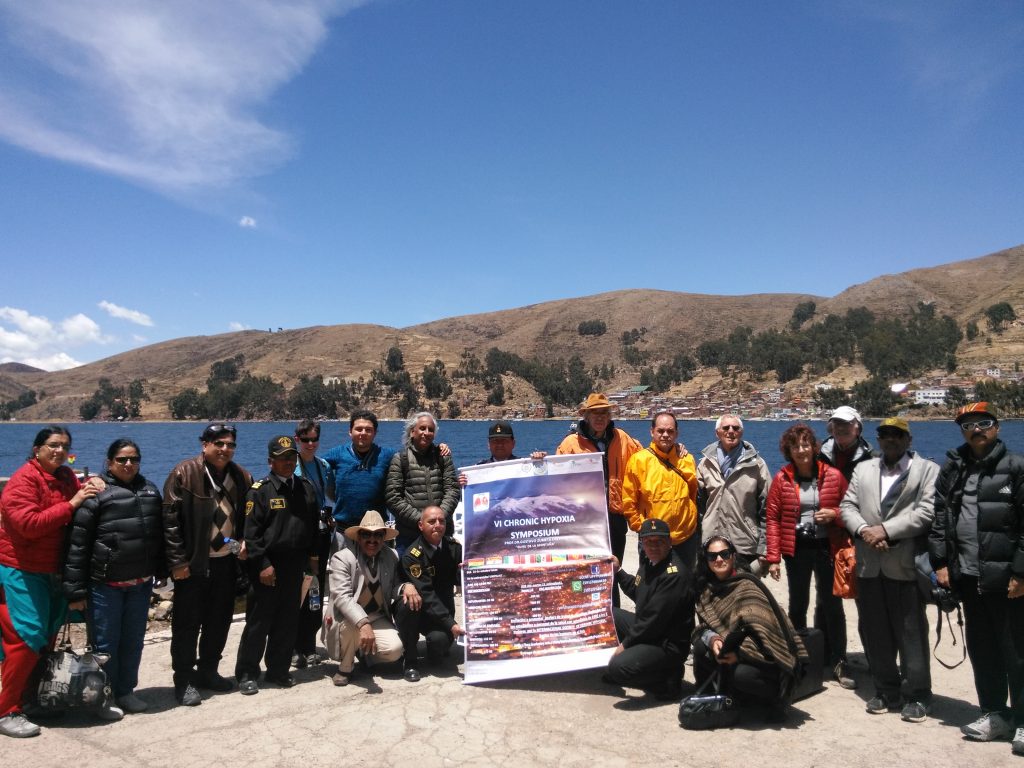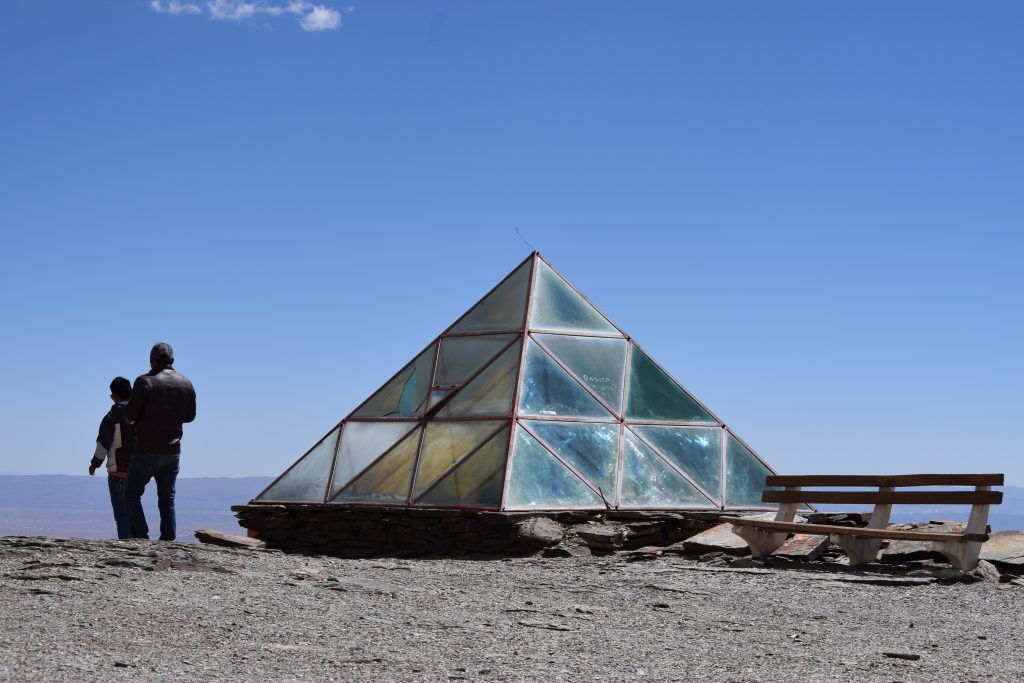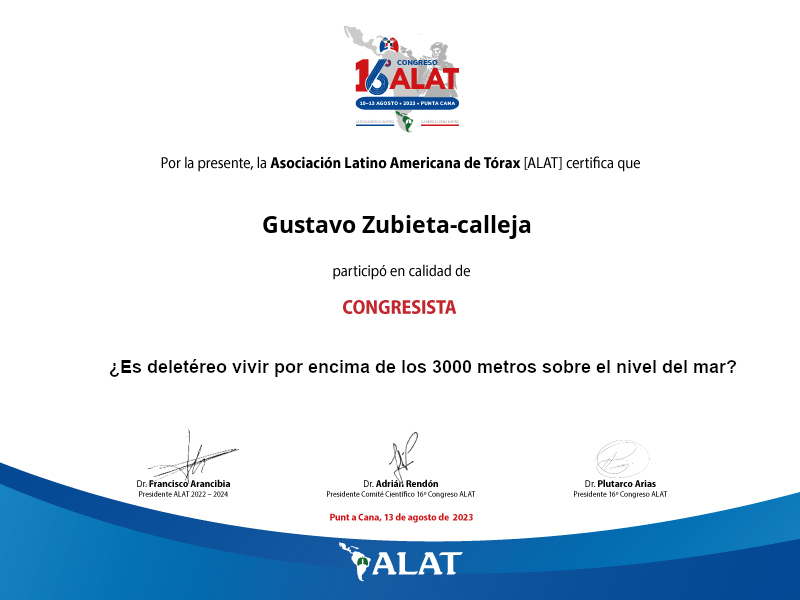
Category Archives: Meetings
India 6th Academic tour 19-29th June 2023 by Prof. Dr. Gustavo Zubieta-Calleja
Invited by the Dr. Shyama Narang Foundation President Vasanth Rao for the 2nd International Conference on ALS/MND organized jointly by NIMHANS & Dr. Shyama Narang Foundation 21st-22nd June 2023. Prof. Dr. Gustavo Zubieta-Calleja Head of the High Altitude Pulmonary and Pathology Institute (HAPPI-IPPA) presented his innovative talk “Can Exposure to Hypoxia and Chronic Hypoxia be beneficial in ALS/MND?”.
Following the invitation by Prof. Thuppil Venkatesh “The Lead Man of India”, he likewise presented conferences regarding acid-base at high altitude, tolerance to hypoxia, and adaptation to high altitude at different Universities and Hospitals in several cities in the Karnataka area.
Additionally, he participated in the inauguration of the Center for rainforest restoration headed by Dr. Malali Gowda. Finally, he visited outstanding research centers and many temples with magnificent structures. These were nine days of intense activity, travel by plane, train, and car, enjoying the excellent food in different restaurants, and above all re-encounter with very dear friends.
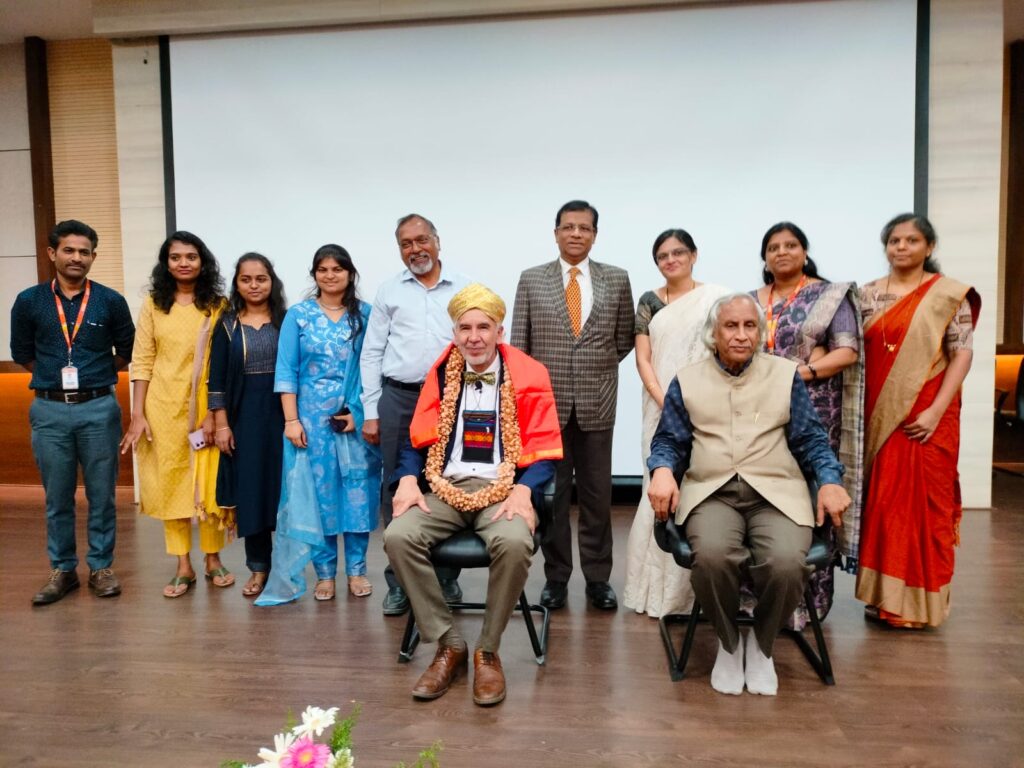
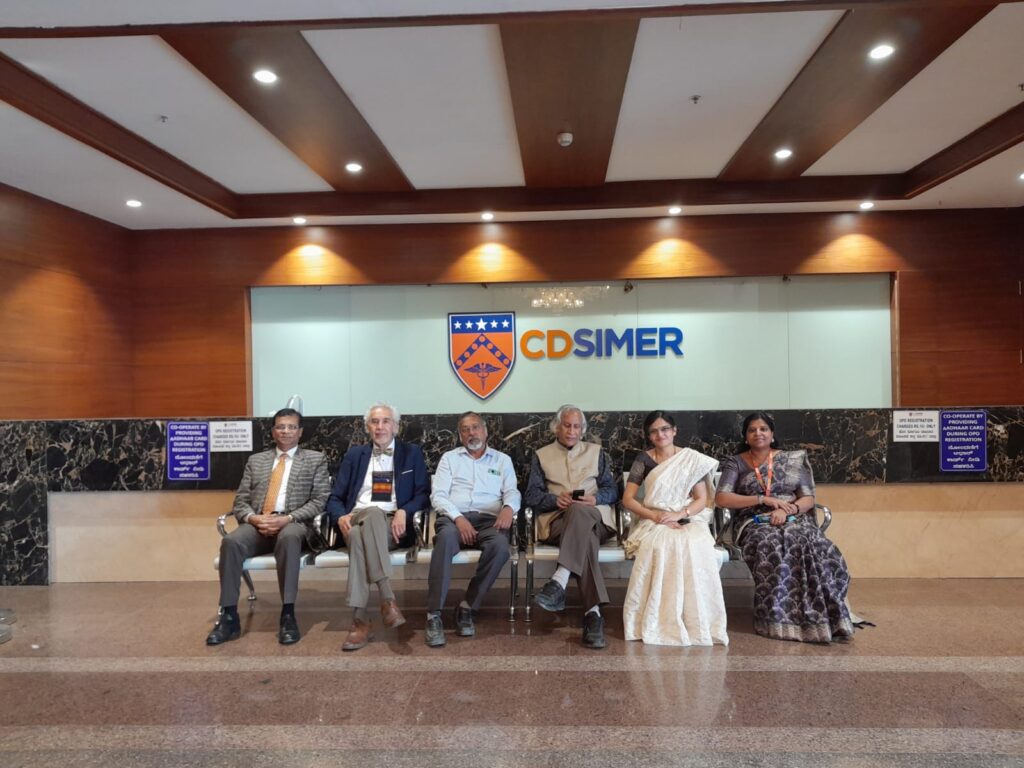

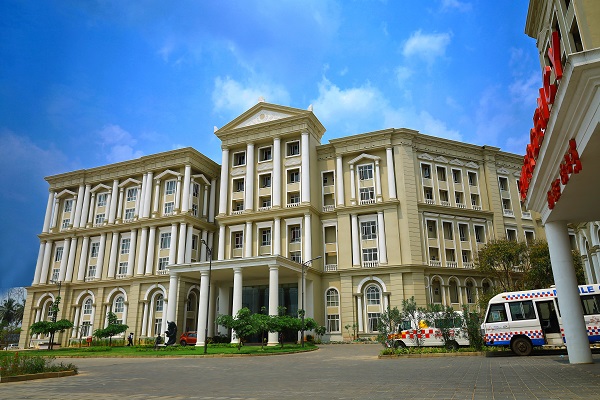

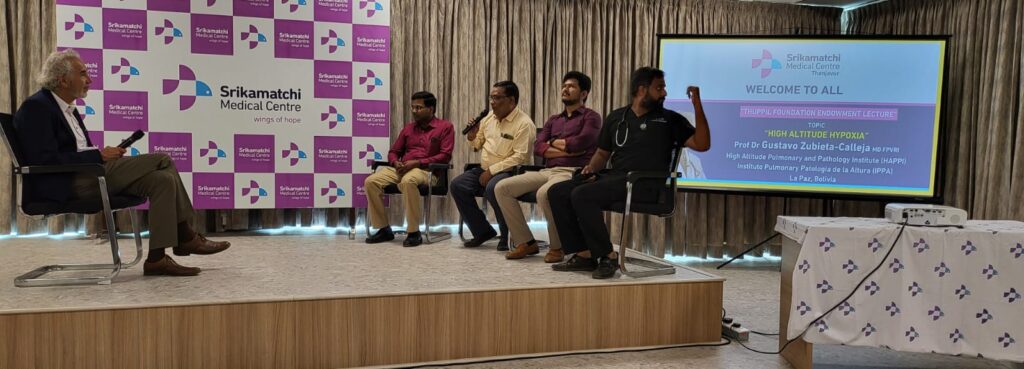


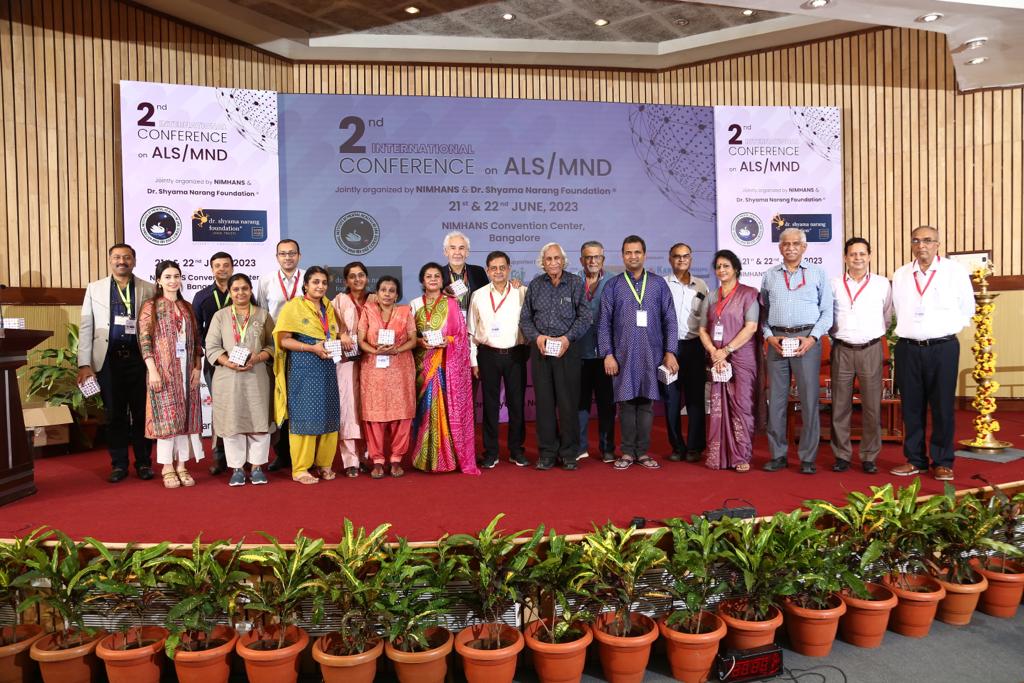

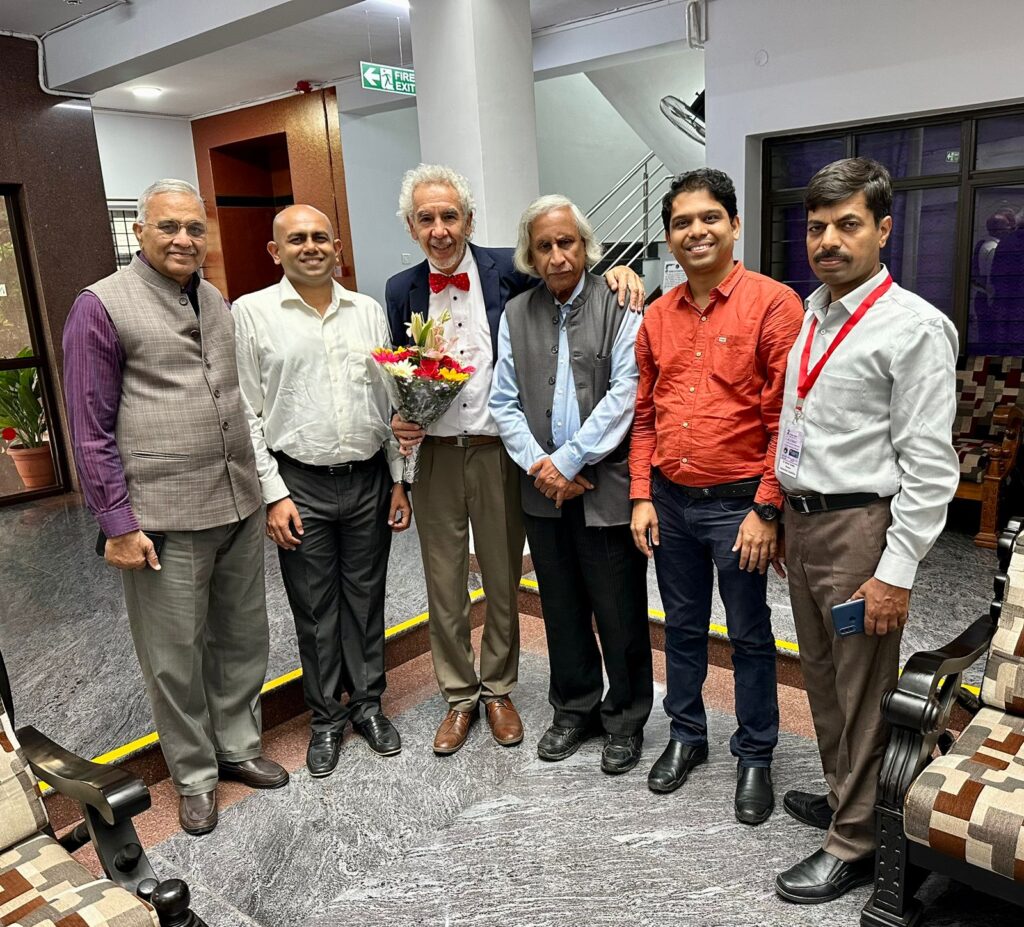
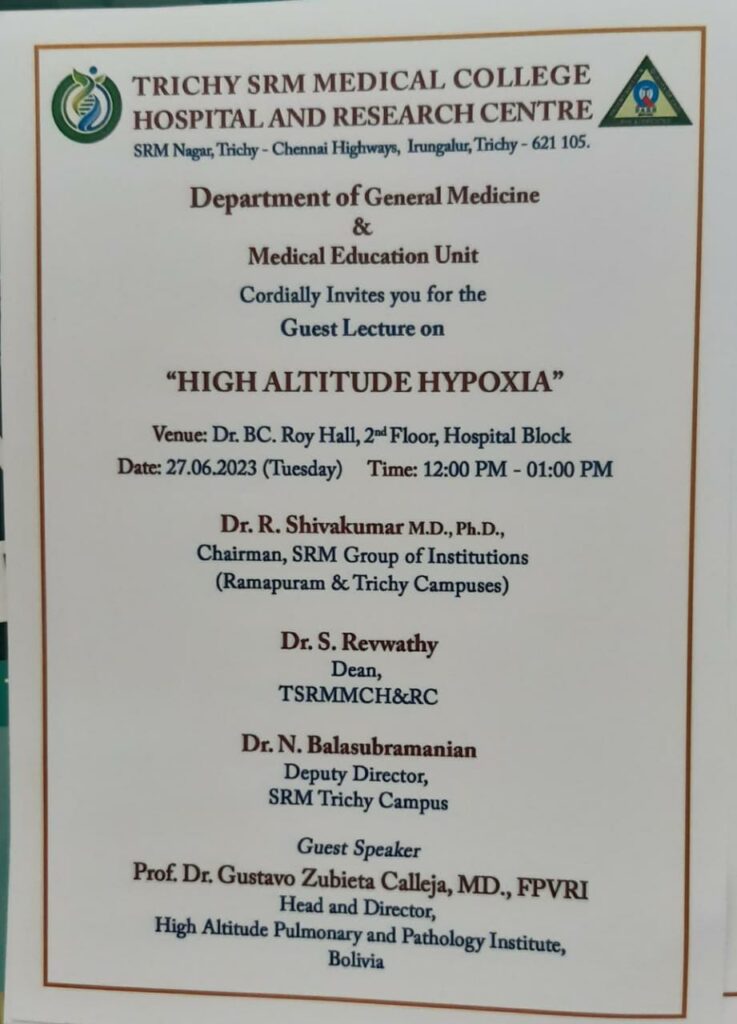
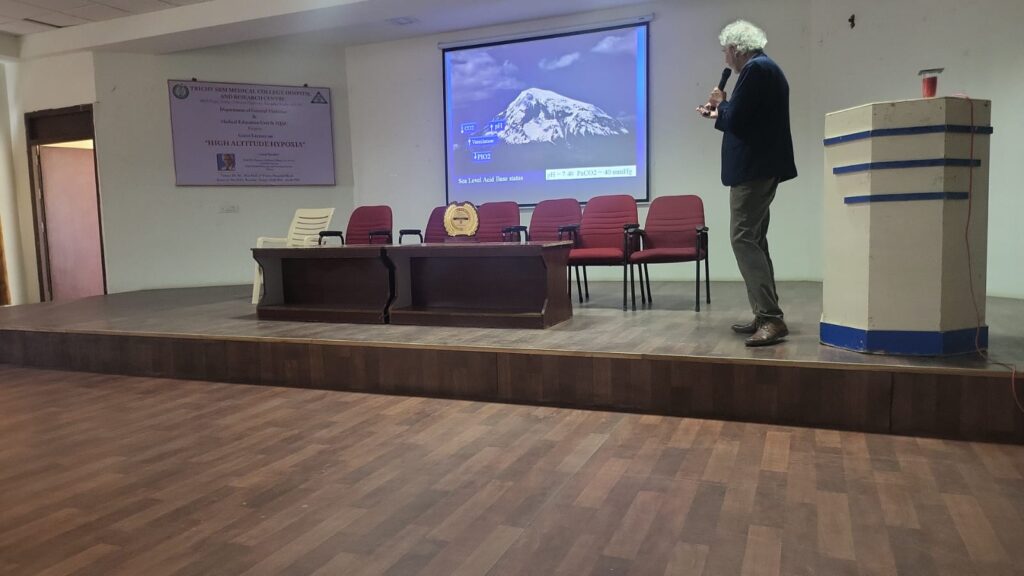

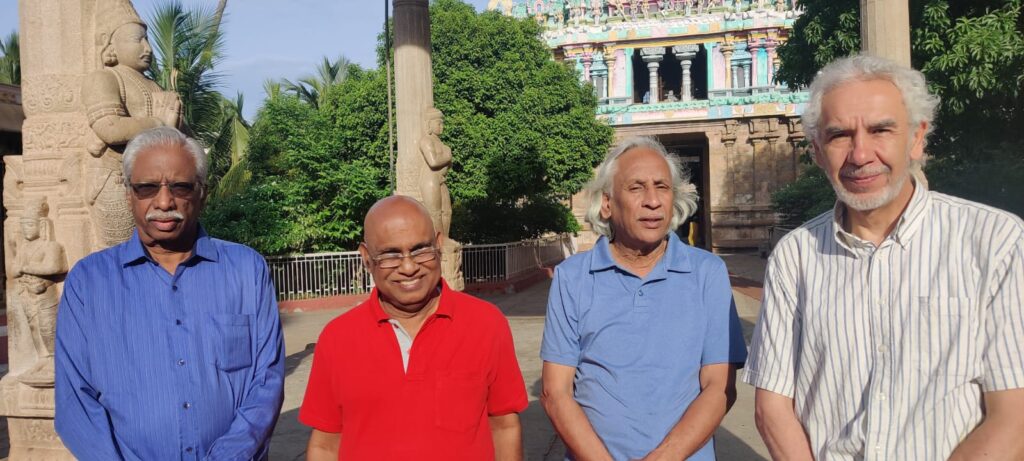
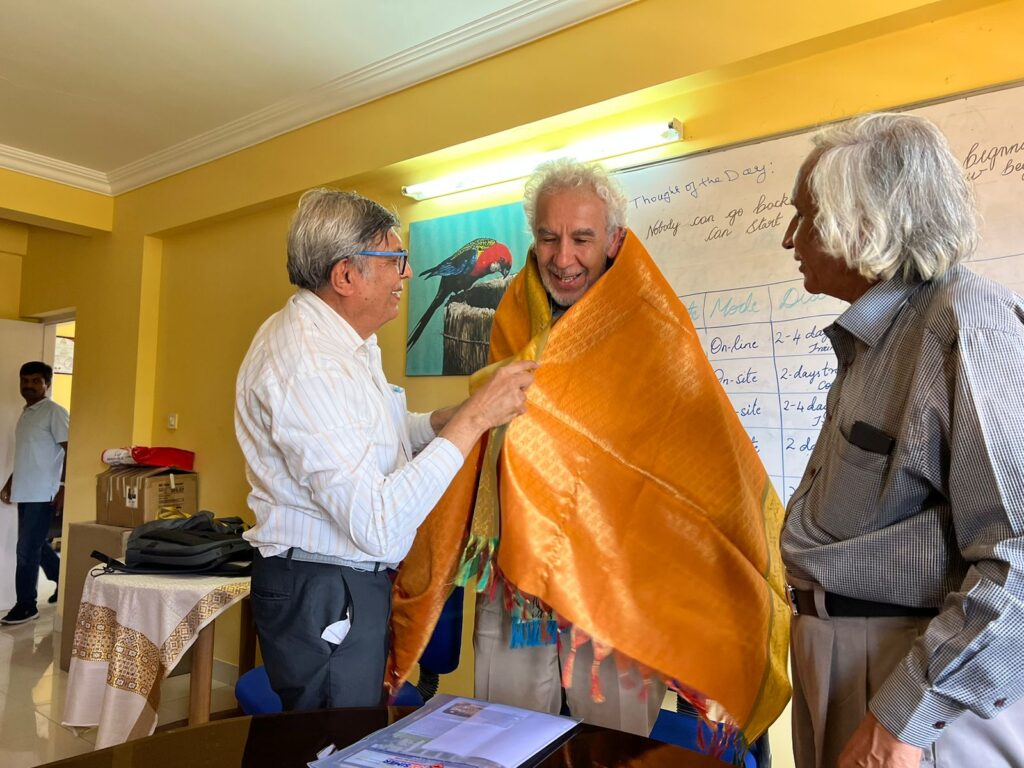
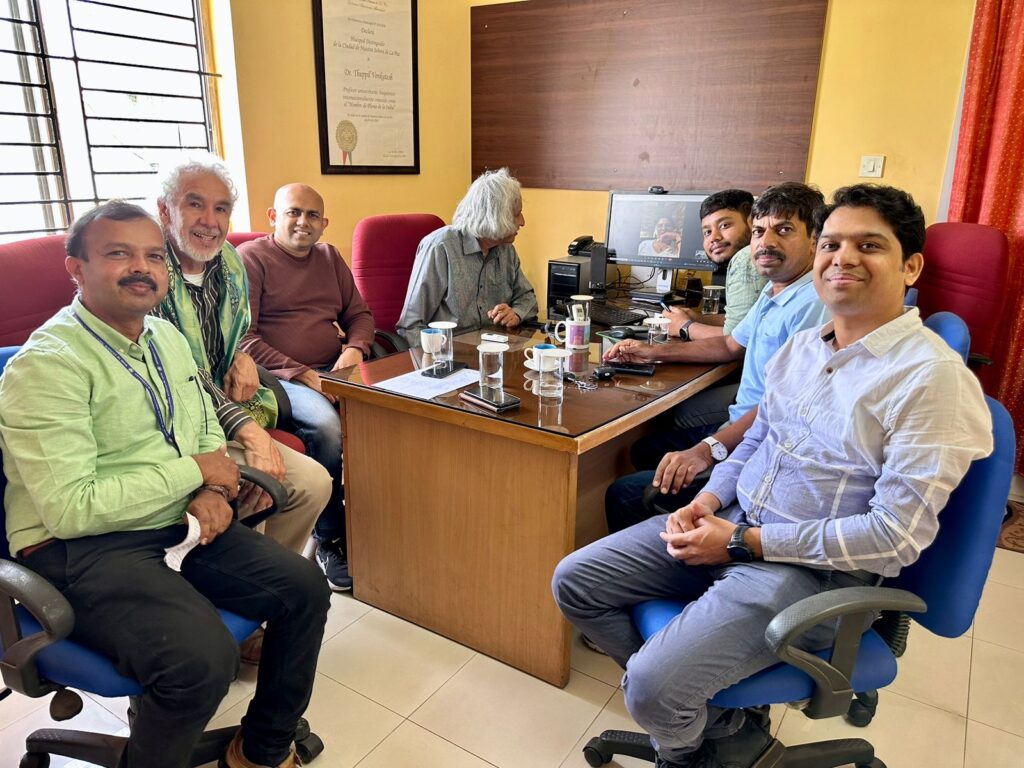
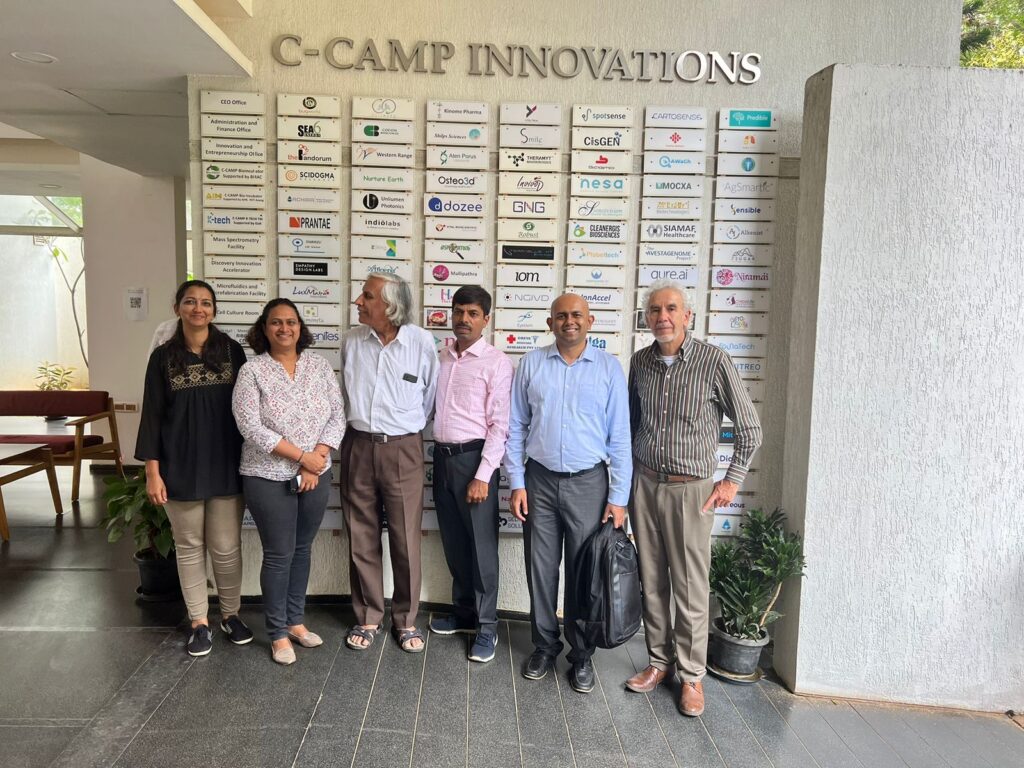
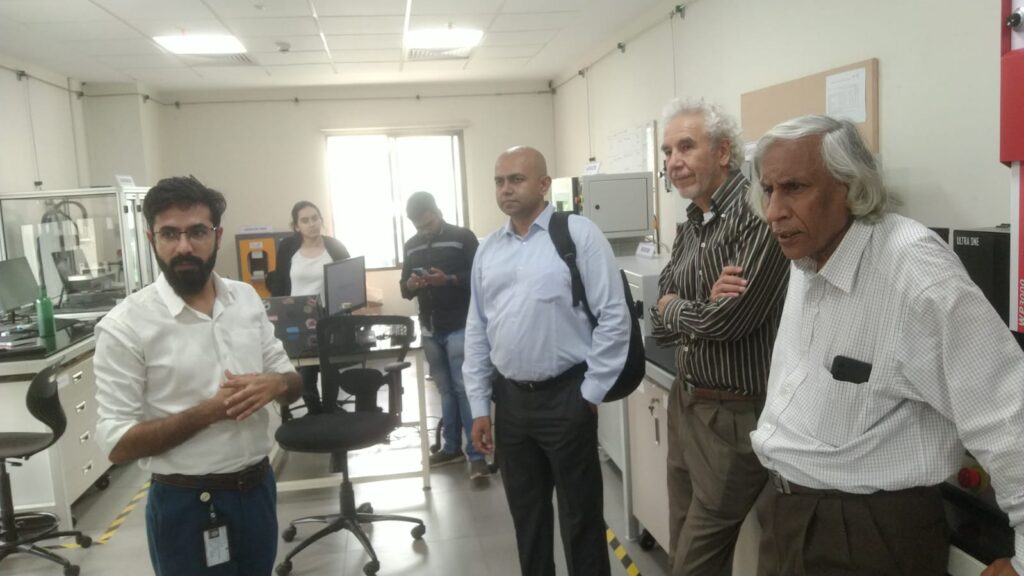
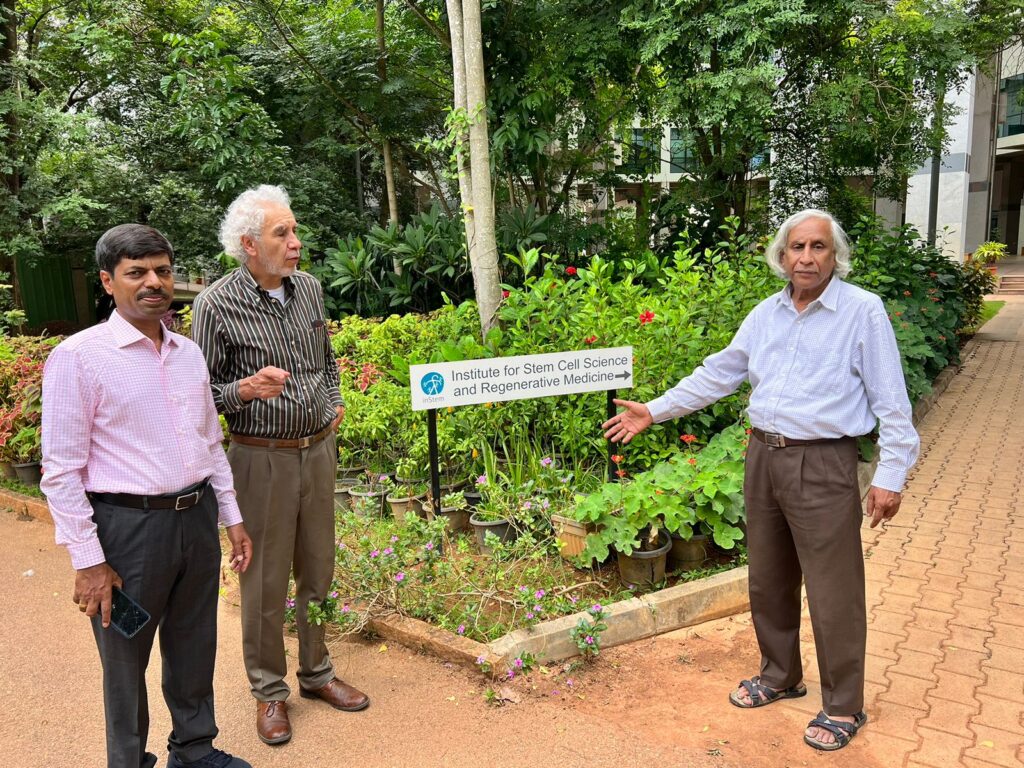
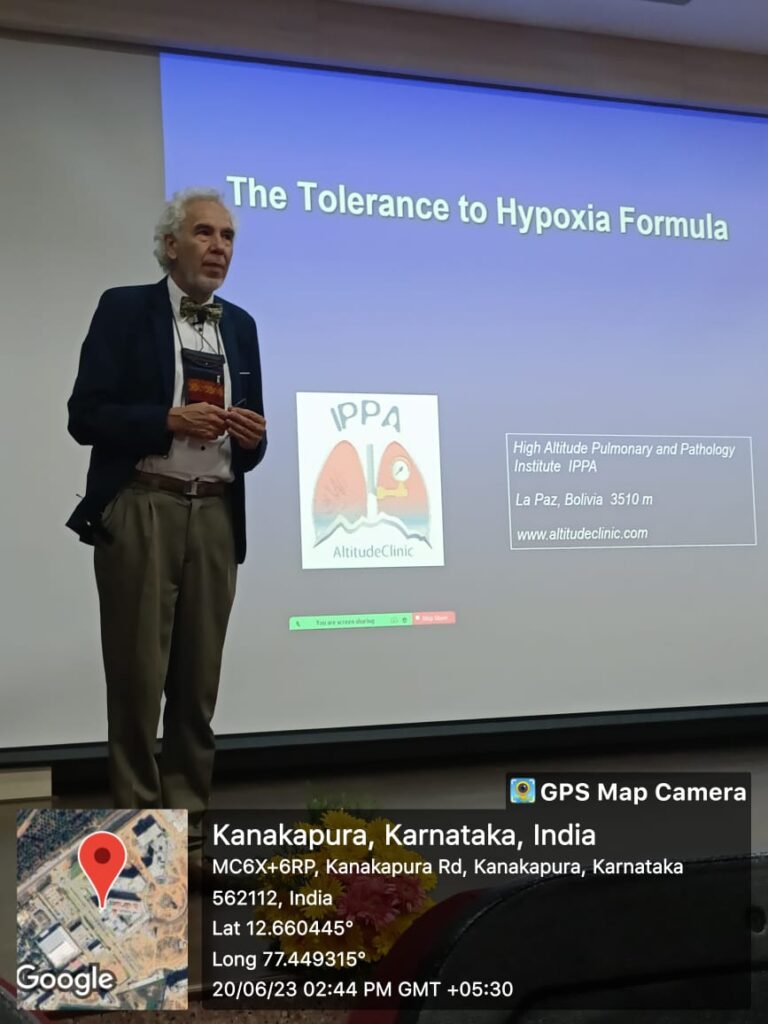
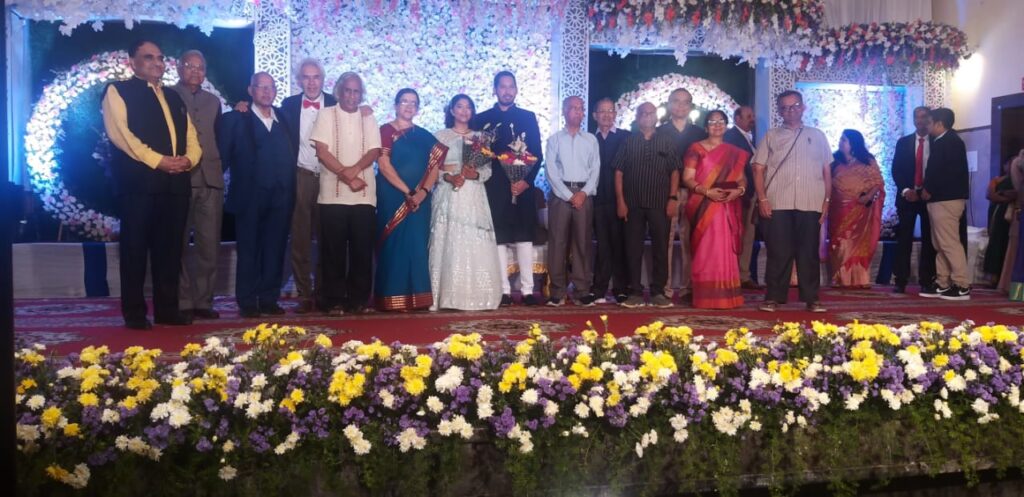
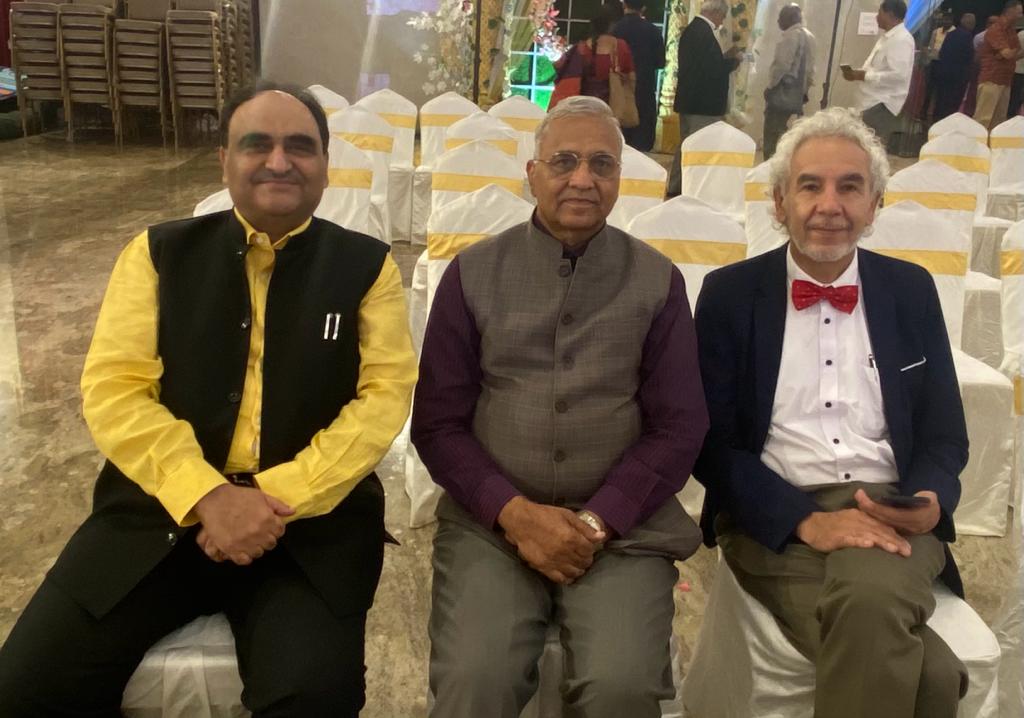
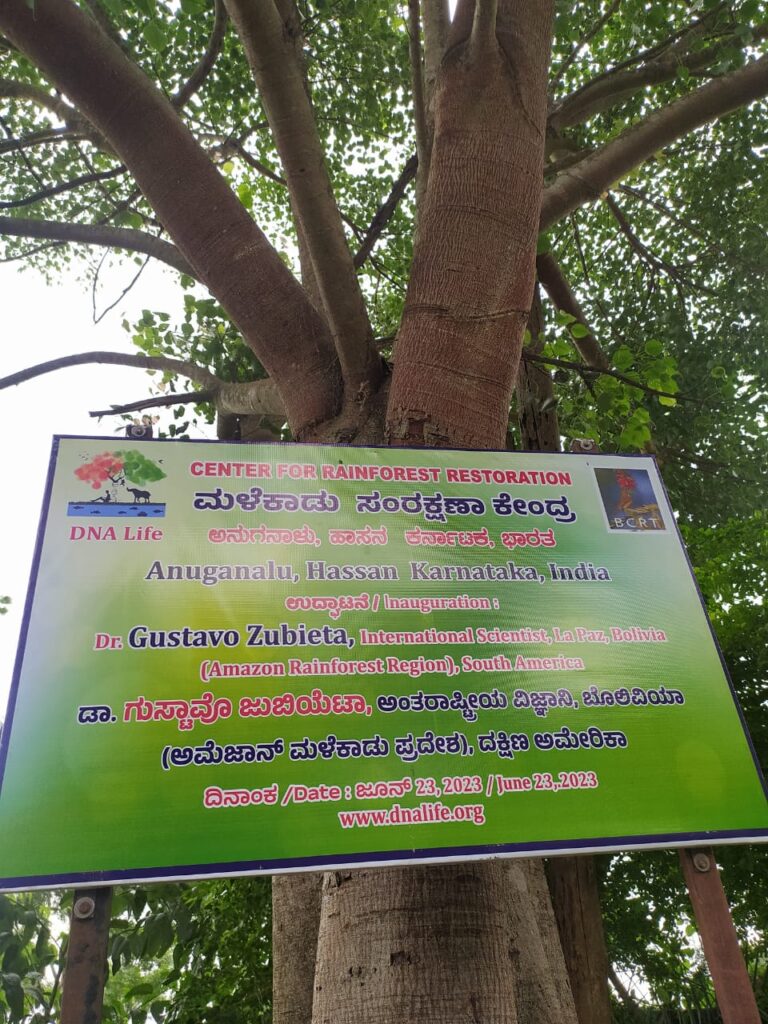


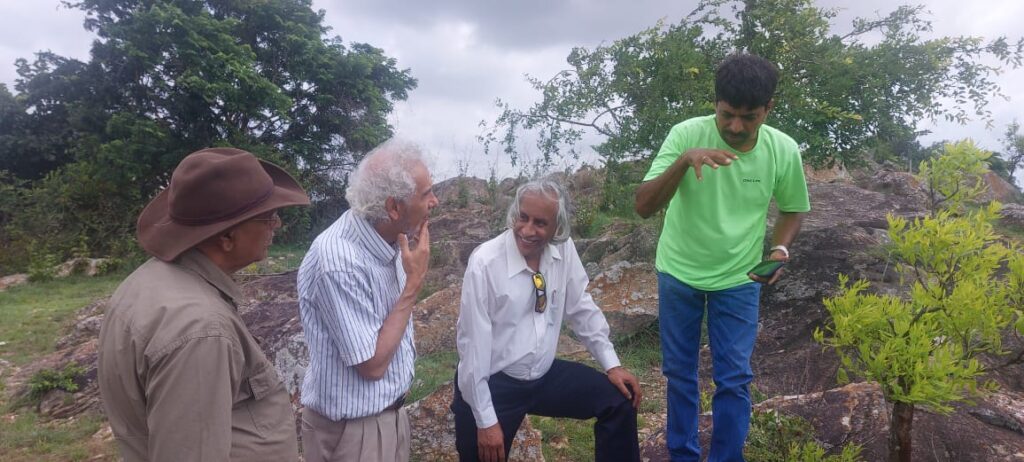
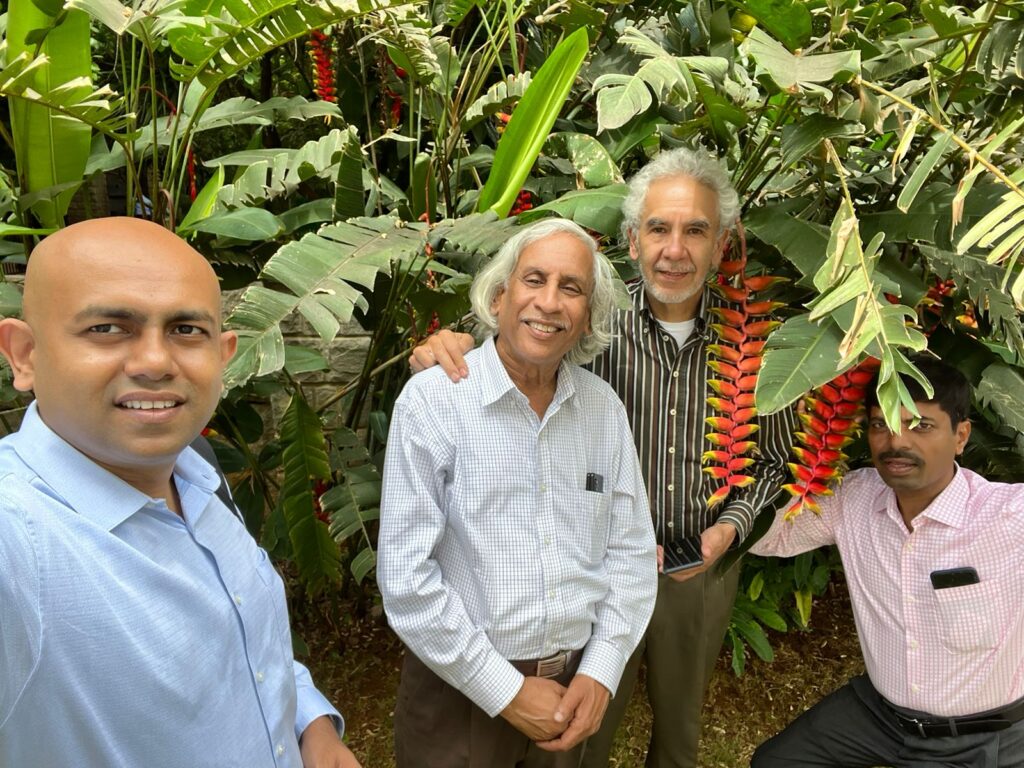
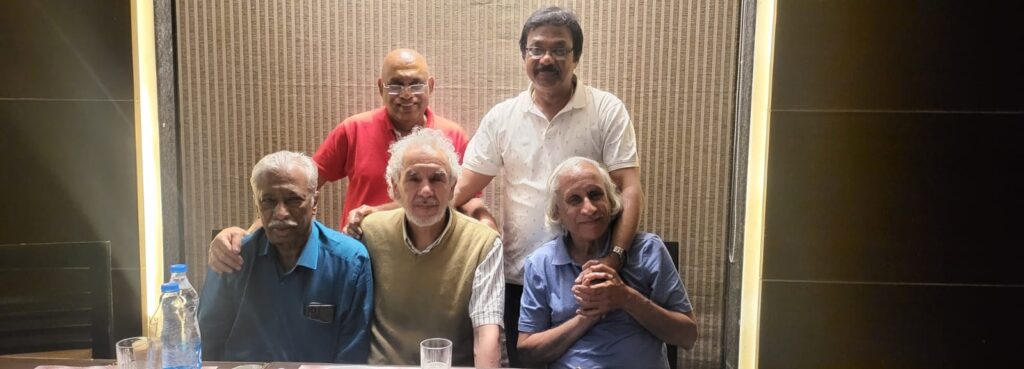

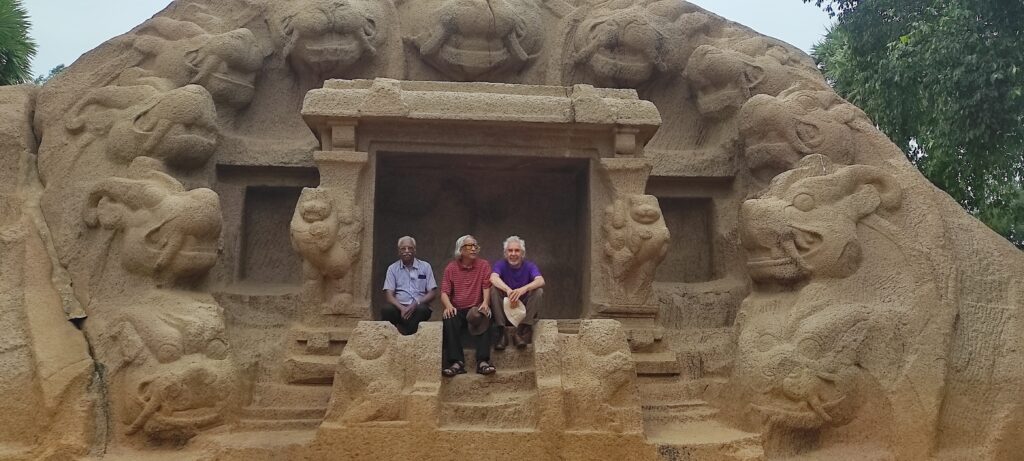

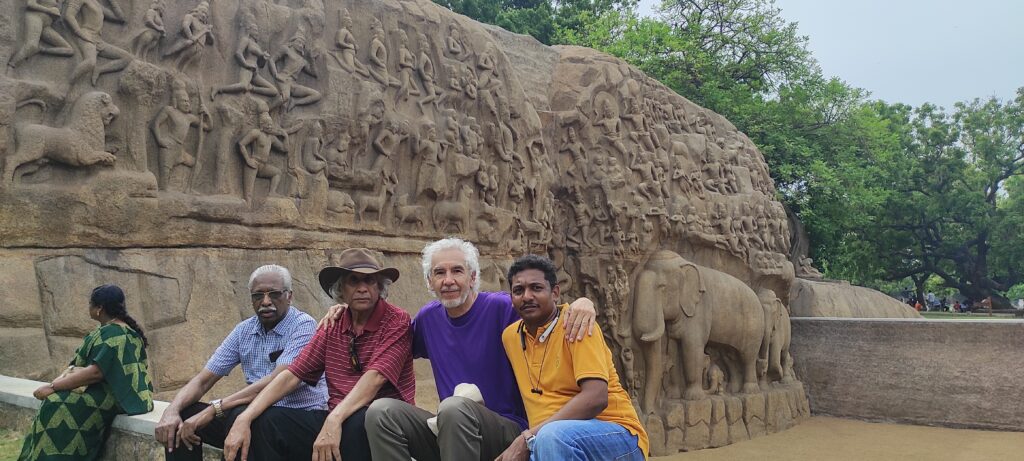


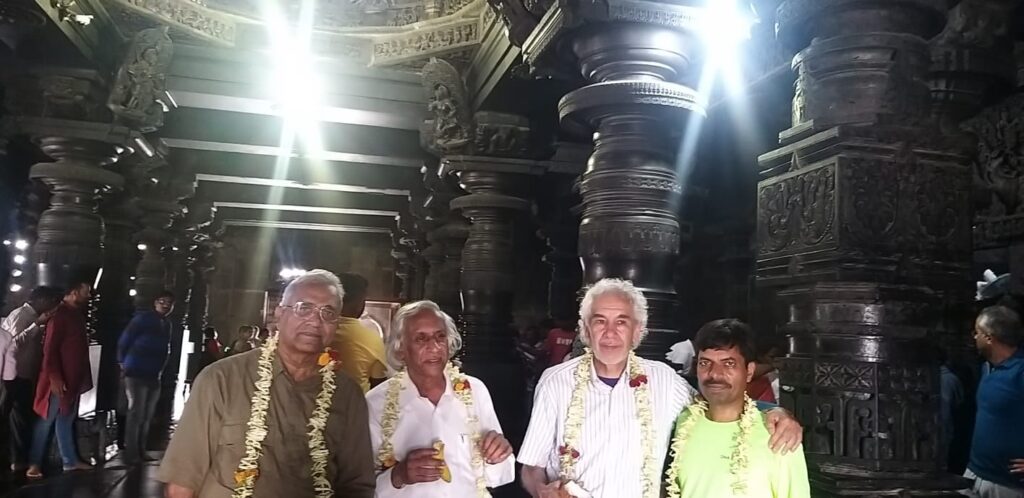
Medical Ethics Seminar
Adaptation, genetic adaptation, physiological adaptation, intelligence, and Biospaceforming
Prof. Dr. Gustavo Zubieta-Calleja
High Altitude Pulmonary and Pathology Institute (HAPPI-IPPA)

Abstract presented On Nov 4th, 2020 at the Darwin2020 conference in India.
Life seems to be a unique accident created by entropy within the physics of the Universe and its most precious gift with one critical attribute: resilience.
Life, the jewel creation of the Universe, is a mystery in which we have evolved thanks to Darwin by understanding evolution. Nevertheless, many questions remain.
Adaptation is the logical evolution step by step through millions of years based on random DNA mutation. This leaves an immense number of useless mutations most likely to end in extinction rather than survival.
I propose a new concept: Viruses (including the Coronavirus) can be a unique survival mechanism inducing favorable mutation. In COVID-19, for example, I have defined the viral attack and lung cell reproduction of the virus as Pneumolysis (Pneumo = lung, lysis = destruction). Viral RNA is introduced into cells not only to achieve self-replication but also to induce fundamental mutations in the surviving organism’s DNA. Those unable to survive will undergo “natural cleansing”, another fundamental aspect of evolution.
We agree with Darwin’s affirmations except in one aspect. Intelligence is essential for physiological adaptation and hence evolving with time to genetic adaptation. We think that viruses are not only life forms but are likewise “intelligent”.
Humans plan to set up a base on Mars based on intelligence. Without intelligence, there are practically zero possibilities that Earth’s Life is transferred to Mars. Moreover, the future “humans” genetics in space will have to change over many generations through “Biospaceforming” an end-result of intelligence and our future step.
Italy Conferences 2019
From Nov 9th to Nov 16th 2019 we visited Italy. The trip started in Rome with the usual jaw dropping and splendid structures.
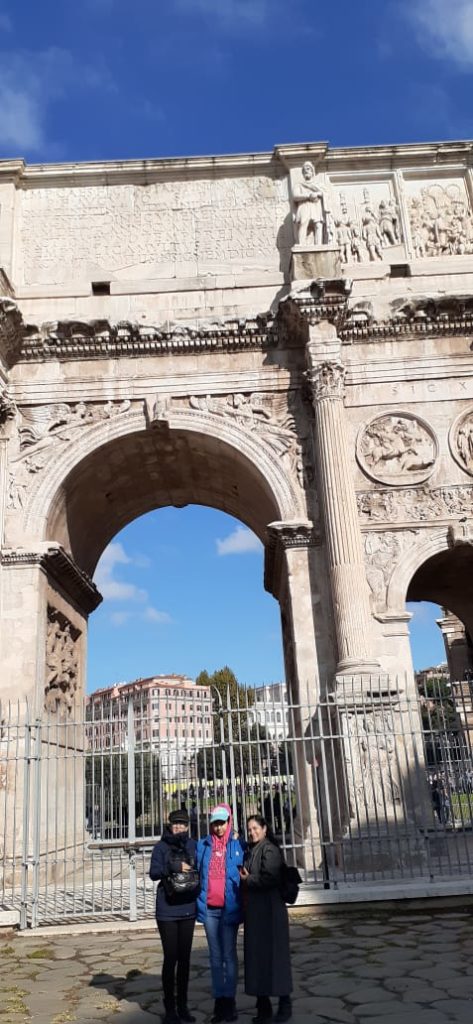
We then traveled to Firenze and the visit to “David” was indeed interesting. Particularly because, we realized that the bust obtained at the time of Michelagelo’s death was not the source of attraction but rather his magnificent David Sculpture. Fabulous indeed because of the weight of statue, the fact that it was sculptured in a Marmol piece that was not perfect, and that sustaining more than 6 tons of weight required him to leave a support next to his right leg. Truly awesome.
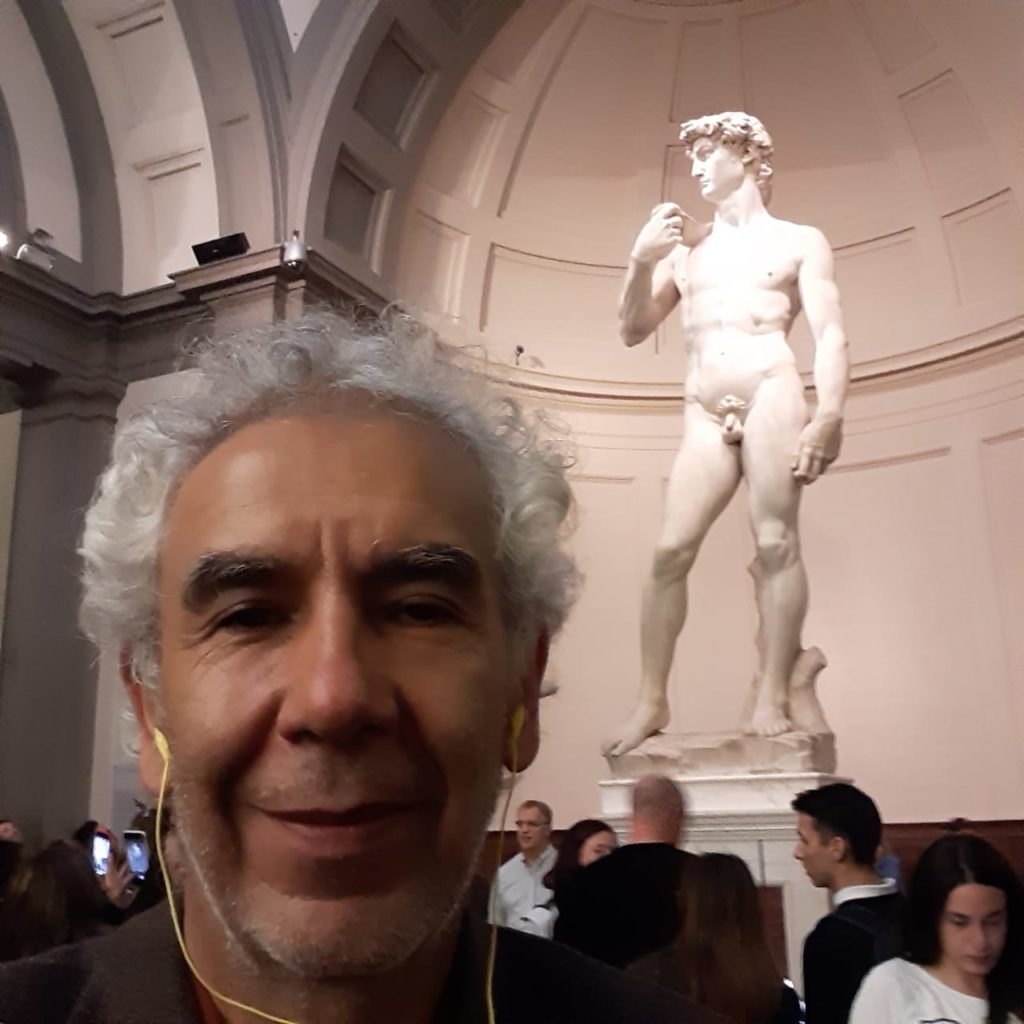
But the look on David’s face is of particular interest as it shows a calculating stare, right before the battle with Goliath. I stand, in life, staring as David in the struggle to put things straight in relation to Chronic Mountain Sickness in the scientific world.
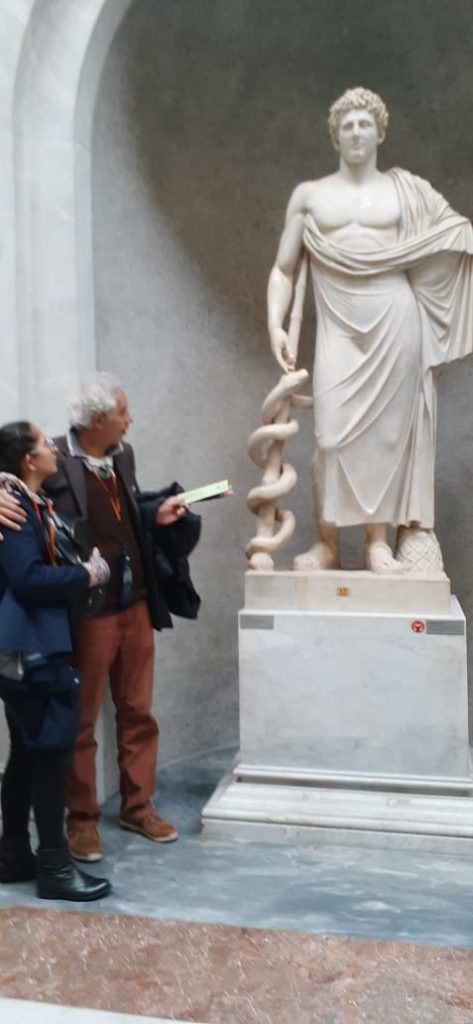
We then went on to Bolzano to visit the terraXcube laboratory under the direction of the notable Hermann Brugger as Head and Giacomo Strapazzon as Vice-Head.

There at Eurac, we gave a talk on Space Travel in a chronic hypoxia environment and in relation to our concepts of Chronic Mountain Sickness.
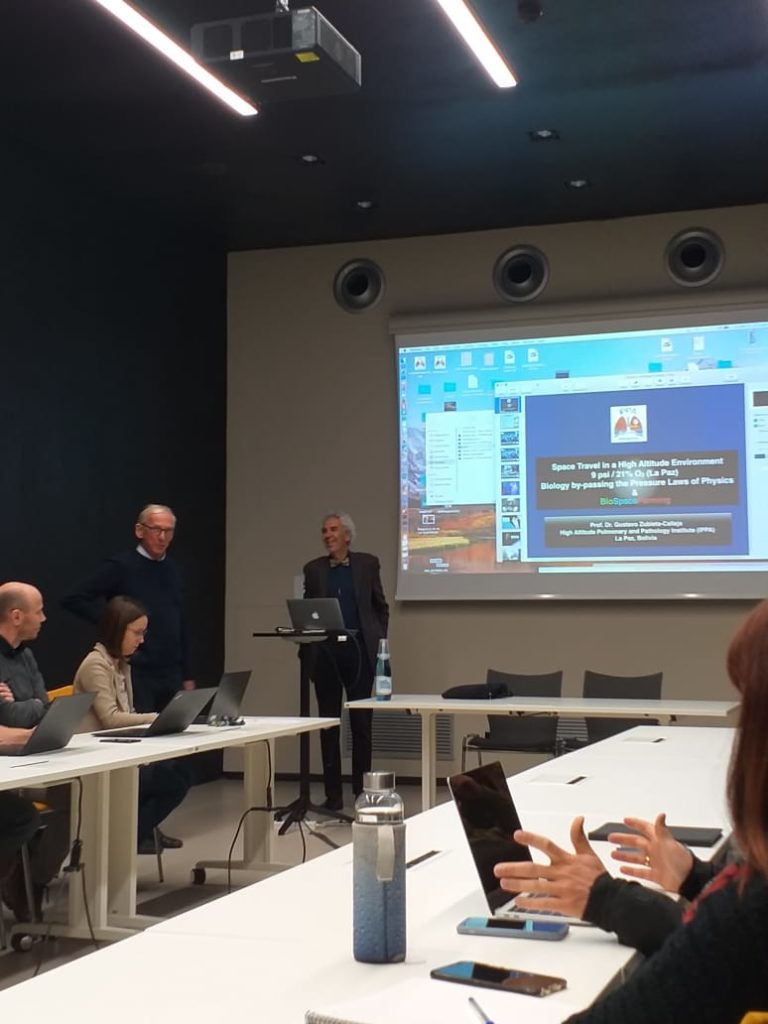
It was an interesting visit as this facility is quite big and top of the line, of course. A research project was being started the 2nd day we were there. We met many of the scientists in a wonderful lunch and we discussed things of common interest.
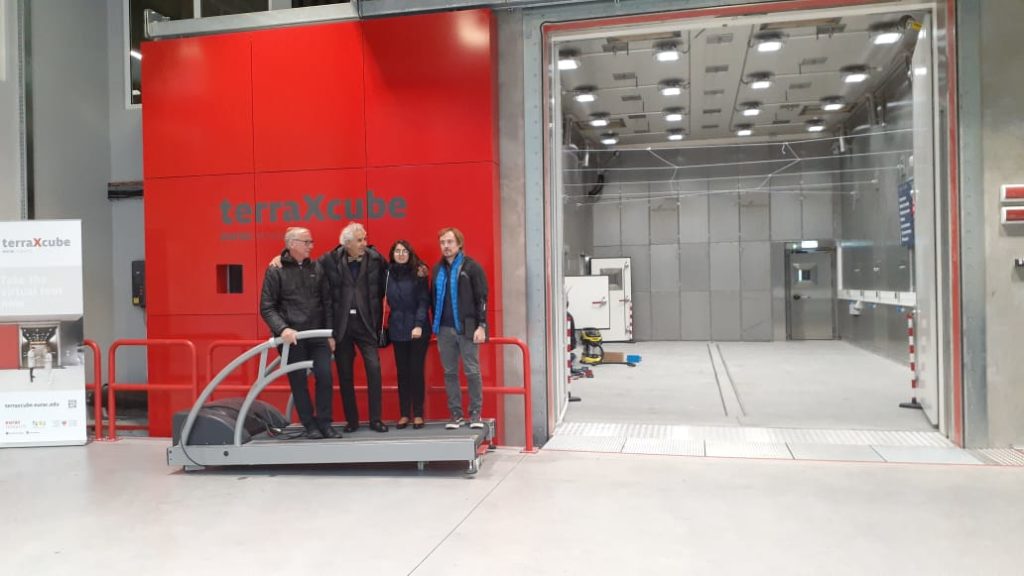
We traveled to Milano and met our friends Prof. Giuseppe Miserocchi and his wife Cristina. At the University of Milano Prof. Giuseppe Miserocchi gave a splendid talk in relation to his trip to Bolivia and his recent work on pulmonary circulation time in hypoxia.

Prof. Dr. Gustavo Zubieta-Calleja followed with a talk on Space Travel in a Chronic Hypoxia Environment. Very interesting team of professors and students. We enjoyed a beautiful and delicious dinner in their house with Sandro and Patrizia.

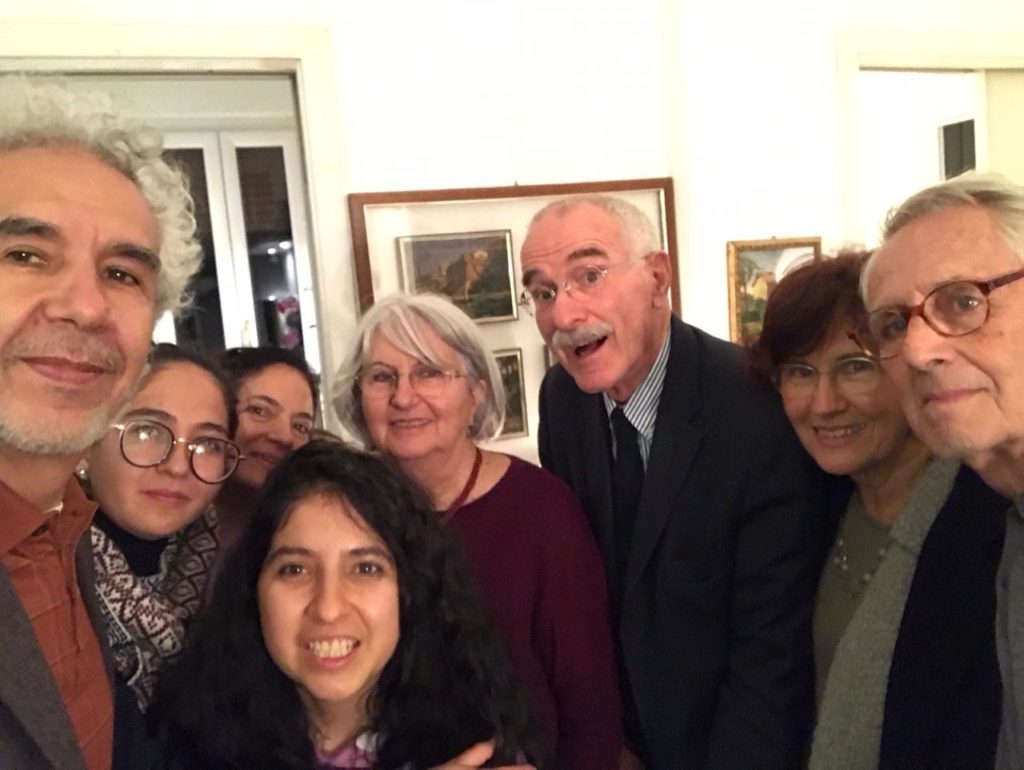
Next day we headed to Venice and had to put on plastic rain boots as there was rain water in the streets, when we arrived. However in 1 hour the level went down and we were able to enjoy such a wonderful city.
It has been an honor to give talks in such highly scientific environments blessed with remarkable and historic geniuses, Italia!!!
7th Chronic Hypoxia Symposium
http://zuniv.net/symposium7
Hello from our beautiful La Paz, Bolivia 4100 to 3100m, one of the 7 marvel cities of the world.
And it continues to grow:
Always remembering our Mountain Guru Gustavo Zubieta-Castillo (Sr.).
and thanking him for his extraordinary academic legacy !!
His genes are now in a third generation, Natalia Zubieta De-Urioste who is now our brand new M.D.
and a transcendental member of our team at the High Altitude Pulmonary and Pathology Institute.
Gustavo Sr. must indeed be proud !
_______________________________________________________________
The concept about hypoxia is always negative. The problem is that it is a biased opinion. There is a constant search for the deleterious effects of hypoxia. However, several adaptation mechanisms are misinterpreted as being a negative response, when they are actually an extraordinary positive effect.
We have to remark once more: Humans live longer at high altitude !!! Please read our latest publication:
This paper is the most popular paper on the BLDE Journal in that issue:
Furthermore, It has had such a high impact, that we have even been invited to write a book on the subject.
We are changing the concept of Chronic Hypoxia, around the globe. Understand why we are invited to give talks in many outstanding places:
She was born on Oct 28, 1900 in San Pedro de Buena Vista Potosi, Bolivia at 3850m of altitude. According to the US Gerontology Research group – that documents the oldest people on the planet- the bolivian Julia Flores would be the oldest woman alive since she is 6 months older than the japonesa Chiyo Miyako, born on May 2 1901. Please read the article on Newspaper Pagina 7 here. At the opening session in the ABCICON ______________________________________________
Come join us to discuss these and other Chronic Hypoxia interesting aspects.
After 6 successful Chronic Hypoxia Symposiums (5 held in Bolivia and 1 in India) we invite you to join us and participate in the forthcoming, exciting:
7th Chronic Hypoxia Symposium
February 23- March 2, 2019
Dedicated to the late extraordinary Danish Physiologist Poul-Erik Paulev Poul-Erik Paulev, Ole Siggard-Andersen and Gustavo Zubieta-Calleja at the University of Copenhagen 2005Mark your calendar! This year we will also attend the Carnaval in Oruro 3800m. We want to show you how people dance with great energy over several kilometers and some carrying heavy 20 kilogram outfits. No one worries about hypoxia. As affirmed in our publications: The best way to defeat hypoxia is a timely exposure to chronic hypoxia __________________________________________________________________
Other news
Conferences in USA, 2018
This time we were in the wonderful USA, to give talks about our scientific experience in chronic hypoxia. It was a splendid and unique experience.
We started with a talk at the National Institutes of Health in Washington. Another in Pennsylvania for the local Geriatrics Society. The next at the Center for Space and Planetary and Sciences in the University of Arkansas.
The last talk was at Tulane Medical School in New Orleans, Louisiana.
Read about it here:
http://www.altitudeclinic.com/usa-2018
______________________________________________________________
Space flight under Chronic Hypoxia. One more step in Human BioSpaceFormin.
Get a sneak pre-print preview of this paper at ResearchGate.
|
Grand USA Chronic Hypoxia Tour 2018
Between April 18th and April 30th Prof. Dr. Gustavo Zubieta-Calleja, Director and Head of the High Altitude Pulmonary and Pathology Institute in La Paz, Bolivia, gave talks explaining the benefits of Life under Chronic Hypoxia (low-oxygen).
It started with a talk on April 18th at the National Institutes of Health, National Heart Heart, Lung and Blood Institute in Bethesda Maryland, in the Division of Lung Diseases. It’s director Dr. James Kyley introduced Prof. Zubieta to a group of his top Staff scientists.
The presentation was entitled: “Benefits of exposure to Chronic Hypoxia: Adaptation, Tolerance to Hypoxia, Acid-Base at high altitude and future space travel”. It was a stimulating talk that has a different concept regarding the traditional fears of hypoxia in Sea level physicians. This talk showed that chronic hypoxia at high altitude residents gives rise to many advantages, as a way of adaptation.
Explaining exercise at high altitude
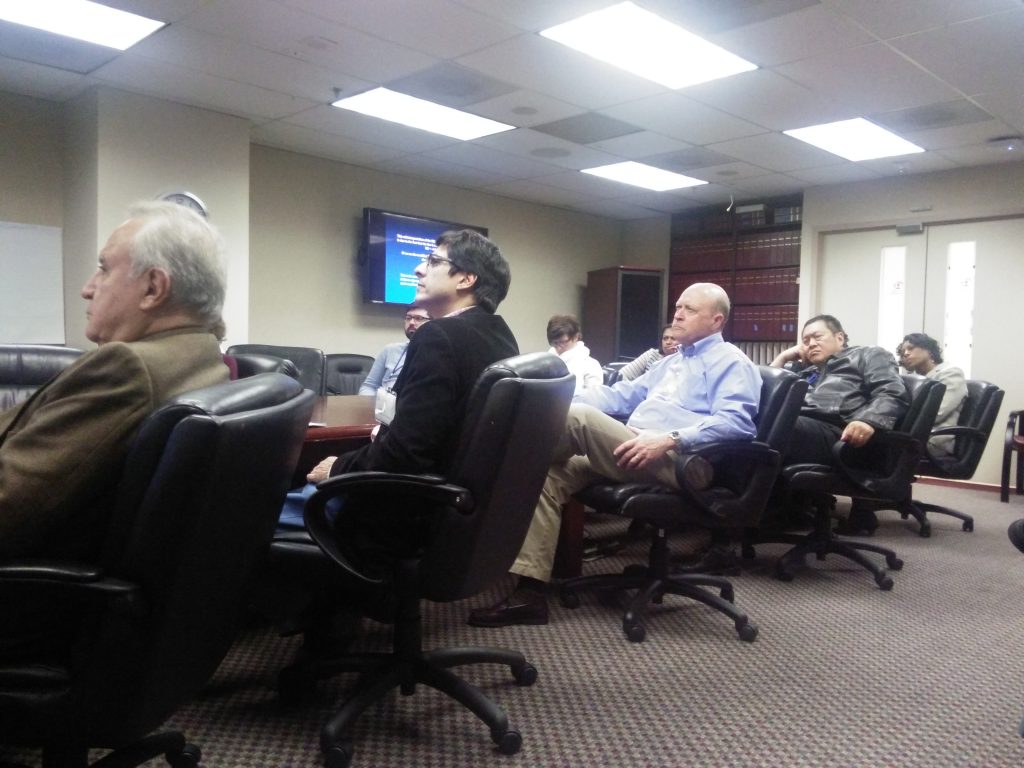
Among them he showed that Bolivians live longer at high altitude in the high altitude areas.
http://www.bldeujournalhs.in/article.asp?issn=2468-838X;year=2017;volume=2;issue=2;spage=80;epage=90;aulast=Zubieta-Calleja
This scientific paper is the most popular article in that journal thus far, since its publication on Dec 15, 2017. We have also been invited to write a book on this subject. So this is a transcendental paper in high altitude medicine.
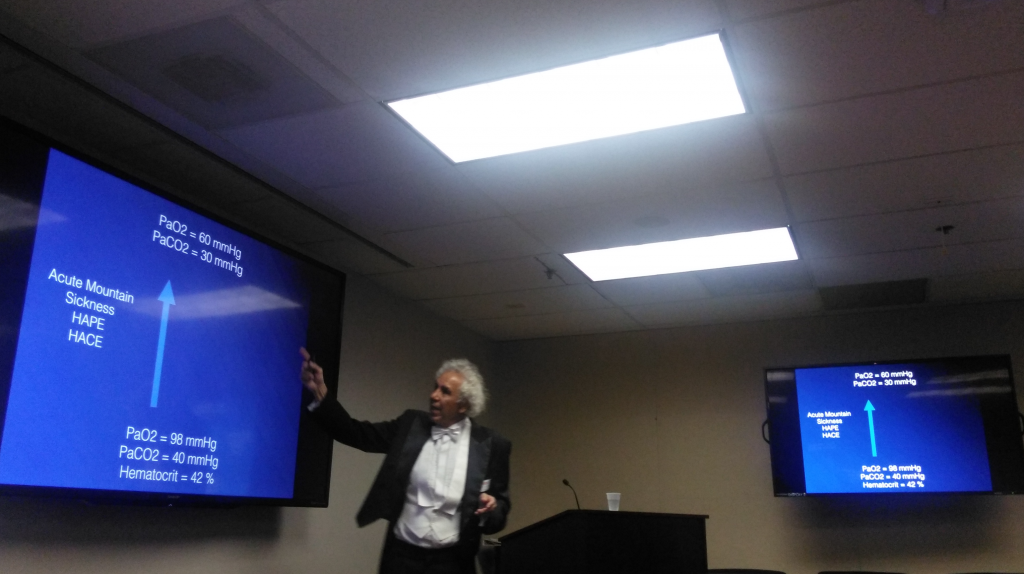
However many other subjects were dealt with in the conference, like the Adaptation Formula that we developed.
And the Remarkable Tolerance to Hypoxia formula that we also created:
This formula shows that paradoxically, the higher man goes to high altitude the more tolerance to hypoxia there is. Compared to sea level, the high altitude residents of La Paz, are 1.7 times more tolerant to hypoxia. Similarly, on the summit of Mt. Everest, where humans have climbed to, without the assistance of oxygen, it is around 6 times. This outstanding capacity of survival in such low levels of oxygen is proof that nature has wisely granted living beings the mechanisms to survive and sustain life even in the extreme environments.
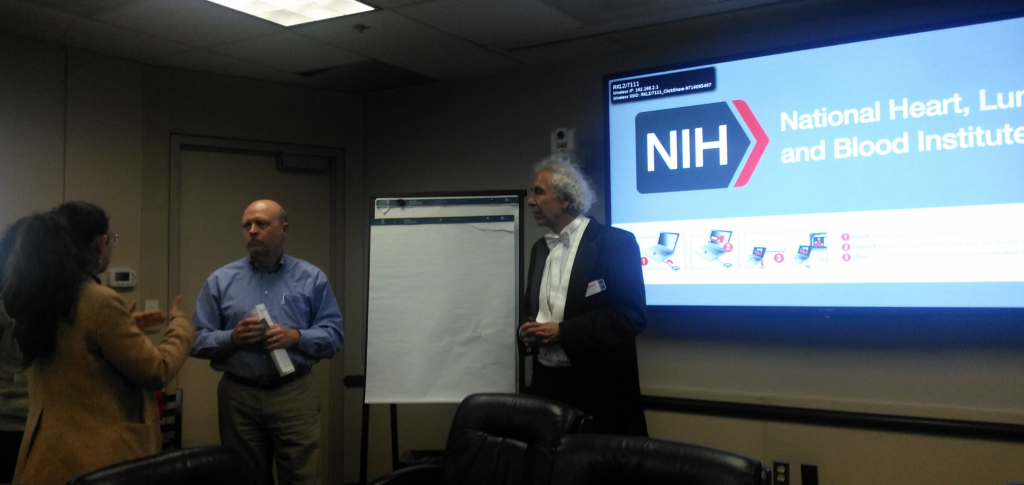
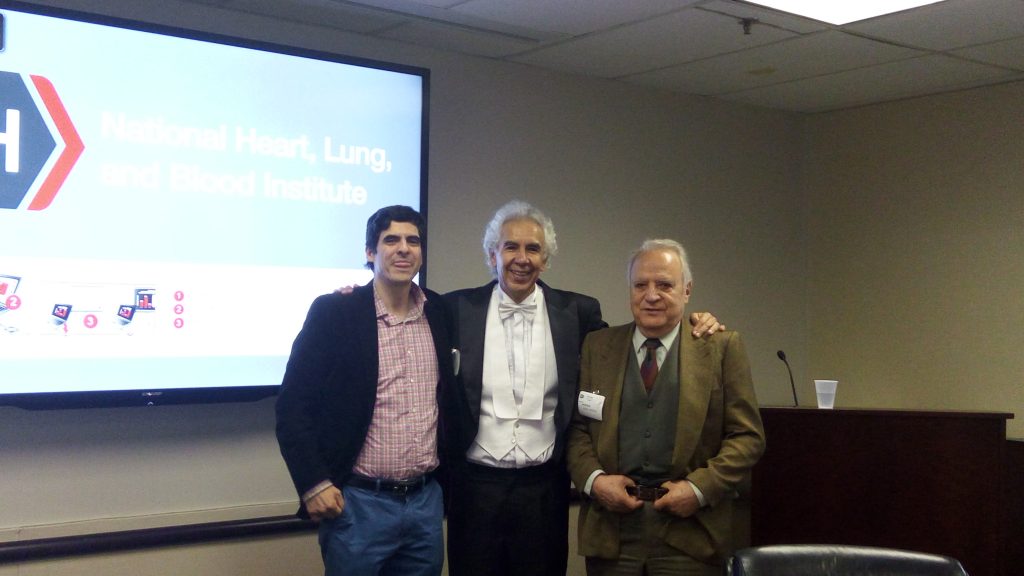

We then moved on to meet Dr. Oscar Murillo, a distinguished Geriatrician in Pennsylvania.

He kindly hosted a conference dinner at his beautiful residence in Schneksville, Penssylvania. The dinner was great. The members of the Geriatrics Society were a delight to share moments with.
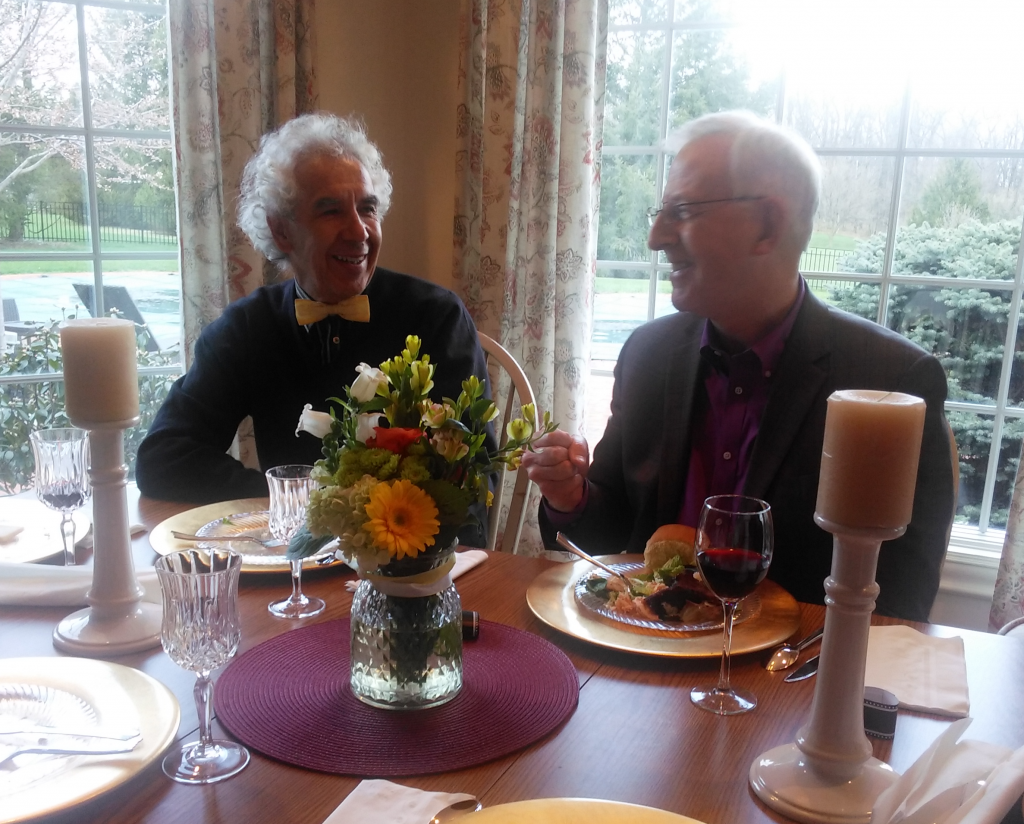
Among them, Dr. Steven Fuller, a most distinguished Geriatrician with whom we shared many interesting comments regarding high altitude physiology.
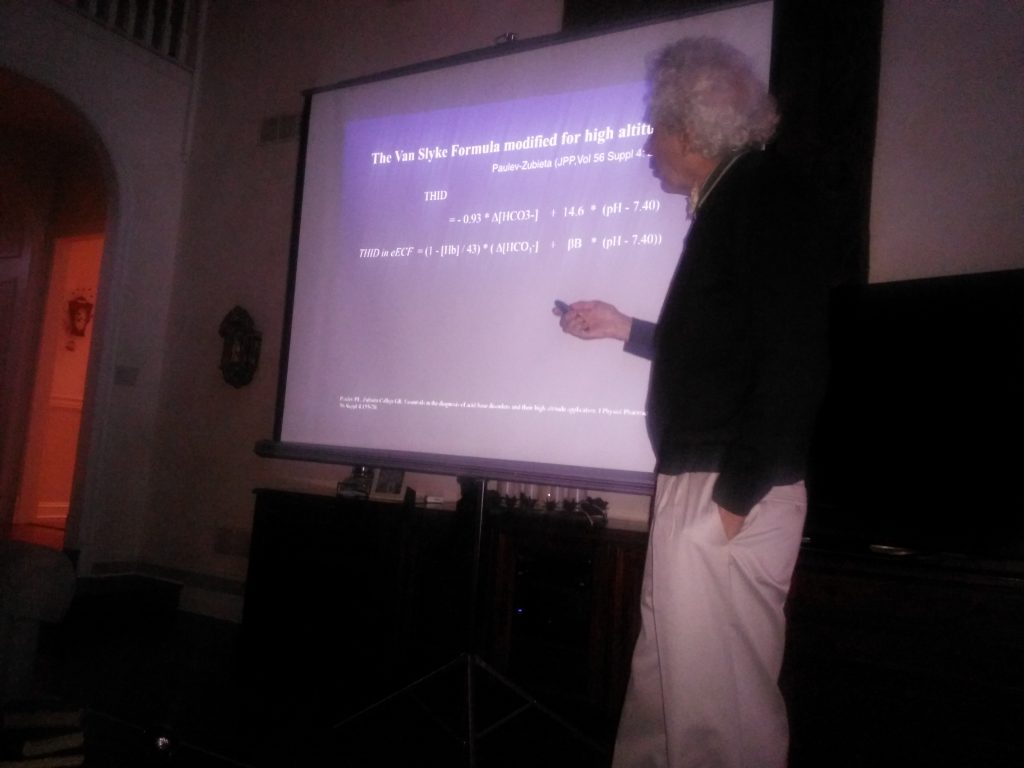
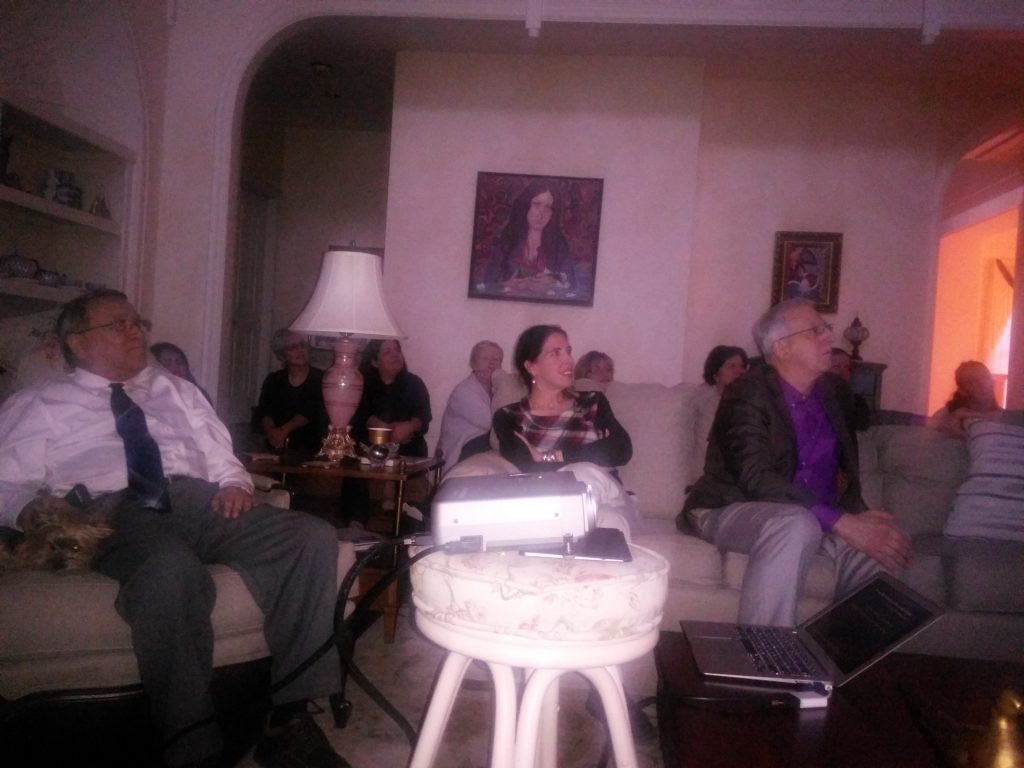



Our next stop was Fayetteville, Ark where Prof. Zubieta-Calleja gave a talk at the Center for Space and Planetary Sciences in the University of Arkansas.
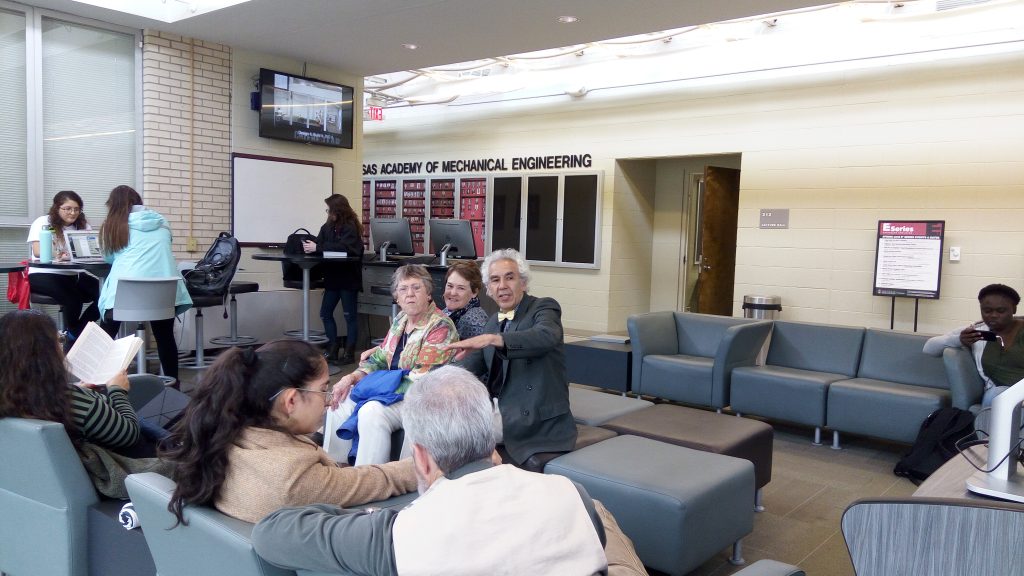
He had attended this University during a year as a Pre-med before his transfer to the Universidad Mayor de San Andres Medical School in La Paz, Bolivia. Prof. Dr. Gustavo Zubieta-Calleja, was an exchange student in Little Rock, Arkansas and lived with the Smith Family in 1973 prior to attending to the University of Arkansas.

Mr. Jim Youngblood, working for NASA, had met and acquainted astronaut Ed White of the Apollo program, who had given, as a Christmas present, an autographed photo to his son Tom Youngblood, currently a Pediatrician married to Cindy Smith. Astronaut Ed White was one of the three astronauts that unfortunately died in the tragic prelaunch burn of Apollo 1. Such event initiated the sea level (760mmHg), in space cabin pressure flights with 21% oxygen.

This coincidence of meeting Mr. Jim Youngblood in the dinner prior to the talk on space travel, is truly extraordinary, since for Prof Dr. Gustavo Zubieta-Calleja’s talk proposes that high altitude pressures (495mmHg) similar to the city of La Paz (3600m) be used in space capsules instead.
The title of the talk for the Center for Space and Planetary Sciences was about “Space travel under Chronic Hypoxia“.
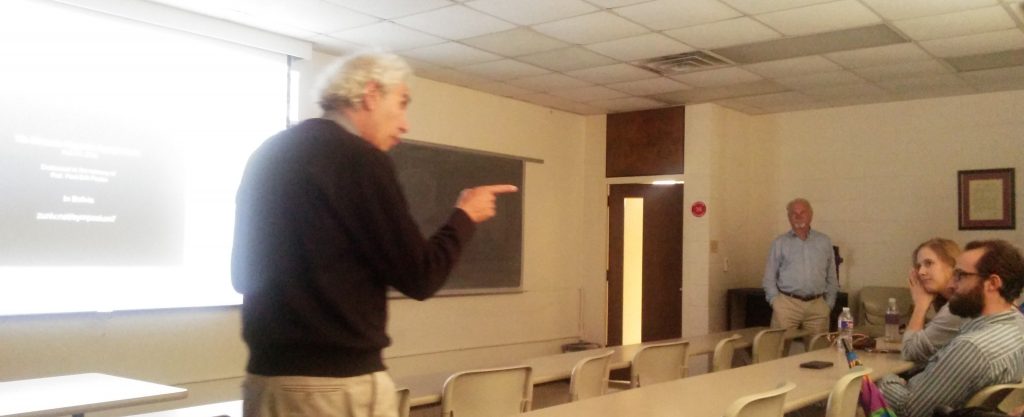
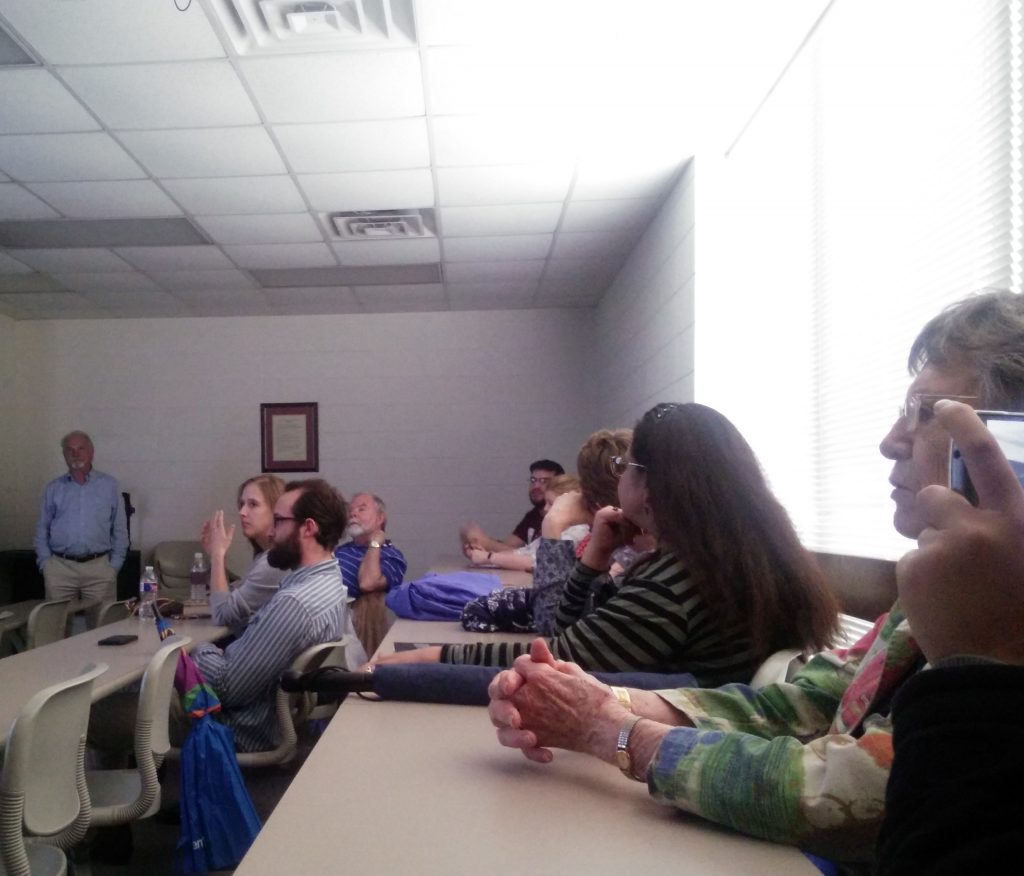
It was in relation to an original idea of Prof. Zubieta-Calleja back in 2007 as expressed in his book “Adaptation to High Altitude and to Sea Level: Acid-Base Equilibrium, Ventilation and Circulation in Chronic Hypoxia“.

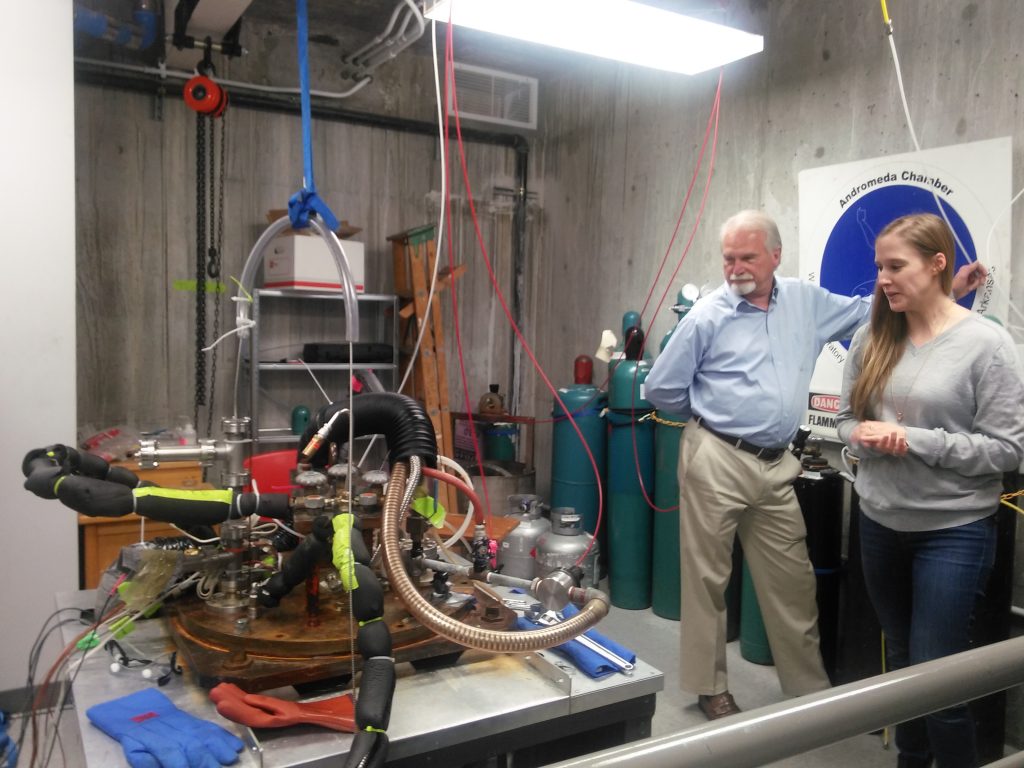
The idea is that future space travel has to be undertaken in high altitude environment similar to the city of La Paz (3600m), within space capsules.
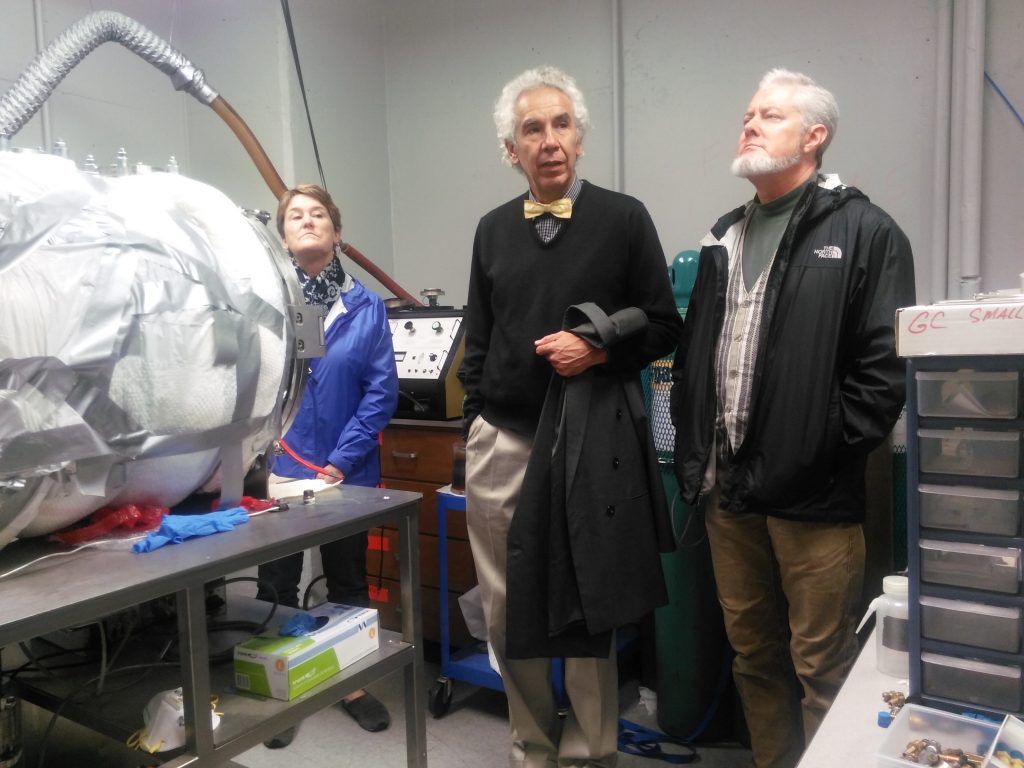
This would grant astronauts great advantages. It would allow for a practical solution to astronauts anemia in Space. Furthermore, it would give great advantages speeding up the possibility of going out of the space ship and using a space suit, since the pressure changes would not be as great. This would allow for much lighter space suits, aiding in the flexibility and maneuverability.
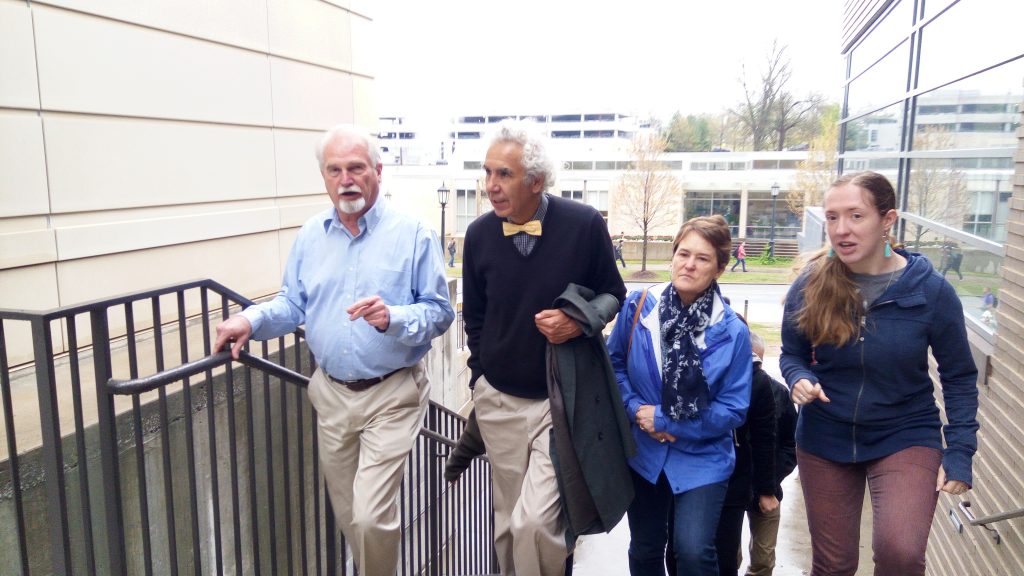
Much more will come from this revolutionary concept, that will change forever the way humans travel in space. Please click below to see the BLDE Journal pre-print:
https://www.researchgate.net/publication/325536733_Space_travel_in_a_high_altitude_environment_One_more_step_in_human_BioSpaceFormin
All these ideas are born from over 48 years of experience in our Institute, founded by the late Prof. Dr. Gustavo Zubieta-Castillo:
The final talk was given at Tulane Medical School in New Orleans, Louisiana.

This was a very special situation. On a previous conference talks organized by Prof. Thuppil Venkatesh in Dec 2017 throughout India, Prof. Zubieta-Calleja, had the opportunity to meet Prof. Dewan S.A. Mahid at Prof Kusal Das’ Laboratory in BLDE University in Vijayapur, India. Prof. Majid a most distinguished scientist of the Physiology Department at Tulane, invited Prof Zubieta-Calleja to go give a talk.
Prof. Zubieta-Calleja had been in New Orleans when he was 8 years old during two years because Prof. Dr. Gustavo Zubieta-Castillo was a visiting Professor at Tulane Medical School back in 1964.
We had a special bonus as we met our dear friend Prof. Rafael Rubio and Cherry his wife for the second time in beautiful New Orleans.
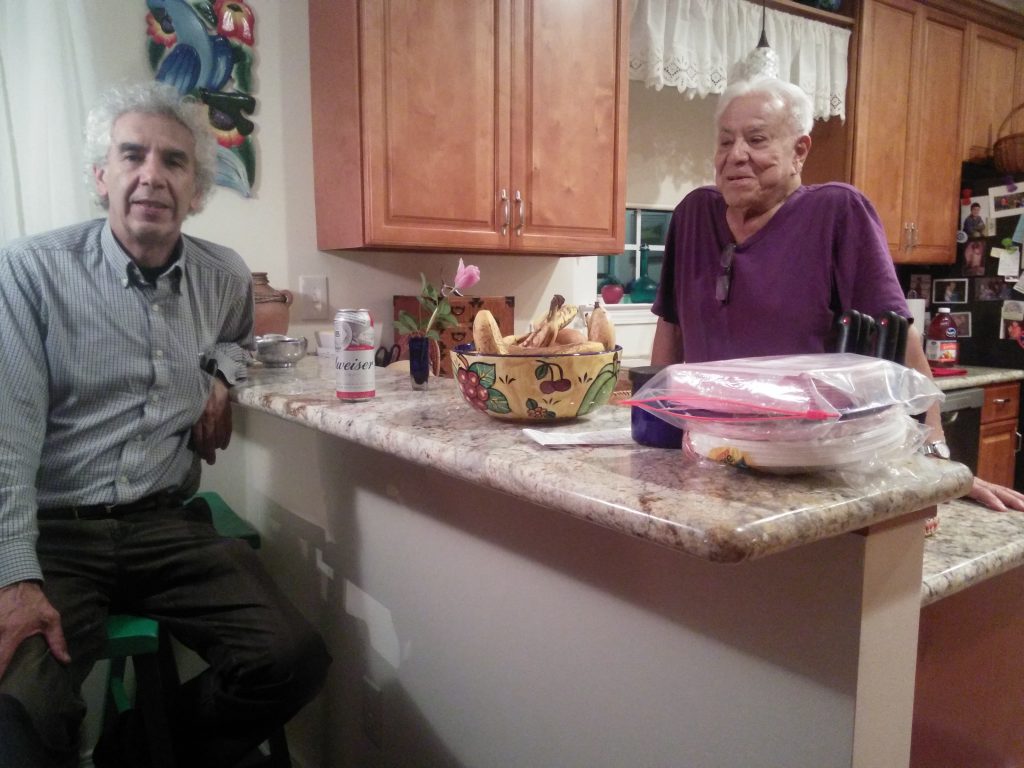
We had the most interesting discussions about science and likewise, Rafael and following the extraordinary coincidences, Rafael had worked with Gustavo Zubieta-Castillo (Sr) in the 60’s at the Instituto de Cardiologia in Mexico. They had published a joint paper entitled “RUBIO, R., and-ZUBIETA, G.: ‘The variation of the electrical resistance of microelectrodes during the flow of current’, Acta Physiologica Latin Americana, 1961, 11. “, which became a very cited reference in physiology.

Top row from left: Prof. Zubieta-Calleja, Prof. Edwan Mahid, Daniel from Bangladesh. Prof. Rafael Rubio, Seated from left: Cherry Rubio, Rafaela Zubieta, Dr. Natalia Zubieta DeUrioste, NIna Mahid, Mrs. Daniel
Dr. Rafael Rubio obtained his PhD in US and became a Professor of physiology at University of Virginia during over 30 years, becoming Emeritus. He now resides permanently in New Orleans and had written his book “Endothelial Luminal Membrane-Glycocalyx: Functionalities in Health and Disease” at Tulane.


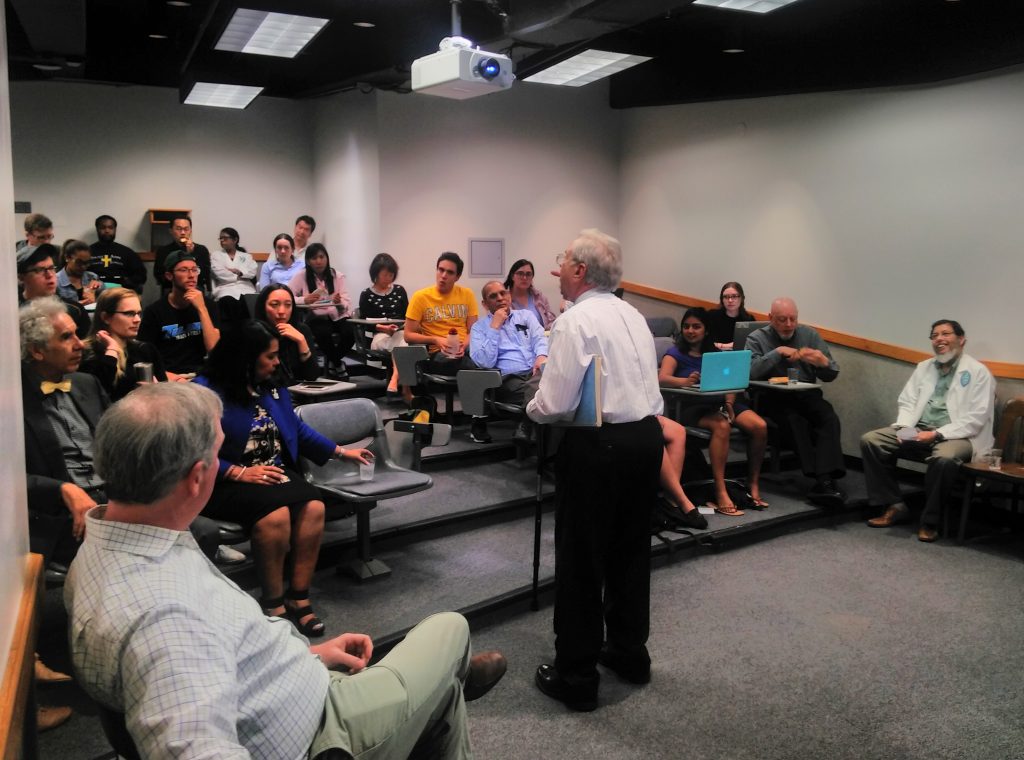
The talk was carried out on April 30, 2018 at the Physiology Department which runs under the direction of Prof. Gabriel Navar. It was a pleasure to meet him and to discuss subjects of mutual interest.
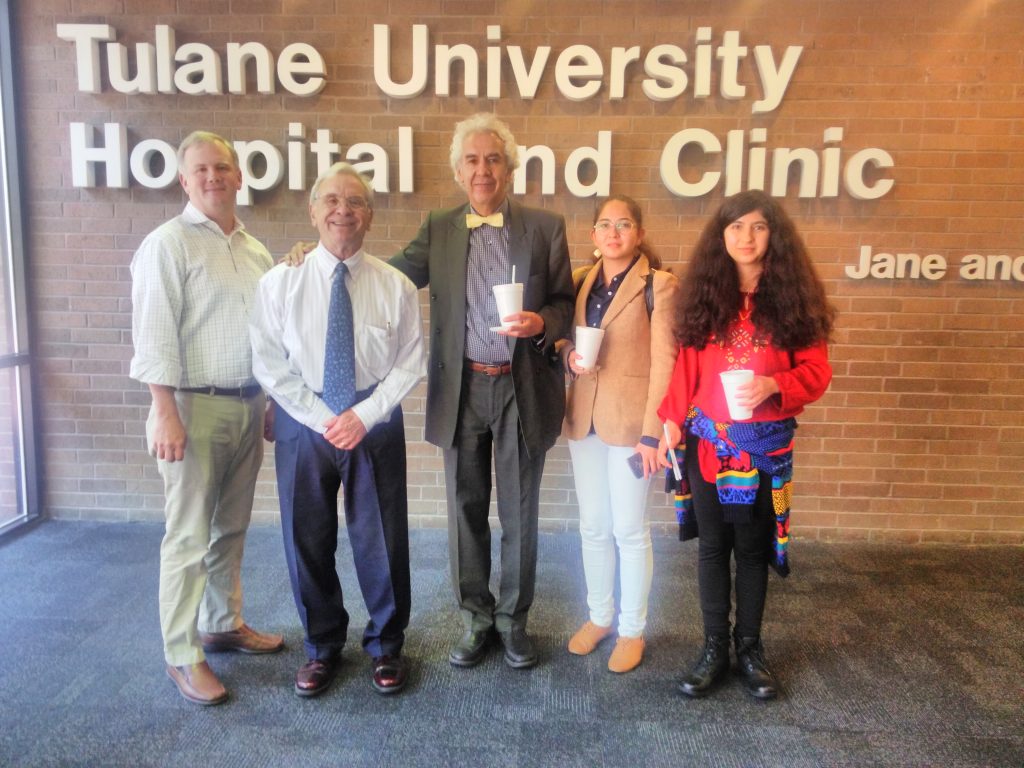
He heads the Center for Biomedical Research Excellence in Hypertension and Renal Biology and has a staff that is truly outstanding. The program of visits is below:
We truly enjoyed meeting such distinguished colleagues at Tulane, and particularly Dr. Minolfa Prieto.
In this opportunity Prof. Dr. Gustavo Zubieta-Calleja was with his IPPA team, his brand new colleague and scientific researcher Dr. Natalia Zubieta, our language expert Rafaela Zubieta and Lucrecia De Urioste our International Relations expert.
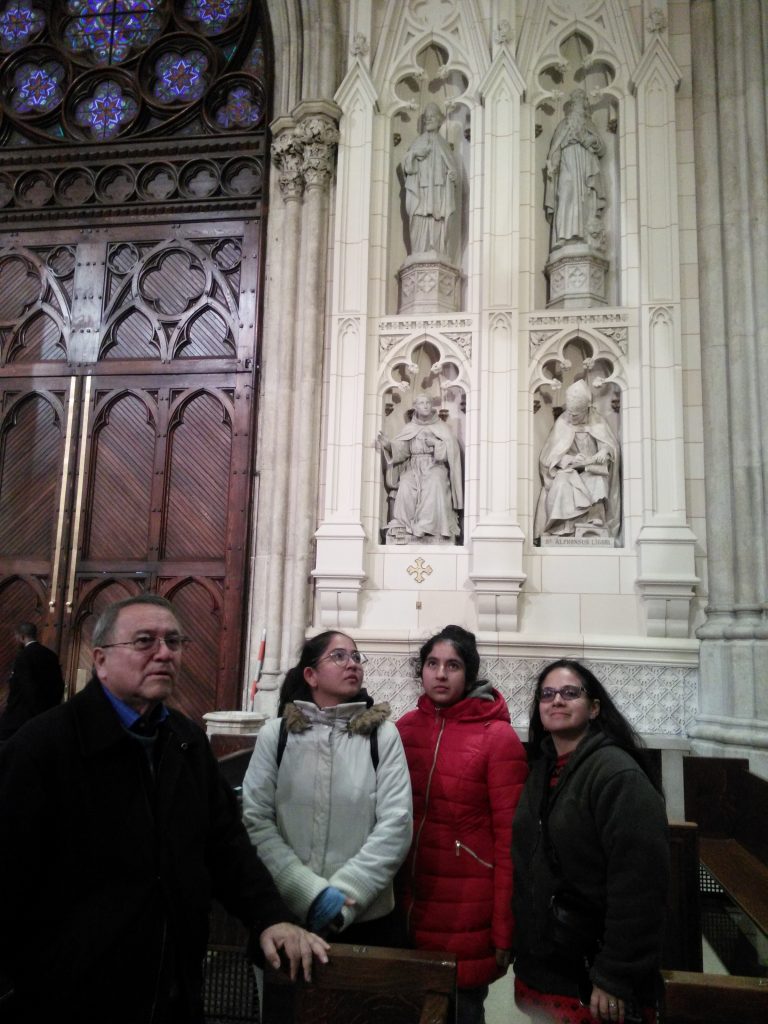
Come join us at the 7th CHRONIC HYPOXIA SYMPOSIUM in Feb 2019 !!
India conferences 2017
India 2017 Conferences
Nov 29 – Dec 15, 2017
Once again Prof. Dr. Gustavo Zubieta-Calleja was invited to participate in ACBICON (Association of Clinical Biochemists of India Conference, and to give talks at BLDE University between Nov 29 and Dec 15, 2017. Prof. Thuppil Venkatesh, was the host and he organized several conferences and meetings along with some visits to temples and friends in Bangalore, Lucknow, and Vijayapur. Here is his description of the events.
The inauguration was carried out by Prof. M.L.B. Bhatt, Vice-Chancellor of the famous KING GEORGE’S UNIVERSITY in Lucknow. His speech was very interesting and full of oratory talent. He talked about “The Lead Man” referring to the famous Prof. Thuppil Venkatesh and added that also present was “The Hypoxia Man” referring to me. I felt touched by such kind denomination. Many colleagues then started calling me “The Hypoxia Man” the rest of the meeting, which obviously makes it easier for them than to say my name that is complicated in India, as you may appreciate. They often confuse my First name Gustavo with my Last name Zubieta-Calleja. These are handicaps of cultural differences.


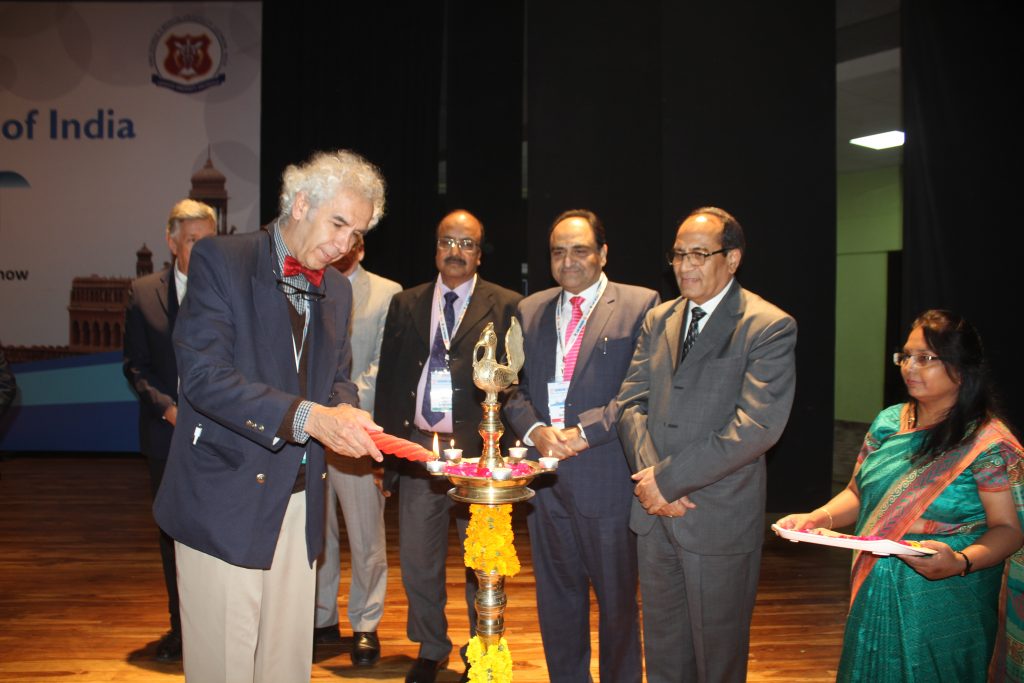
Prof. Abbas Ali Mahdi, the previous Head of the Biochemistry Department at King George’s University and now Vice- Chancellor of Era University, was the organizer of this interesting meeting in Lucknow. There I had the opportunity of meeting once again Prof. Praveen Sharma, the Head of the Biochemistry of the All India Institute of Medical Sciences in Jodhpur and Chief Editor of the Indian Journal of Biochemistry. I was invited to participate in the editorial board of the Journal and had the privilege of attending the yearly meeting.
My conference was entitled:
Clinical Biochemistry at the summit of Mt. Everest: Correct interpretation of arterial blood gases and acid-base status.
We then flew back to Bangalore where we met some old friends like Parthasarathy and Shashi.
We then travelled by train to Vijayapur and where we spent 4 days in multiple activities at the distinguished BLDE University Physiology Department that is more than 100 years old. We were greeted once more, by Prof. Kusal Das Head of the Laboratory of Vascular Physiology and Medicine
With Professor of Physiology Dewan Majid of Tulane Medical School, we shared very pleasant moments along with Prof. Thuppil Venkatesh and Parthasarathy.
I gave a talk related to chronic hypoxia and how high altitude residents have achieved what we call an “advantage for survival” and where I explained that we observe that sea level residents have a very poor tolerance to hypoxia, inducing us to affirm that they suffer a “disability”, whereby they have poor response to hypoxia and in contrast high altitude residents can even achieve extended longevity.
Incidentally, a researcher wrote:

If any one else knows any high altitude cities in the world where there is extended longevity please let us know by sending us an email: zubieta@altitudeclinic.com
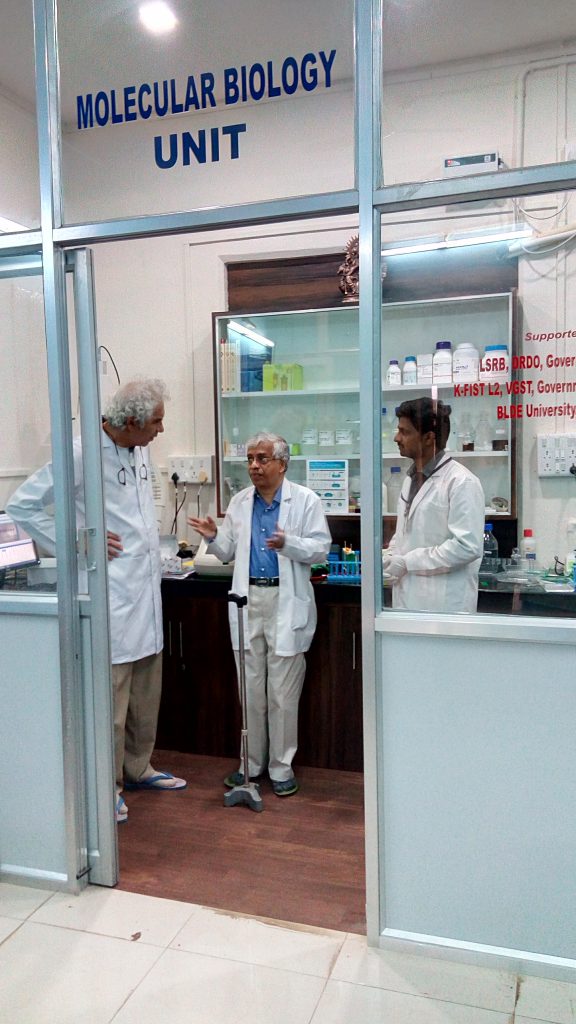
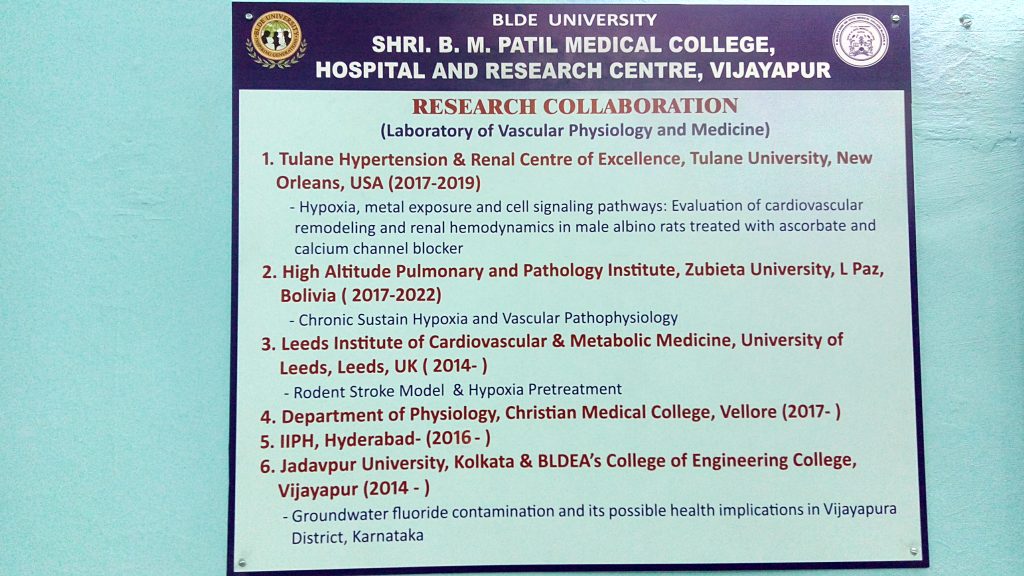
Prof. Thuppil Venkatesh and myself also gave talks at the engineering Department at BLDE, thanks to an invitation by Prof. Swastika Das.
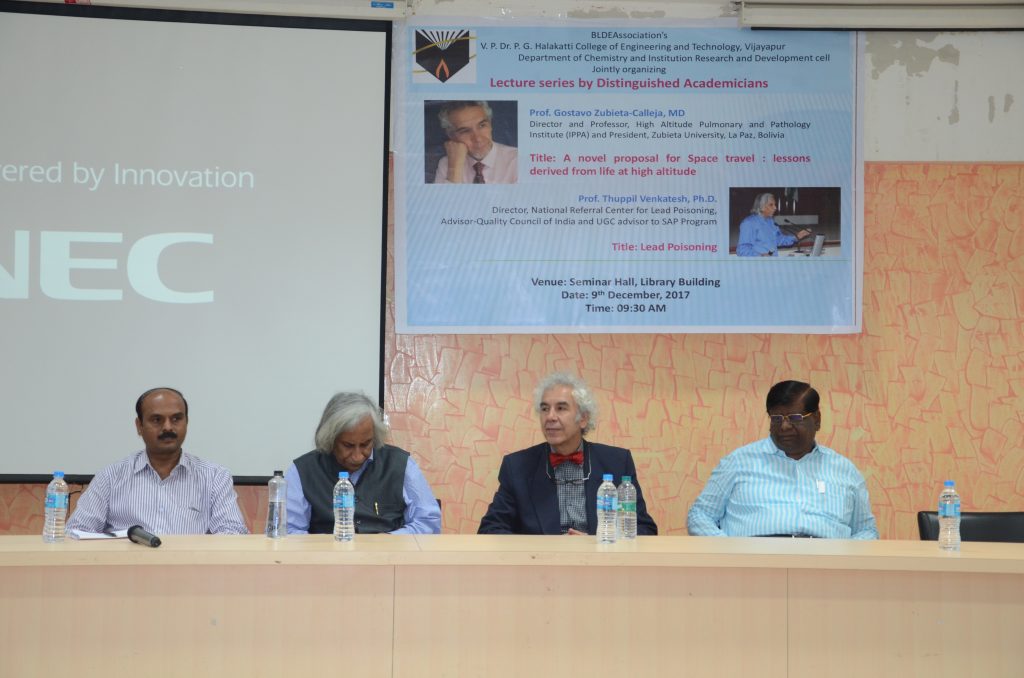

These were two very stimulating talks that generated much enthusiasm in the Professors and students of such a distinguished engineering School.
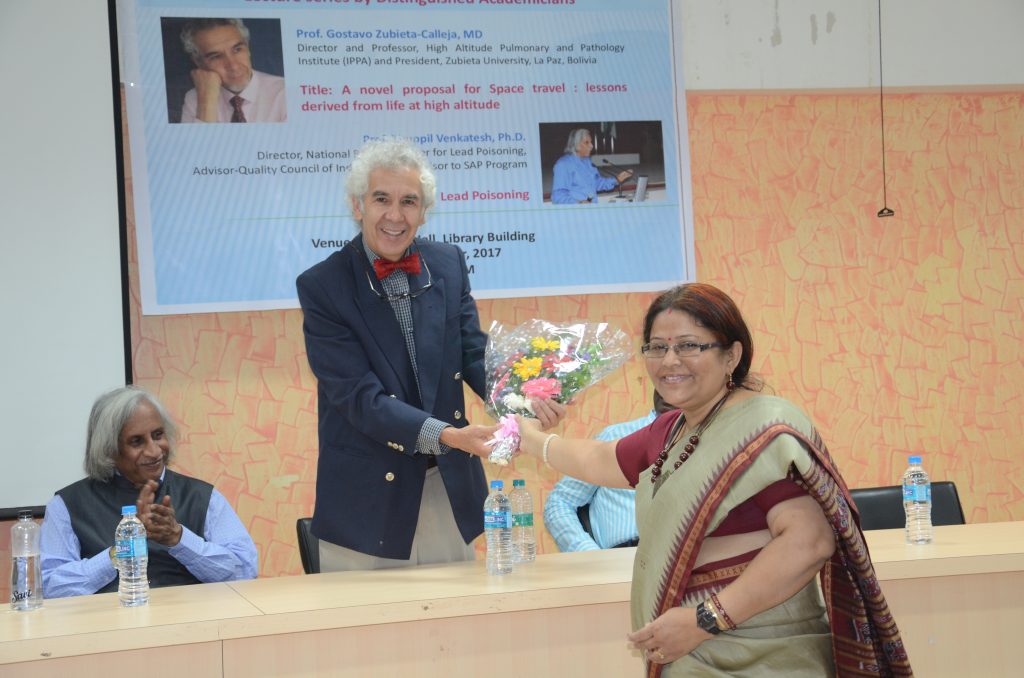

I was also invited to be the External Examiner for a PhD Thesis by Dr S S Devarmani, Controller of Examination, BLDE University in reference to:

After an interesting presentation and round of questions by the assisting Professors of BLDE, and then followed by a closed meeting with further questions and recommendations, between the Three examiners: Prof. Kusal Das, Prof. Gustavo Zubieta-Calleja and Prof. Manjunath Aithal the guiding professor, along with the student Praveen S. Patil, we decided to accept and approve the Thesis and I was granted the honor of announcing it to the candidate.
There were several other activities but upon returning to Bangalore, I was invited by Satish Jain, President of the Maharaja Agrasen Hospital, to inaugurate the new Fertility Unit. Please see the video.
Aside from our Scientific cooperation with BLDE University with Prof. Kusal Das, we are now proud to announce that Dr. Abbas Ali Mahdi has honored me as:
Visiting Professor at Era University Lucknow, India
Visiting Professor at American University in Barbados
Thereby we establish a promising future collaboration association.
Our most profound thankfulness to Prof. Venkatesh and all his colleagues for the wonderful visit.
6th Chronic Hypoxia Symposium Follow-up
Chronic Hypoxia Symposium VI – Follow-up
Oct 10 – 16, 2016
La Paz, Bolivia
Dedicated to the late Prof. Dr. Gustavo Zubieta-Castillo

This unique itinerant symposium was a gathering of participants from around the world, all sharing a common interest in the wonder of the mountain environments, whether through research or other endeavors. With Chairman Dr. Gustavo Zubieta-Calleja at the helm, assisted by his family, medical students and Dr. Fabian Wayar. This symposium convened in La Paz (3100 – 4100m), and was generously supported by the High Altitude Pulmonary and Pathology Institute (IPPA) with collaboration by the Bolivian Navy, the La Paz Medical College and its President, Dr. Luis Larrea and the Universidad Franz Tamayo “Unifranz.” All were engaged in the lively presentations, and were wholly encouraged to participate in topic discussions.
Details of the Conference
The conference presentations were given almost exclusively in English. Attendees met in the Unifranz on the first day on Monday Oct 10, 2016, where opening words were given by Prof. Dr. Gustavo Zubieta-Calleja, Director of the High Altitude Pulmonary and Pathology Institute (IPPA) and Dr. Thuppil Venkatesh, President of the International Society of Chronic Hypoxia. This symposium was poignantly dedicated in the memory of the incomparable Dr. Gustavo Zubieta-Castillo, whose life was devoted to the study of hypoxia and the care of patients suffering from altitude illness. A presentation by Dr. Zubieta-Castillo’s granddaughter, Natalia Zubieta, highlighted his life’s work. Conference participants were provided with books commemorating Dr. Zubieta-Castillo with quotes from colleagues who respected and admired him and his work from around the globe.
Dr. Giuseppe Miserocchi, former Professor of Physiology and Biophysics at the University Milano-Bicocca in Italy, gave an enlightening talk on the Inter-individual Differences in the Adaptive Response of the Lung to Hypoxia. Dr. Miserocchi described the conditions leading to lung edema, including miscrovascular permeability and increased cardiac output, versus the conditions opposing it, including interstitial matrix rigidity, vasoconstriction in pulmonary microcirculation, and reduced capillary patency. Variations exist among human response to diffusion capacity of the lungs during hypoxia, with more than half of the subjects showing an increase in alveolar membrane diffusing capacity that overpowered the decrease in lung capillary blood volume.
Dr. Zubieta-Calleja gave a lively presentation regarding The Road to “Defeating Hypoxia” is a timely exposure to chronic hypoxia. He also discussed polyerythrocythemia as a precise terminology developed by the late Prof. Dr. Gustavo Zubieta-Castillo, to be used instead of chronic mountain sickness. He reiterated the simple yet powerful formula:
Adaptation = time / altitude
Dr. Zubieta-Calleja challenged the belief that people life’s under chronic hypoxia is debilitating, arguing that many conditions may be treated with exposure to hypoxia. He gave evidence of increased longevity among high-altitude dwellers. He punctuated his talk by climbing on a chair and “punching” hypoxia, breaking it into pieces that fell down in the screen, to emphasize its defeat!

After several breaks, in which the conference attendees enjoyed tasty local cuisine such as salteñas, cunapes, and galletas, Dr. Benedito Honorio Machado from the School of Medicine of Riberao Preto in the University of Sao Paolo, Brazil presented “Neural Mechanisms Involved in Autonomic and Respiratory Changes in Rats Submitted to Short-Term Sustained Hypoxia.” In this talk, Dr. Machado described the role of short-term sustained hypoxia on anesthetized rats in increasing the sympatho-inhibitory and bradycardiac components of baroreflex, as well as the sympathetic and respiratory responses of peripheral chemoreflex. They found hypoxic exposure was associated with increased excitation of the nucleus tractus solitarius neurons on the carotid body and aortic depressor nerve. Changes in glial density were also noted.
Dr. Alla Portnychenko, Head of the International Centre for Astronomical, Medical and Ecological Research, NAS of Ukraine presented via webcam “Rebuilding of carbohydrate and lipid metabolism under hypoxia: Regularities and therapeutic possibilities.” Her studies on rats showed activation of hypoxia inducible factor 1a (HIF-1a) and -3 a subunits during hypoxia, resulting in the induction of GLUT-4 and -1 in the myocardium and lungs. This resulted in a change from carbohydrate to predominantly lipid substrate up-regulation. In humans, they found changes in cholesterol metabolism, leptin and insulin-growth factor IGF-1 plasma levels, and positive correlation with HIF-dependent protein IFG-1 and HDL-cholesterol. She concluded with the intriguing suggestion that hypoxia might be used to correct metabolic disorders in some people.
Dr. Zoya Serebroska of the Bogomoletz Institute of Physiology in Ukraine presented via webcam “Potential application of cerium dioxide nanoparticles for acute pneumonia treatment.” She and her team found that CeO2 nanoparticles significantly reduced morphological and functional pulmonary damage in rats after exposure to pneumonia. It was noted that Dr. Serebroska’s mother Dr. Tatiana Serebrovskaya, also a hypoxia researcher, was one of the first to suggest the role of nitric oxide as an important molecule in vasodilatory regulation.
Dr. Walter Calderon of the Hospital Nacional Ramiro Prialé, EsSalud, Huancayo, Junín, Perú and the Universidad Nacional del Centro del Perú, Huancayo, Perú presented “Prospective Validation of Framingham Criteria for Congestive Heart Failure diagnosis in a High Altitude Population” He noted that sensitivity was 98.6% for patients with Heart Failure, but specificity of these criteria were only 12% among patients who presented with dyspnea and at least one of the major Framingham criteria. He showed a compelling picture of collateral circulation from a cardiac cath.
Dr. Jose Antonio Carmona Suazo of the Hospital Juarez in Mexico presented “CO2 reactivity, a tool for prevention of HACE (High Altitude Cerebral Edema): Hands-on workshop.” He gave an exciting hands-on demonstration of the non-invasive and safe ability to monitor the level of cerebral blood flow, ETCO2 in humans at altitude. Cerebral and respiratory effects were measured on Dr. Thuppil Venkatesh, who happily volunteered.
The Tiwanaku Código 0.4666 was presented by Willy Eduardo Cortez Hemzler, Investigador y Artista Plástico. Señor Cortez described how he discovered that the ratio of the length and width of the building materials at Tiwanaku equals 0.46, which is maintained throughout the structures. He showed the relationship of 0.46 to the radius of a circle.
After this, participants were treated to a bus tour of the city of La Paz.and the Inauguration Ceremony was held at the IPPA Building auditorium.
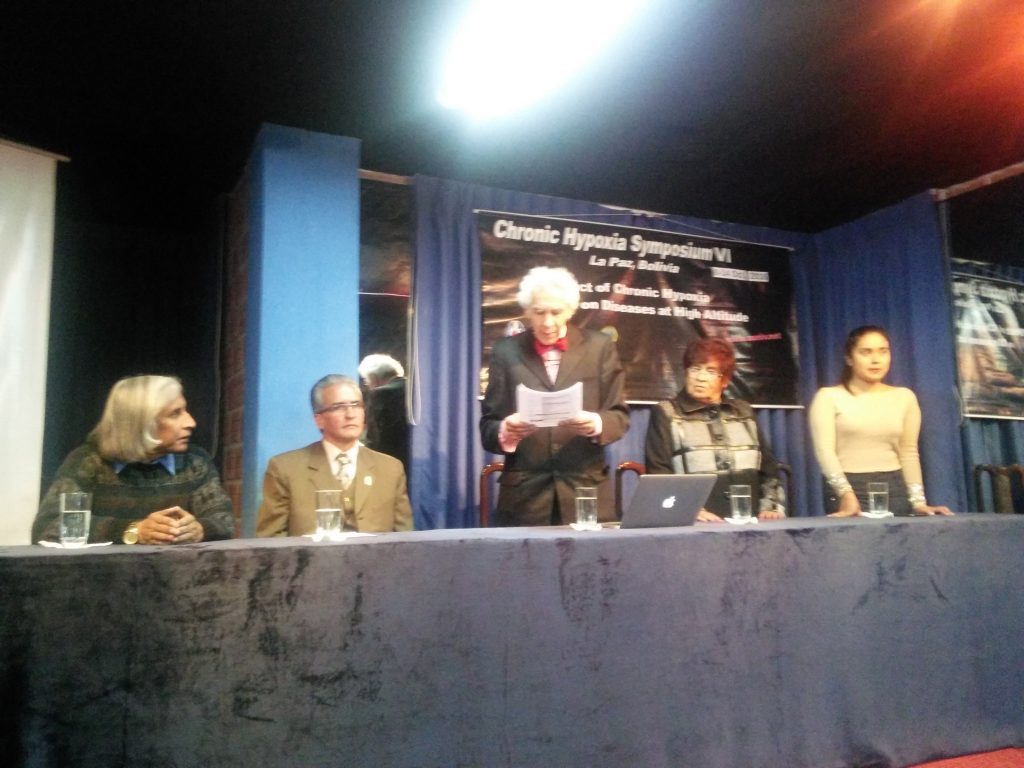
It was a lively ceremony, with honored by the presence of 4 ambassadors (Great Britain, Mexico, European Union and Italy) and the representative of the Consulate of India, along with the representatives of the La Paz Medical College, Unifranz and the Bolivia. The La Paz Mayor’s office through its representative, granted Prof. Thuppil Venkatesh the “Huesped Ilustre de la ciudad de La Paz” (Distinguished Guest of the city of La Paz), normally given only to outstanding personalities (like Presidents) that visit our city.

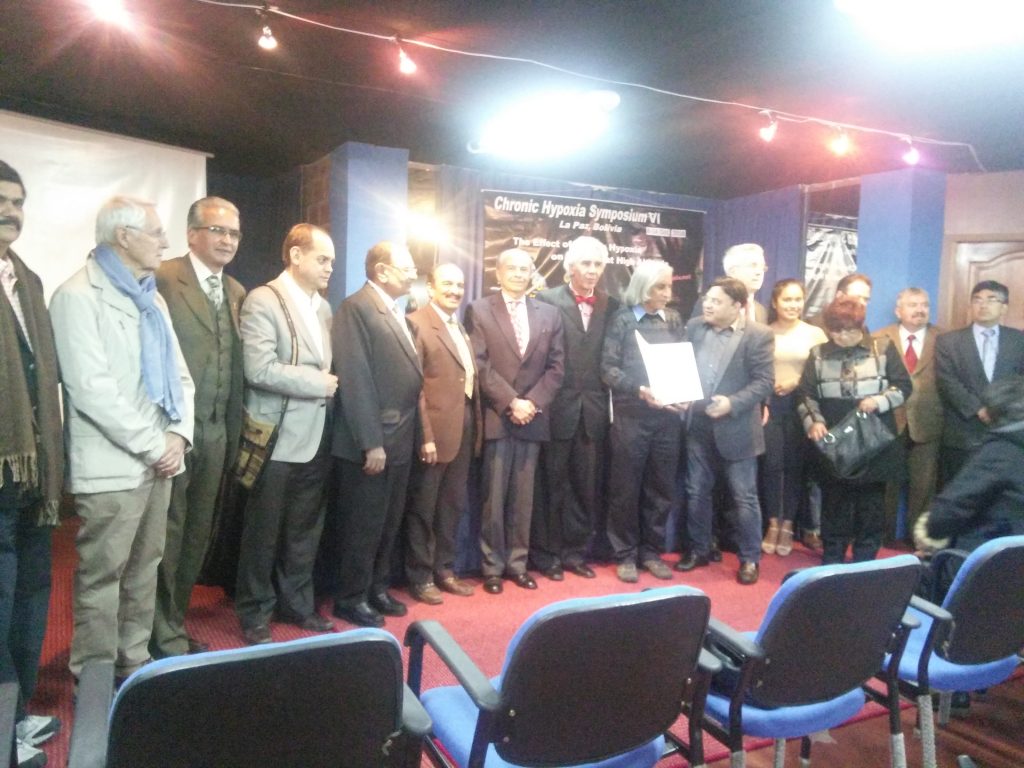
On Tuesday, October 11, participants left early in the morning to the ruins Tiwanaku and the Archaeological Museum, at 3800m. The morning provided a fascinating tour of the grounds of unknown age. Willy Eduardo Cortez Hemzler was the impromptu tour guide. The attendees also saw the big Monolito Bennet at Tiwanaku, and visited the ruins of Punta Punku, believed to be even older than Tiawanaku.
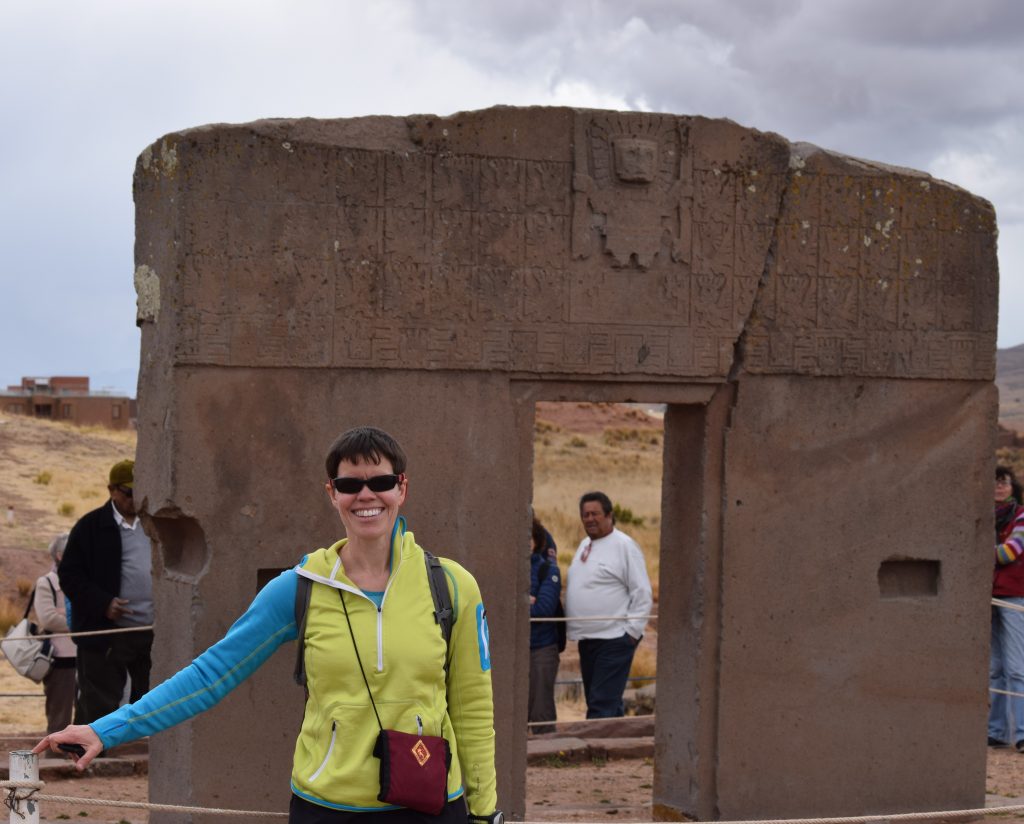
After this intriguing look at Bolivian history and life since ancient times at high altitude, participants had a late lunch on the Barco Multiproposito of the Bolivian Army. We were received in true elegance and style by the Army. Talks continued with Dr. Giuseppe Miserocchi continuing his presentation on “Inter-individual differences concerning the oxygen diffusion-transport function in the lung.” One fascinating thing we learned was that middle-distance runners tend to fare poorly at altitude, due to increased permeability at the alveolar level!
Next, presented Rajashekar Nanjappa of the Regional General Manager, THE HINDI NEWSPAPER, Bengaluru, India Media & Mountain Medicine A Commitment: Role and Impact of Media on Society and with Special reference to Newspapers role in Public Awareness. He focused on the endeavors of LESAAT which has organized treks at high-altitude around the globe.
After these presentations, attendees returned to La Paz at Unifranz and viewed the poster competition entries. These were “Development and validation of new sepsis criteria at high altitude” by Dr. Walter Calderon-Gerstein, and “Spirometry values of high-rise residents” of La Paz, Bolivia by one of the medical students, both awarded the 100 US$ price donated by Prof. Thuppil Venkatesh, President of the International Society of Chronic Hypoxia.
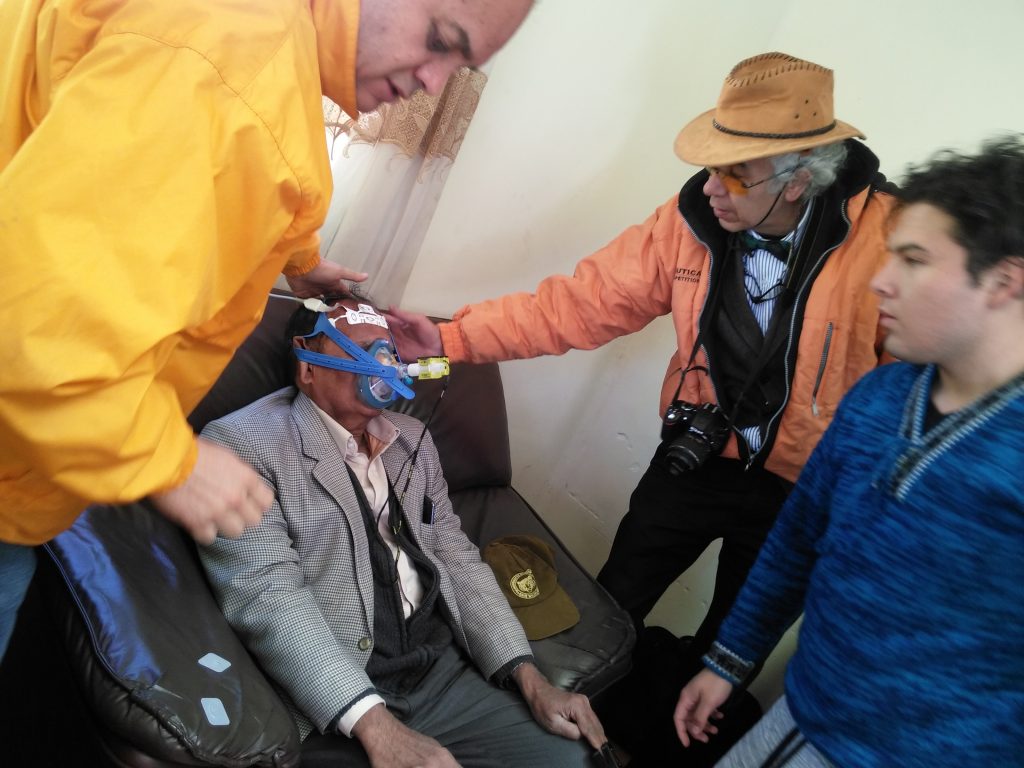

On Wednesday, October 12, participants rose early for the bus ride to Lake Titicaca at 3800m. Participants visited the High Altitude Diving Training Center in Tiquina.
Here, talks were given by the Comander of the Diving Center, Cap. Chavez who described in Spanish the history and workings of the Dive Center (CIBA) and the challenges encountered while diving at altitude (buceo en altura). After a delicious lunch tasting the high altitude lake trout, participants toured the hyperbaric chamber and the hospital boat located on the base.
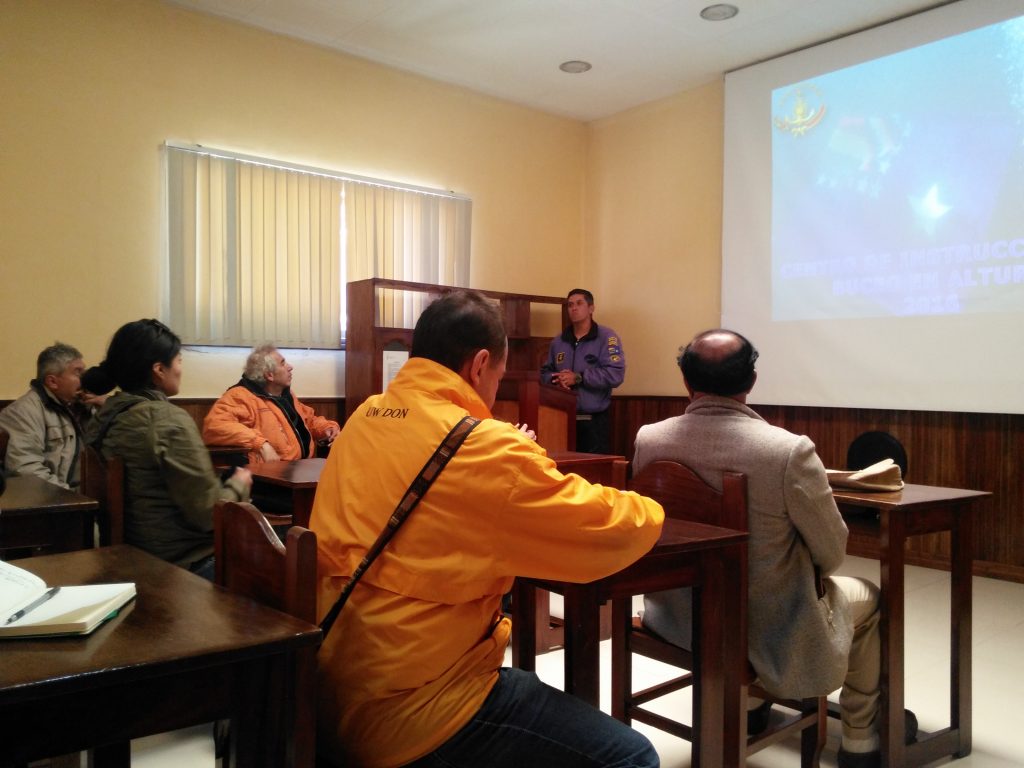
Other talks that day included “Low Altitude Peripheral Edema (LAPE): The opposite of HAPE or HACE” by Prof. Dr. Gustavo Zubieta-Calleja, on the swelling (positive Godet sign) that occurs when high-altitude residents spend time in low-altitude environments. He described the changes in sialic acid levels obtained from red blood cells in his family after a trip to low-altitude destinations in India.
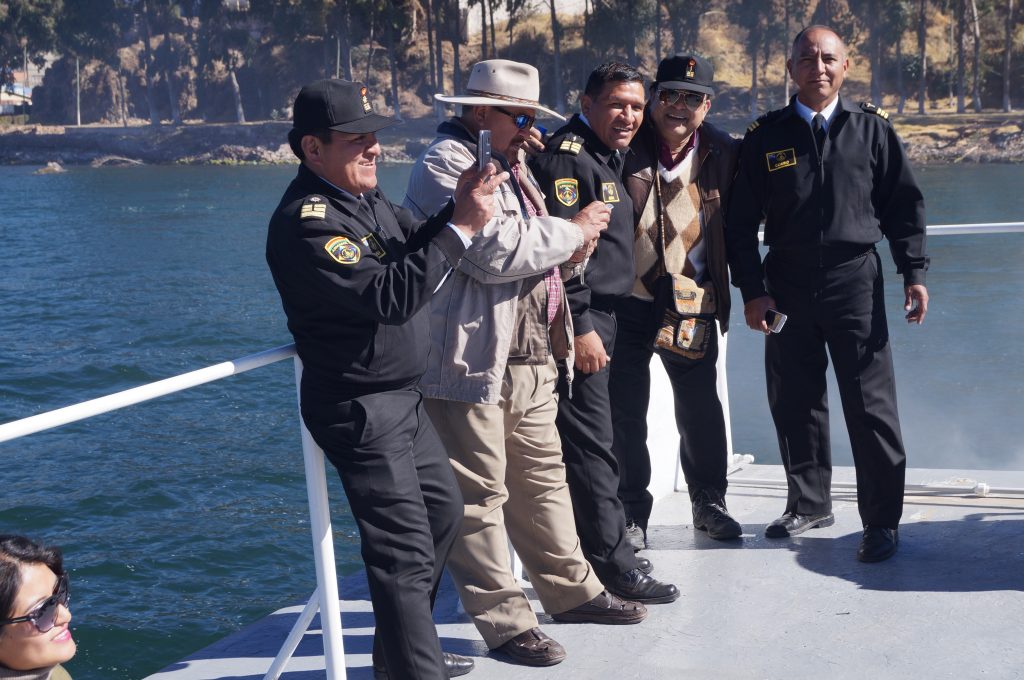
A pre-recorded lecture by Dr. Sadykova from the Institute of Mountain Physiology National Academy of Sciences, Kyrgyz Republic described the neuroendocrine changes occurring at altitude. Among those, elevated norepinephrine, dopamine, serotonin, TSH and T4, and a reduction of testosterone and T3 were noted.
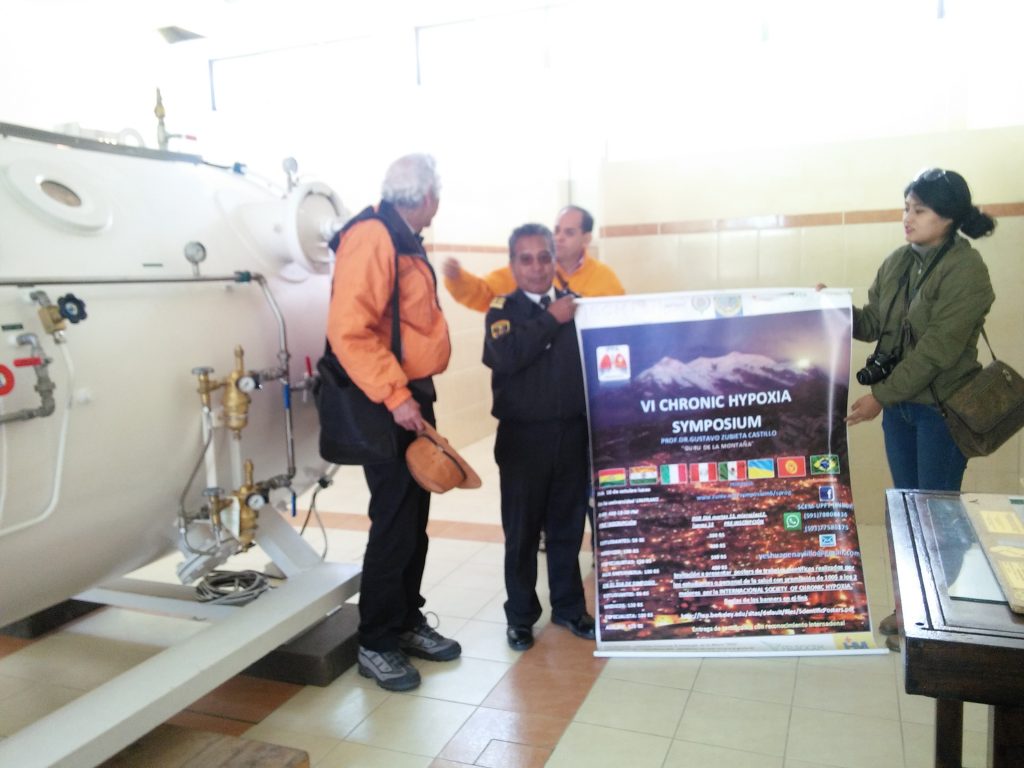
KVR Tagore, President of LESAAT, then described “Mountains – Law – Ethics ,” and discussed the importance of protecting mountains as precious resources through sustainable tourism.
Finally, Willy Eduardo Cortez Hemzler took time to finish his lecture from Monday on Tiwanku and the code of 0.466.
After these presentations, attendees returned to La Paz at Unifranz and viewed the poster competition entries. Two were granted the first prize of 100 US$ donated by Prof. Thuppil Venkatesh, President of the International Society of Chronic Hypoxia. These were: “Development and validation of new sepsis criteria at high altitude” by Dr. Walter Calderon-Gerstein, and “Spirometry values of high-rise residents” of La Paz, Bolivia by one of the medical students.
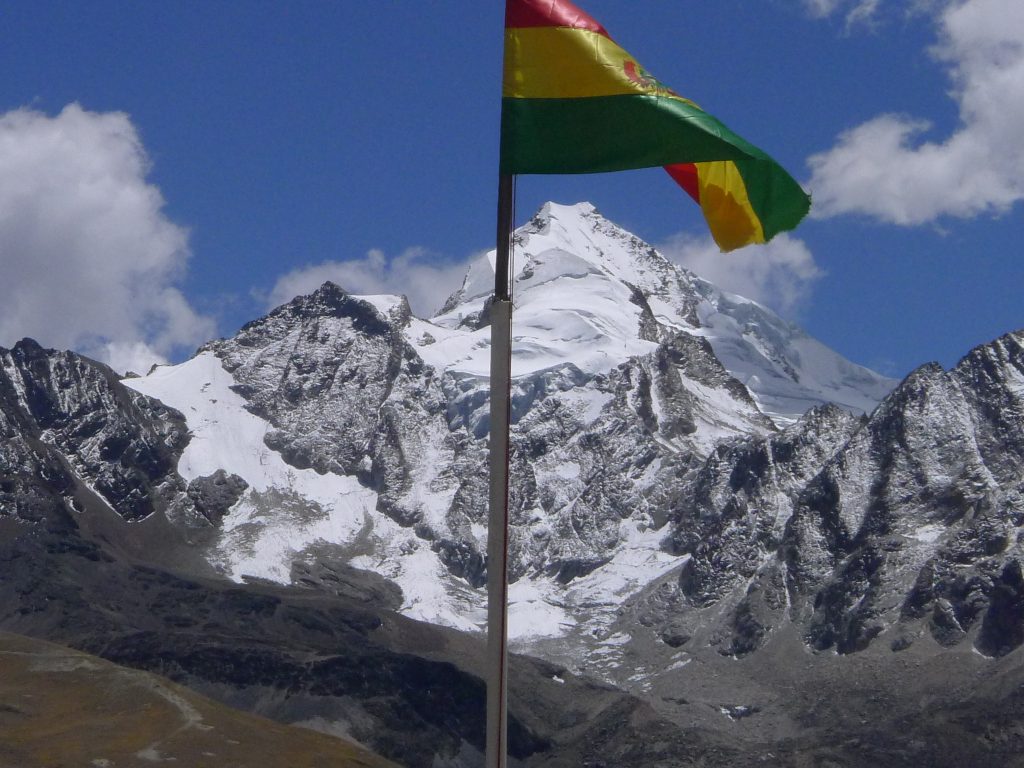
On Thursday, October 11, participants traveled initially to the Refugio of Huayna Potosi and later to Chacaltaya (5260m). Scores of llamas and alpacas were photographed by the curious attendees, some of whom even got to view a glimpse of the shy and reclusive vicuña!

In Chacaltaya, Nam Deo of Bangalore, India gave a talk “Vihangam Yog helps in high altitude chronic hypoxia” and led the group in meditation on the shoulder of the mountain.
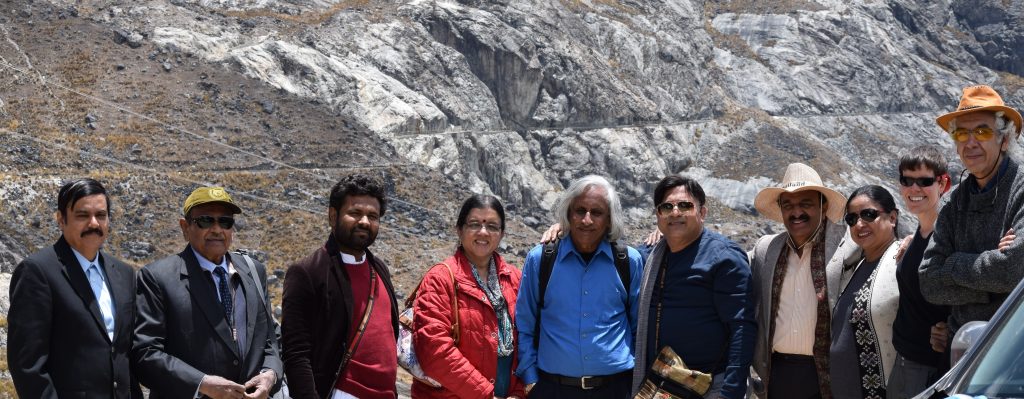
Interestingly, one of the participants reported that her pulse oximetry reading increased from 89% to 93% after the meditation session, Dr. Zubieta-Calleja, explained that as reported in one of his papers, breath holding at high altitude can momentarily increase the SpO2 to even sea level values of 98%.. Dr. Thuppil Venkatesh then gave a speech about “Life in high altitude conditions.” Prof. Sadashivaya, gave an interesting talk about the importance of “forestation at high altitude”. Prof. Nanjapa of the Hindu Newspaper talked about high altitude and the media, K.V.R Tagore talked about philosophical aspects of mountain climbing. Prof. Satish Jain also mentioned about his experience with high altitude.
Finally Prof. Dr. Gustavo Zubieta-Calleja, gave a talk about the evolution of high altitude medicine, the tolerance to hypoxia at high altitude and thanked everyone for participating in this outstanding symposium, where the visit to different altitude sights to show normally developing life is a one of the fundamental objectives of defeating the wrong concepts of hypoxia.
All these talks filmed outdoors with the Chacaltaya Pyramid “the highest laboratory in the world 5250m)” (shown in the background), created by the late Prof. Dr. Gustavo Zubieta-Castillo and his son Prof. Dr. Gustavo Zubieta-Calleja, in conjunction with the Club Andino Boliviano.
Upon returning to La Paz, a dinner and closing ceremony was held at the residence of Prof. Dr. Gustavo Zubieta-Calleja in the southern residential area of Calacoto. It was a special gathering where Dr. Satish Jain assisted in preparing some food from India, along the food that Lucrecia De Urioste with her assistant, Lucia, Natalia and Rafaela so beautifully presented for all those attending. Some talks also took place here.
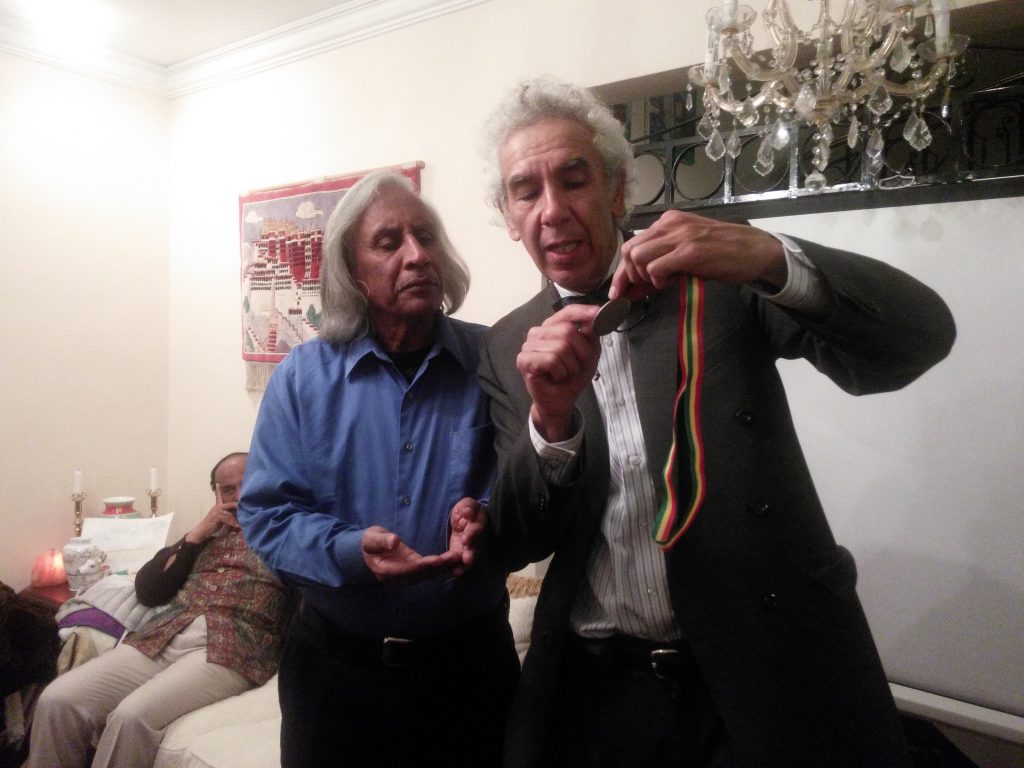

Dr. Giuseppe Misserochi presented Dr. Zubieta-Calleja with a gift of a water color painting of the Cordillera, that he personally painted while enjoying the beatufil mountains around La Paz.
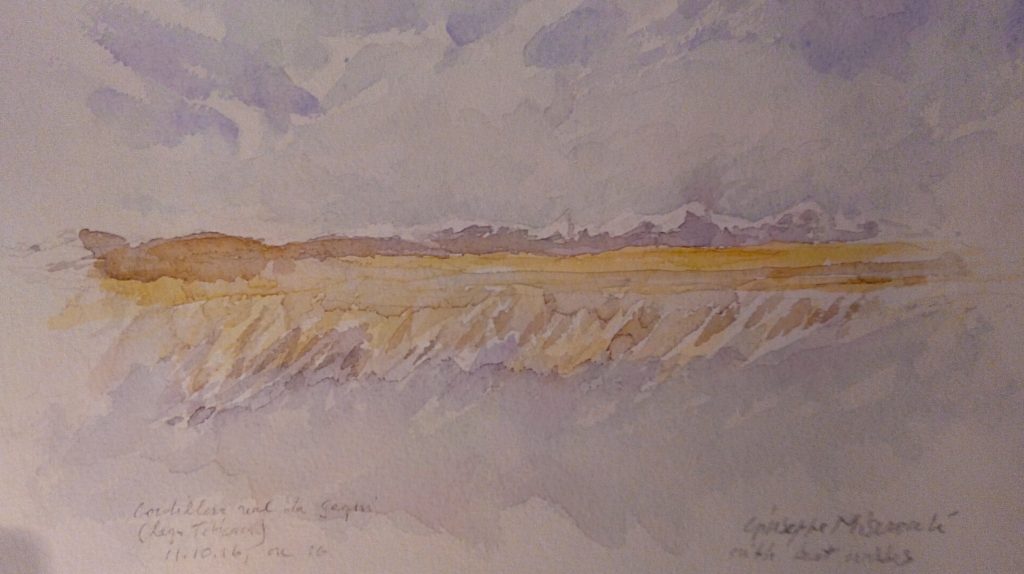
Nam Deo from India, leaded everyone in a meditation session in the living room.
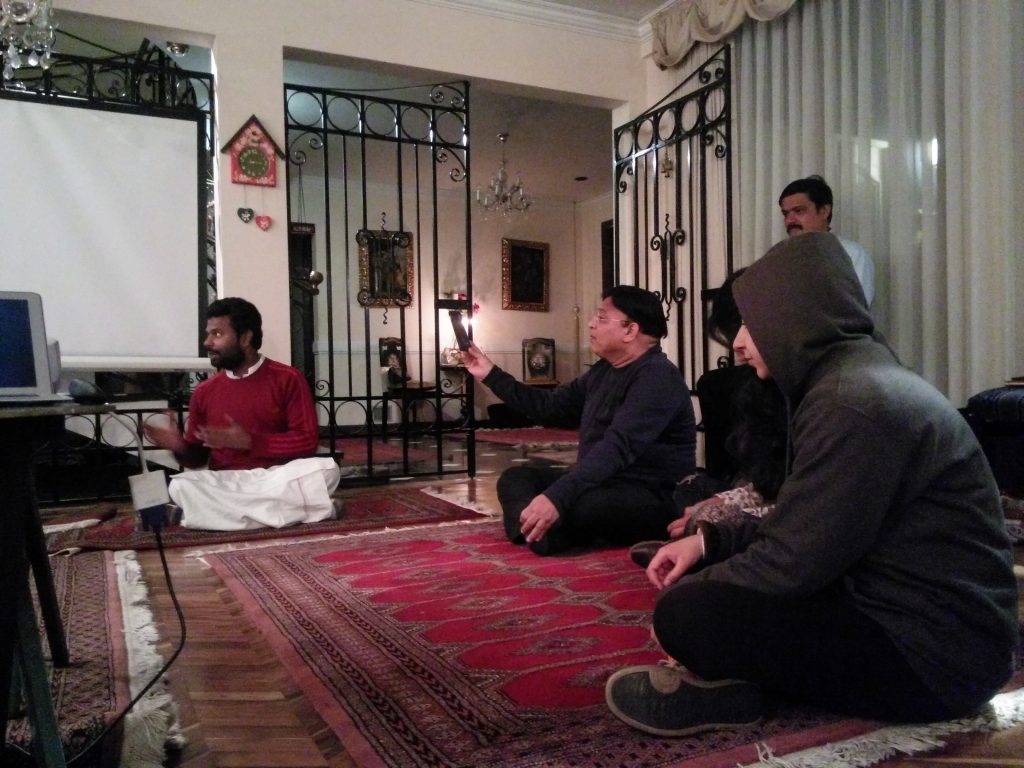
Awards and certificates were presented and the Symposium was closed.
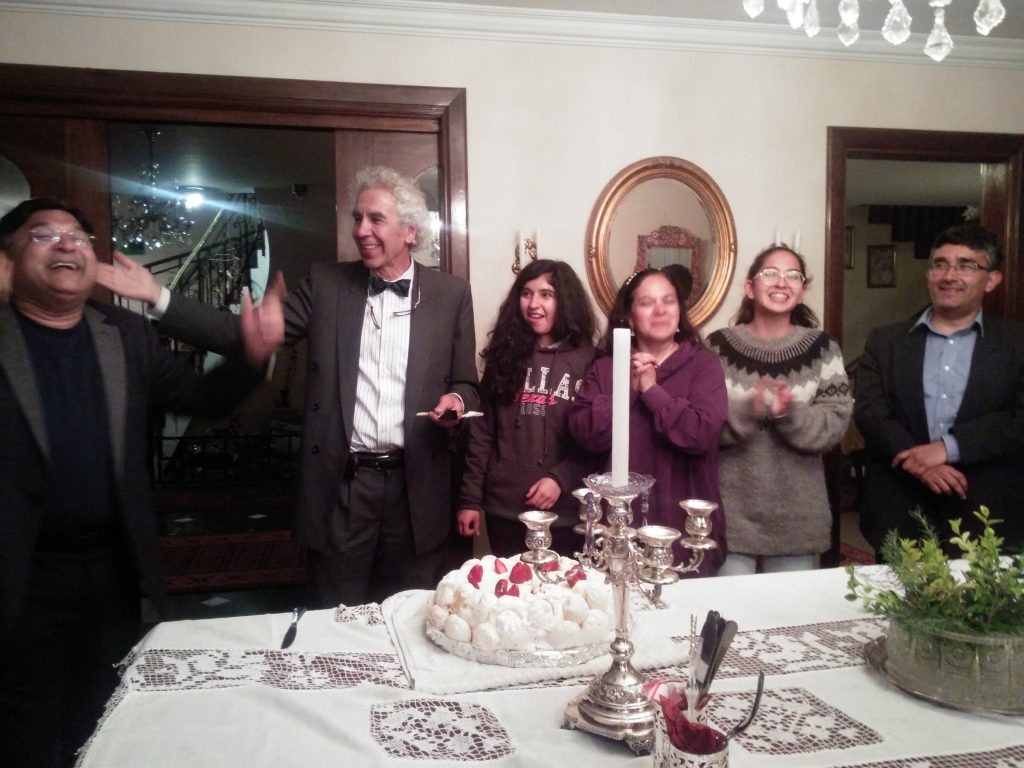
The colleagues and friends from India, joined us in a trip to visit the incredible Salt Lake, Potosi and Sucre. Life at high altitude flourishes everywhere!
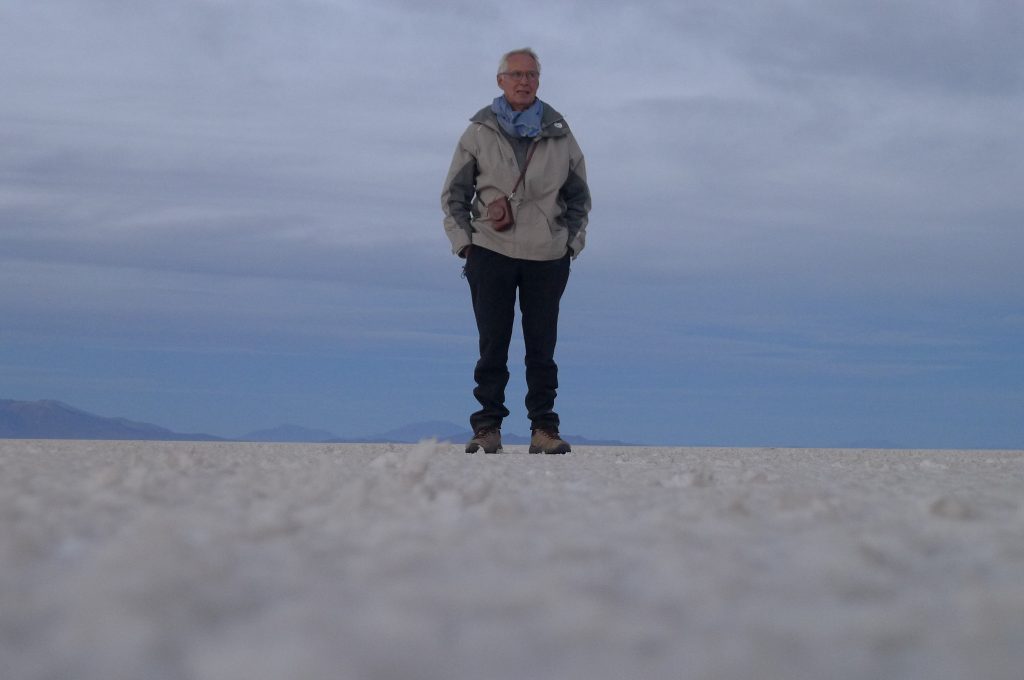
See you in the VII Chronic Hypoxia Symposium in two years!!
written by Annie Wislowski
Edited by Prof. Dr. Gustavo Zubieta-Calleja
Chronic Hypoxia Symposium VI
And about disease at high altitude?
High Altitude Pulmonary and Pathology Institute IPPA
La Paz, Bolivia

